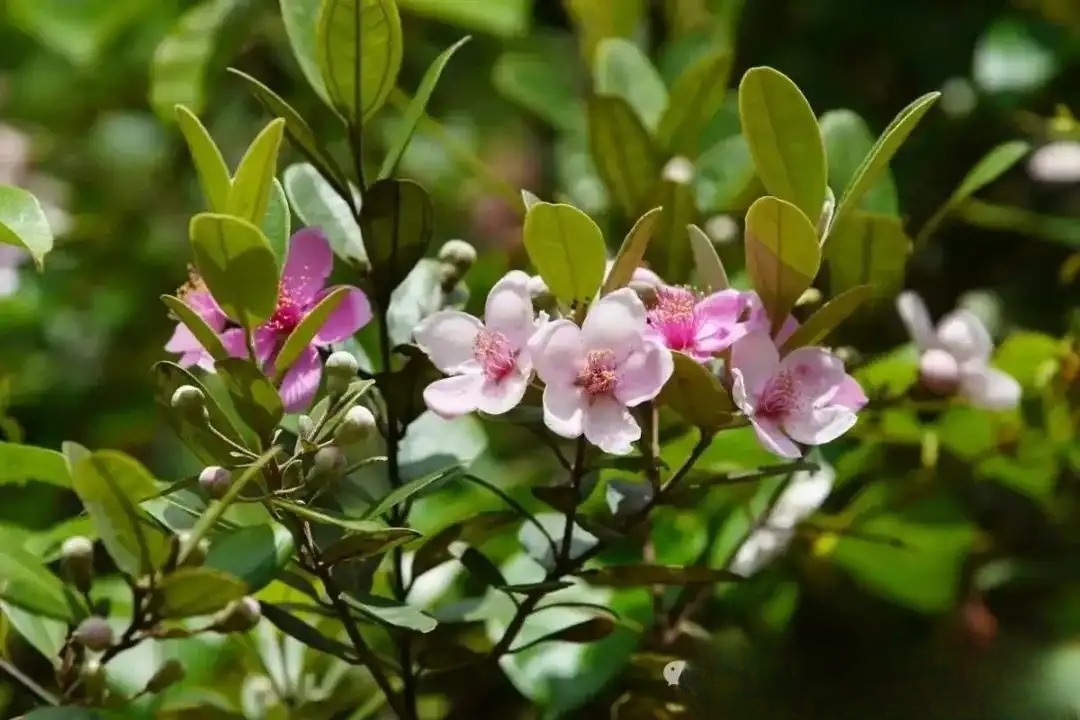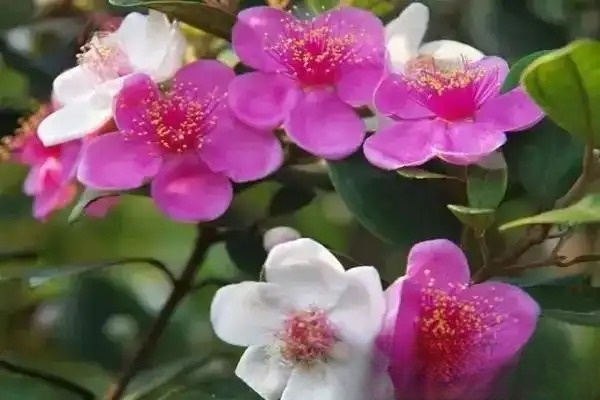1. Red Loropetalum: Also known as red yokewood and red loropetalum flower. It is an evergreen shrub or small tree of the Hamamelidaceae family. The young branches are covered with dark red star-shaped hairs. The leaves are alternate, leathery, ovate, and entire. The young branches are light red, and the old leaves overwinter are dark red. The flowering period is from April to May, and the fruiting period is from September to October. It likes light and is slightly shade-tolerant, but the leaves tend to turn green in shade. It has strong adaptability and is drought-resistant. It likes warmth and is cold-resistant. It has strong germination and branching ability and is resistant to pruning. It is resistant to barrenness, but is suitable for growing in fertile, moist, slightly acidic soil. It is an ornamental tree with beautiful flowers and leaves. It is often used for color block arrangement or pruned into a sphere, and is also a good material for making bonsai.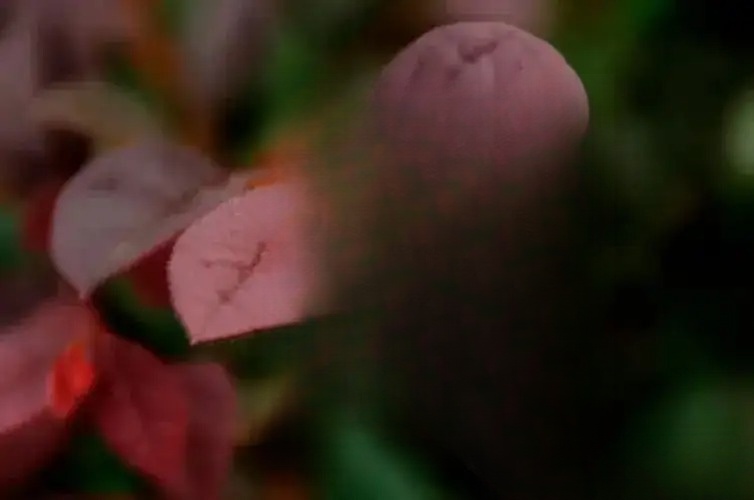
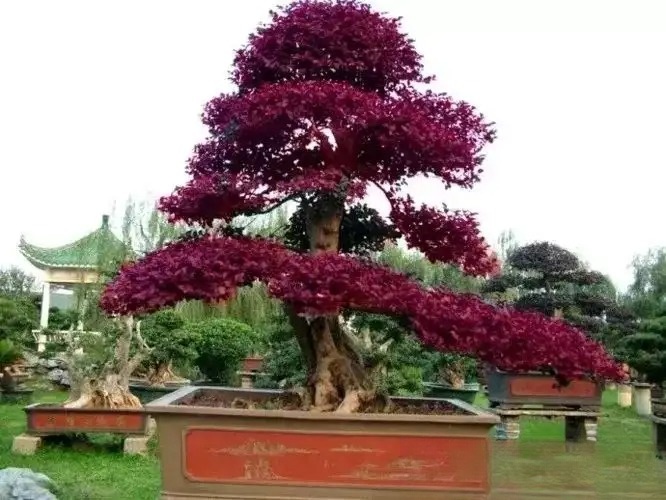
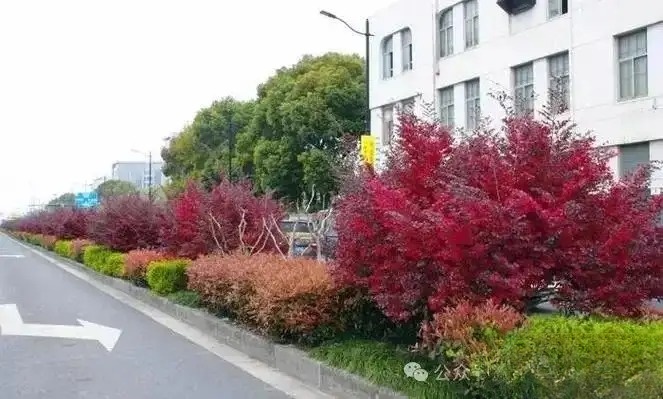
2. Forsythia suspensa : Verbenaceae, Forsythia genus. Evergreen shrub. Many branches, not upright, semi-climbing, with thorns or no thorns. Leaves are opposite, with serrated edges. Long flowering period, from mid-April to mid-December, with flowering period from May to September. Small flowers, high-footed saucer-shaped, blue-purple, quiet and delicate, deeply loved. Fruits are round or nearly ovate, with a pointed beak at the top, and fruits are produced all year round, with June to November as the peak period of maturity. It likes warm and humid climate, has low cold resistance, and will suffer from cold damage when encountering long-term low temperature of 5~6℃ or short-term frost. In the vast areas of southern and northern China, as well as central and northern China, it is only suitable for potted plants, greenhouses or indoors to protect against cold wintering, and the room temperature is not lower than 8℃. It likes light and is also tolerant to semi-shade. It has strong adaptability to soil, and is suitable for sandy soil, heavy clay soil, acidic soil or calcareous soil. It likes fertilizer and grows poorly in barren land. It is resistant to water and humidity but not drought. It has strong sprouting ability. The branches can be twisted according to the ornamental requirements, or it can be pruned heavily in spring every year to facilitate the sprouting of new branches that year and avoid the loose and messy crown. The old stems can also be cut off to cultivate pile landscape.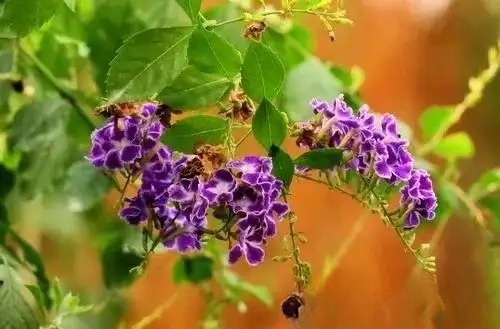
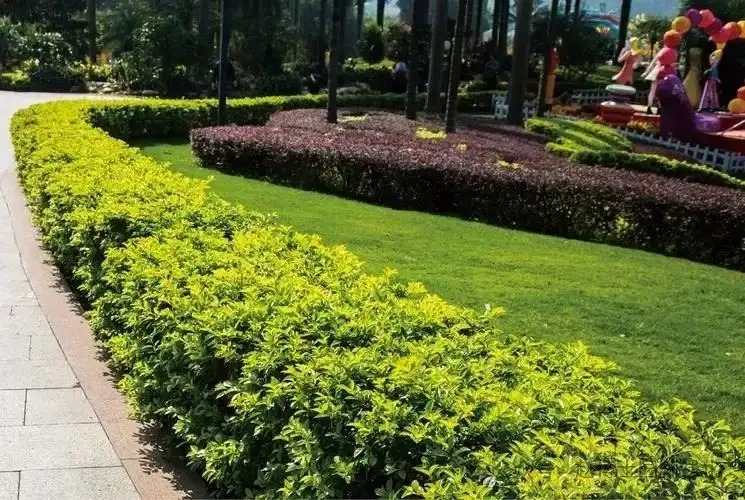
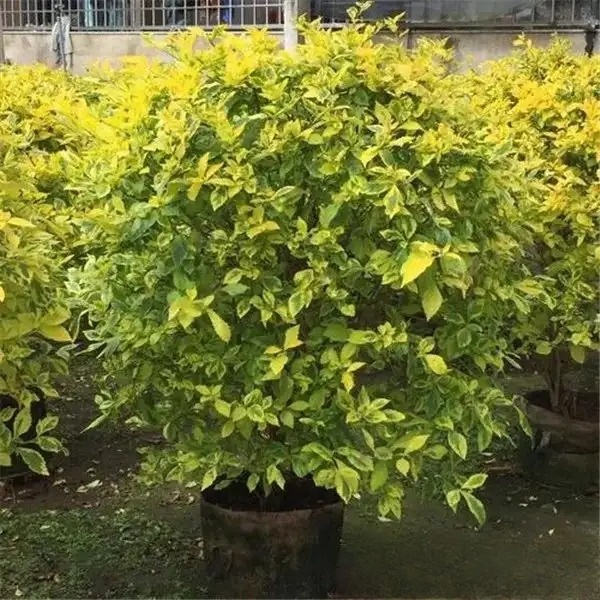
3. Pittosporum: Pittosporum genus, Pittosporum family, evergreen shrub or small tree, up to 3 meters high. The branches and leaves are densely grown, and the crown is sparse. Most of the leaves are clustered at the top of the branches, and the single leaves are alternate, sometimes in whorled shape at the top of the branches. They are thick, leathery, narrowly obovate, 5-12 cm long, 1-4 cm wide, entire, obtuse or concave at the top, wedge-shaped at the base, and the edges are often slightly curled outwards, with petioles, bright green on the surface, and new leaves are yellow and tender. The cymes are terminal; the flowers are white or yellow-green, fragrant, and the pedicels are 0.8-1.5 cm long. The flowering period is May, and the fruit ripening period is September-October. It is a subtropical tree species, so it likes warm and humid marine climates, likes light, and is also relatively shade-tolerant. It is not strict with soil requirements, and can adapt to clay, sandy soil, alkaline soil and neutral soil. It has strong germination ability and is resistant to pruning. In places with warm climates, this species is an ideal flowerbed landscaping tree or gardening tree species, especially suitable for planting in coastal areas. It is often used as a foundation plant for houses and hedges. It is grown in pots for viewing in the north and in greenhouses for wintering.
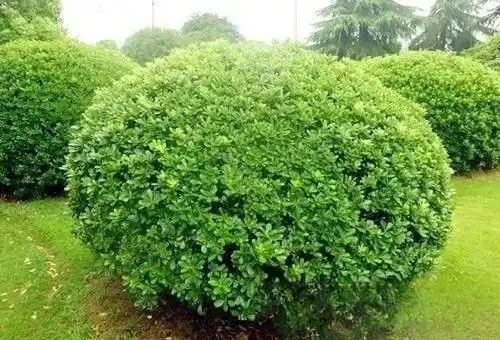
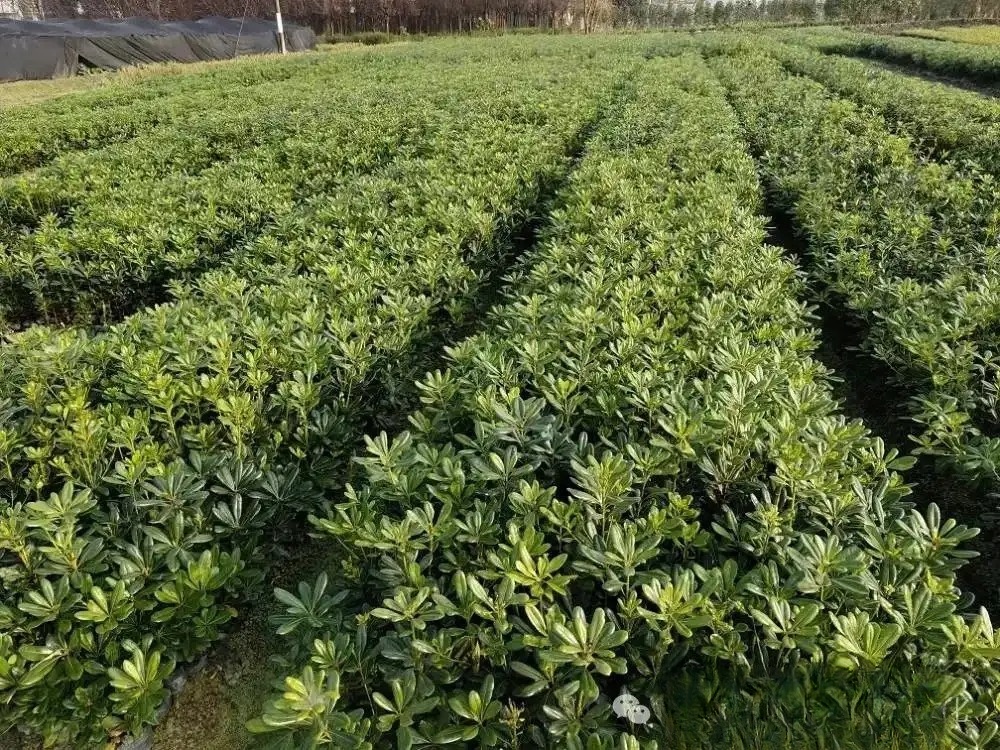
4. African jasmine: It belongs to the genus Loganaceae, an evergreen shrub or small tree. It can grow to 5 to 12 meters in the garden and is often epiphytic. The leaves are opposite, grassy, oblong, elliptical or obovate, with a gradually pointed tip. The upper surface is dark green, and the back is yellow-green. The inflorescence is upright and terminal, with 1 to 3 flowers, a very short peduncle, a white corolla, funnel-shaped, fragrant, and the entire corolla is in the shape of a small trumpet. It likes warmth and sunshine, but requires avoiding strong direct sunlight in summer; it likes an environment with high air humidity and good ventilation, and is not resistant to cold, dry freezing and drastic drops in temperature; it grows best in loose, fertile, and well-drained loam; it has strong germination and tillering ability, and is particularly resistant to repeated pruning. The flowering period is May, and the fruiting period is October to December.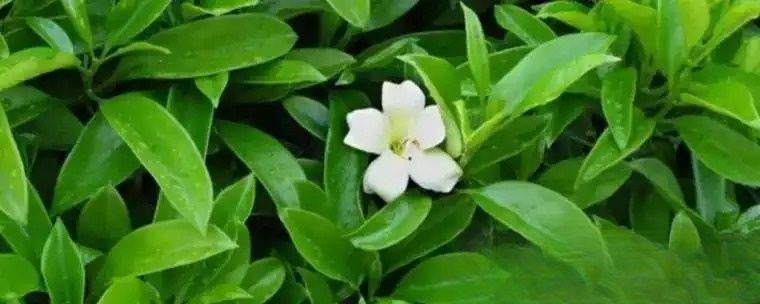
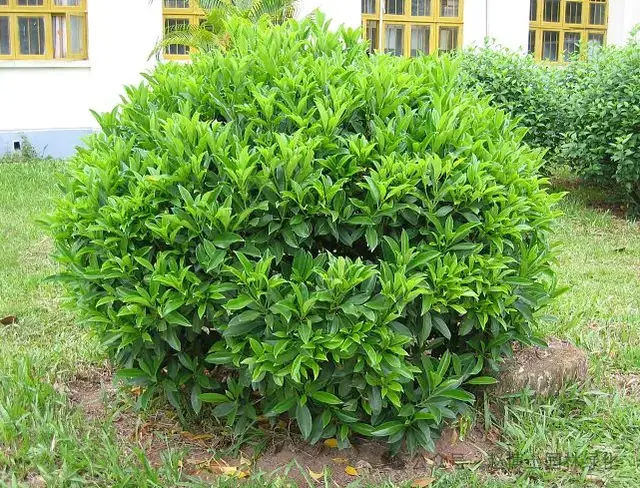
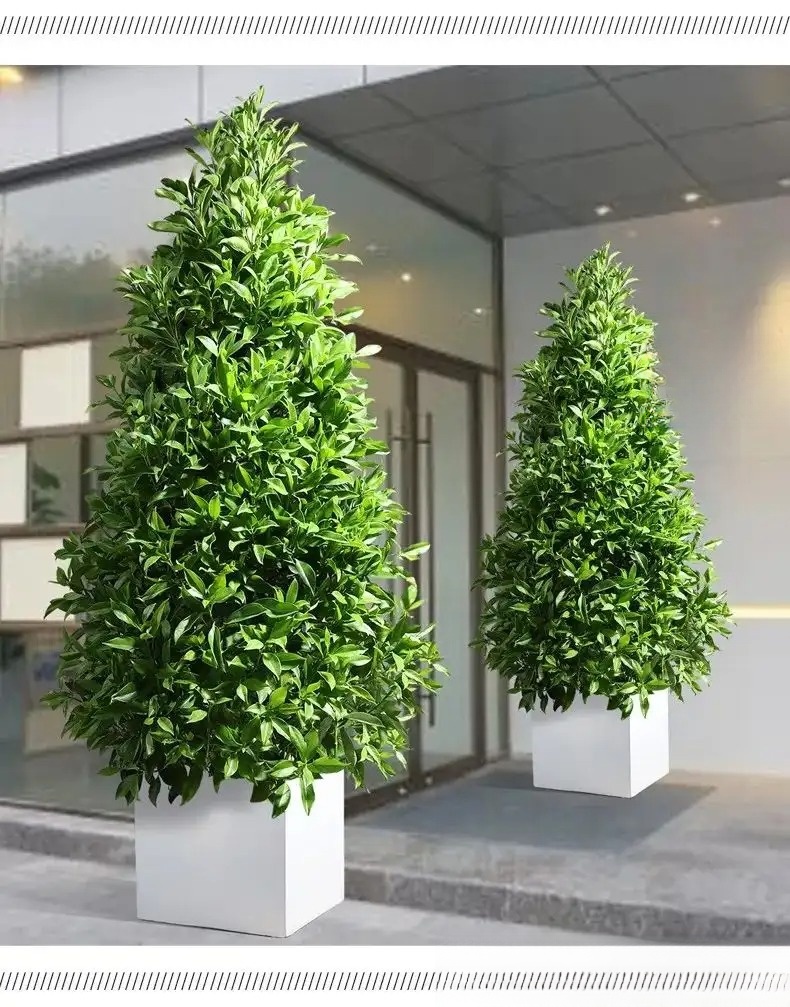
5. Ligustrum lucidum: Ligustrum lucidum of Oleaceae, evergreen shrub, with gray and smooth bark. Branches spread out and hairless. Leaves are leathery, broadly ovate to ovate-lanceolate. Panicles are terminal, flowers are white, and drupes are oblong and blue-black. Flowering period is June to July. It has good cold resistance, water and humidity resistance, likes warm and humid climate, likes light and tolerates shade. It is a deep-rooted tree species with well-developed fibrous roots, fast growth, strong germination ability, and tolerance to pruning, but not to barrenness. It has strong resistance to air pollution, sulfur dioxide, chlorine, hydrogen fluoride and lead vapor, and can tolerate high dust and smoke pollution. It is not strict with soil requirements, and it is suitable for cultivation in sandy loam or clay loam. It can also grow in red and yellow loam. It is not strict with climate requirements, and can withstand low temperatures of -12℃, but it is suitable for planting in moist, leeward and sunny places. Ligustrum lucidum is a common ornamental tree species in gardens. It can be planted alone or in groups in the courtyard, or as a street tree. Because of its strong adaptability, fast growth and tolerance to pruning, it is also used as a hedge. Generally, it takes 3 to 4 years to take shape and achieve an isolation effect.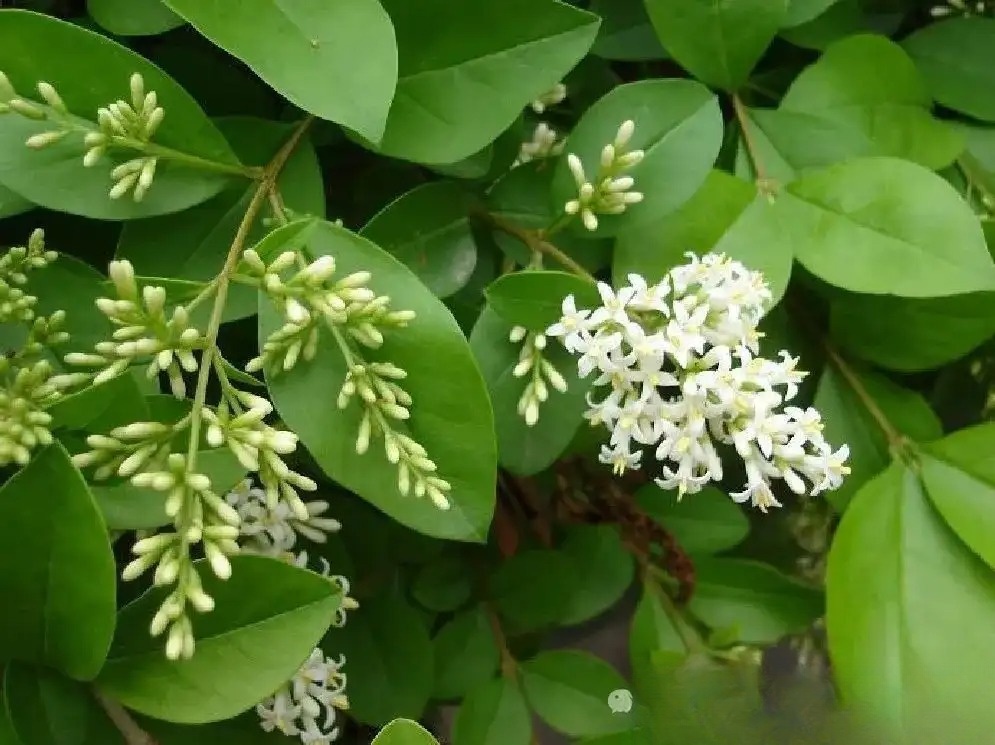
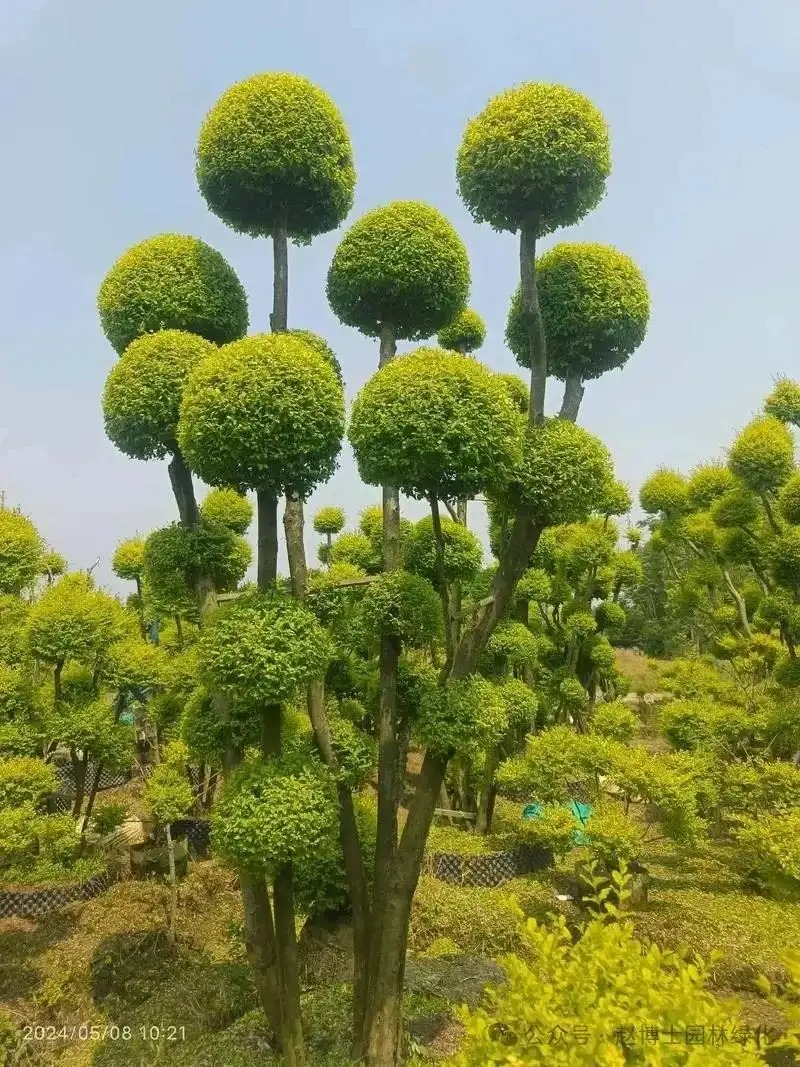
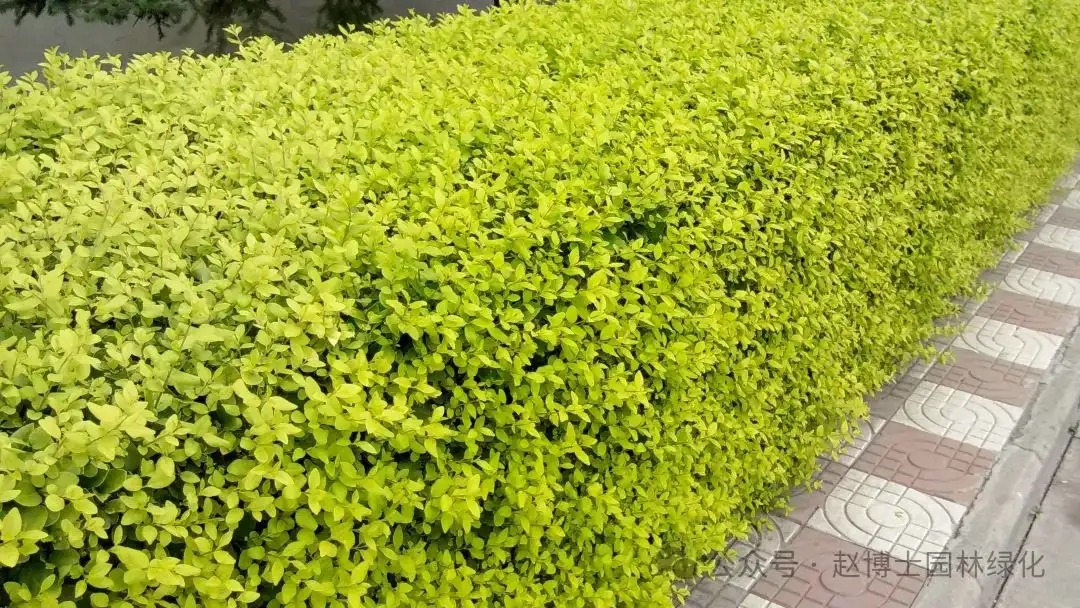
6. Weeping fig: Moraceae Ficus, evergreen shrub or small tree. Plant characteristics The plant can reach tens of meters, with an upright, gray trunk and a conical crown. The branches are easy to grow roots, the twigs are curved and drooping, and the whole plant is smooth. The leaves are elliptical, alternate, with wavy edges, pointed tips, and rounded or blunt bases. It is mainly for viewing and is an ornamental plant. Flower characteristics The leaves are more obvious from late February to late April. It is a positive plant, ideal for full-day, sufficient sunshine, and more vigorous growth. The best soil for cultivation is loam or sandy loam, and good drainage is required. The suitable temperature for growth is high temperature and humidity, drought and humidity resistance, warm and windproof in winter, and the suitable temperature for growth is about 22 to 30 degrees Celsius. Prevent cold damage below 10 degrees. Suitable for potted plants, street trees or shade trees, or as a shaping tree.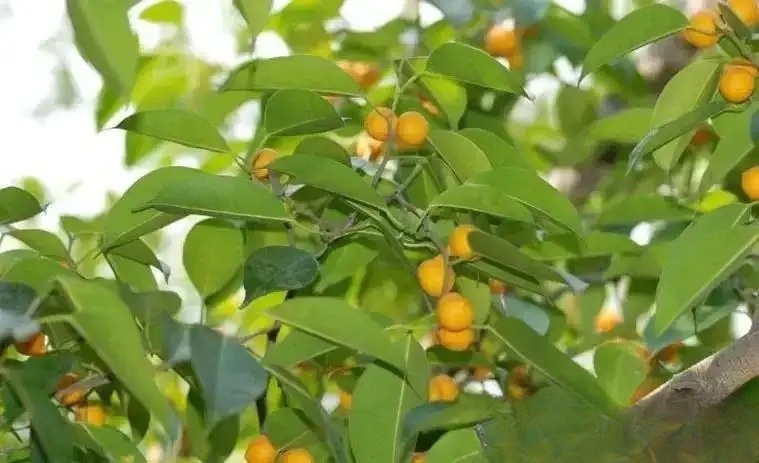

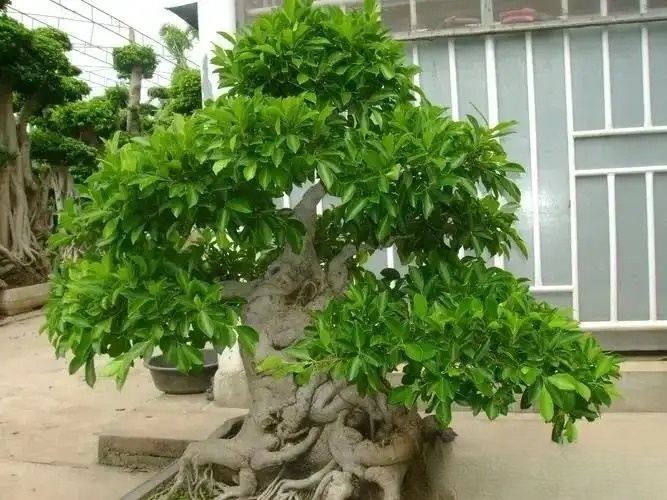
7. Azalea: Azalea genus of Ericaceae, also known as red azalea, azalea, rhododendron, deciduous shrub, about 2 meters high; branches, bracts, pedicels and flowers are all covered with brown flat rough hairs. The leaves are papery, ovate-elliptical, the corolla is bright red or dark red, wide funnel-shaped, 4-5 cm long, flowering period is April-May, and the fruit ripening period is October. It is an indicator plant for acidic soil. It likes a cool, moist, ventilated semi-shady environment, and is afraid of both heat and cold. The suitable growth temperature is 12℃ to 25℃. If the temperature in summer exceeds 35℃, the new shoots and new leaves will grow slowly and be in a semi-dormant state. It should be protected from the sun and shaded in summer, and should be kept warm and cold in winter. Avoid exposure to the sun, and it is suitable to grow under scattered light with low light intensity. If the light is too strong, the tender leaves are easily burned, and the new leaves and old leaves are burnt. In severe cases, the plant will die. In winter, measures should be taken to prevent cold when cultivating azaleas in the open field to ensure their safety during the winter. Among the ornamental azaleas, the western azalea has the weakest cold resistance and is prone to frost damage when the temperature drops below 0℃. The tubular flowers are in a variety of colors, including deep red, light red, rose, purple, and white. When azaleas bloom in spring, the whole mountain is bright, like colorful clouds around the forest. It is often used as a garden shrub, with a long flowering period and bright colors, and is an excellent flowering shrub.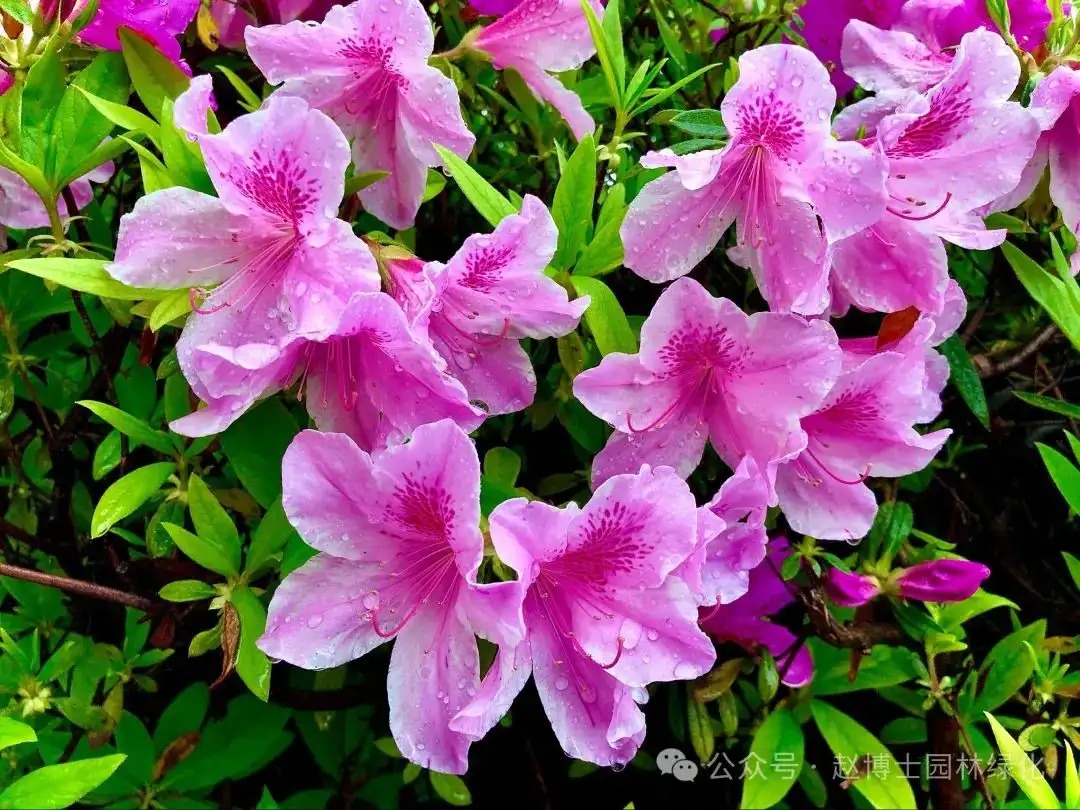
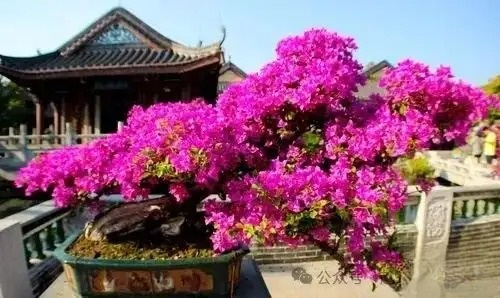
8. Belgian azalea: woody plant, genus Rhododendron, Ericaceae. Horticultural hybrid. Evergreen shrub with short branches and leaves. Leaves are alternate, oval, and entire. Flowers are terminal, corolla is broad funnel-shaped, semi-double, rose red, water red, pink, or other colors. There are many varieties. The flowering period is mainly in winter and spring. It likes warm, humid, cool, ventilated and semi-shaded environment. Avoid direct sunlight in summer, shade, spray water frequently, and maintain air humidity. Reduce shading after September to October to facilitate flower bud differentiation. Air humidity should be 70% to 90%. Spray water during the growth and development period, and maintaining high air humidity is beneficial to the growth and flowering of Belgian azalea.
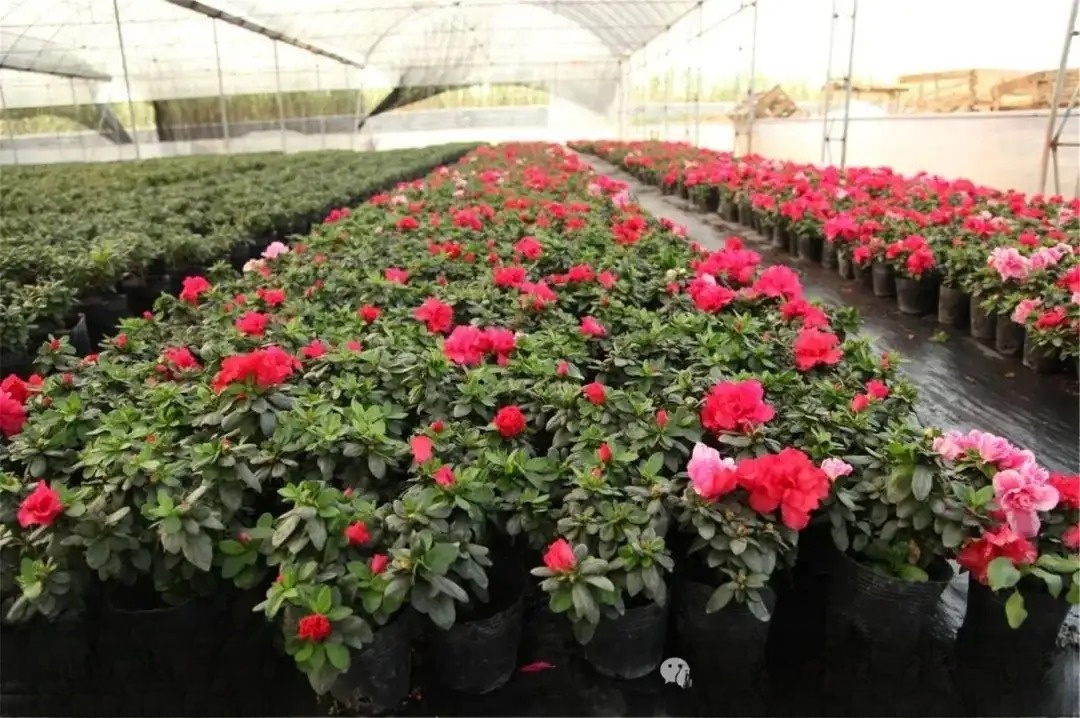
9. Hamamelidaceae Hamamelidaceae, evergreen small tree or shrub, up to 5 meters high, with spreading crown. The ends of young branches have star-shaped scales, and the terminal buds are crooked and dark brown. Single leaves are alternate, thick and leathery, smooth, elliptical or obovate, blunt at the top, neither wide and cuneate, smooth and hairless, with slightly raised veins on the back and entire margins. Flowers bloom in April-May, racemose inflorescence, bracts are needle-shaped. Few diseases and pests, and are resistant to low temperature and high heat, cold and waterlogging, and easy to shape. It is resistant to pruning, so it is often used as a shaping hedge in gardens, and can be planted in gardens for viewing, or planted in corners or beside stones to form a good landscape effect.
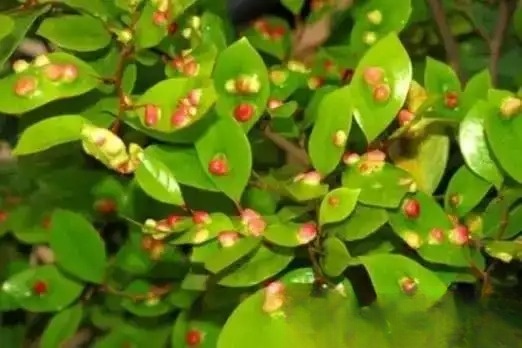
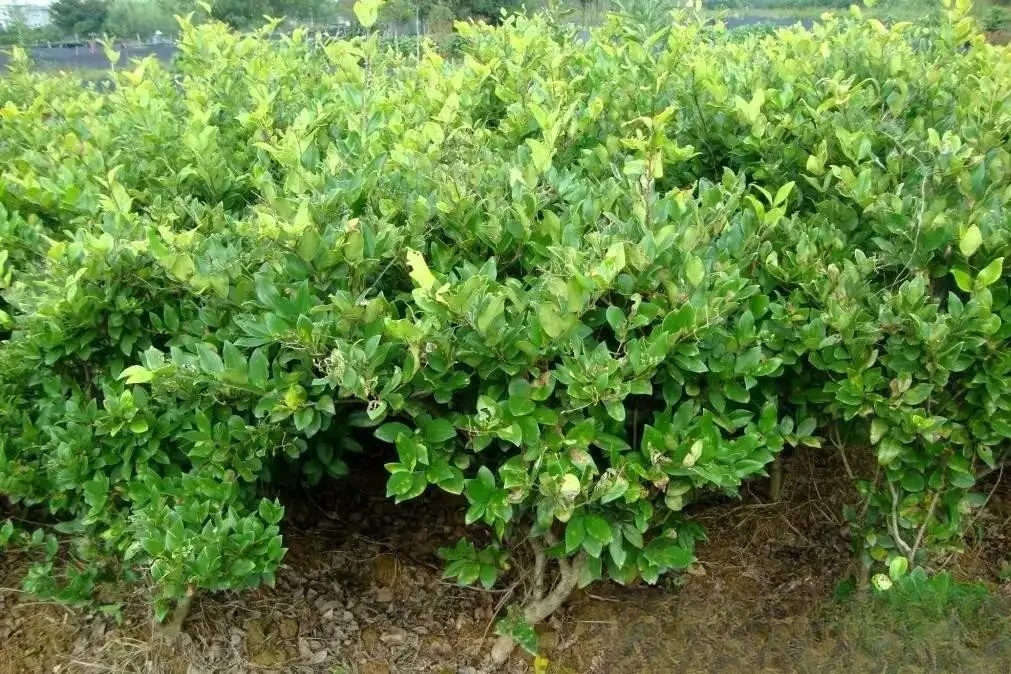
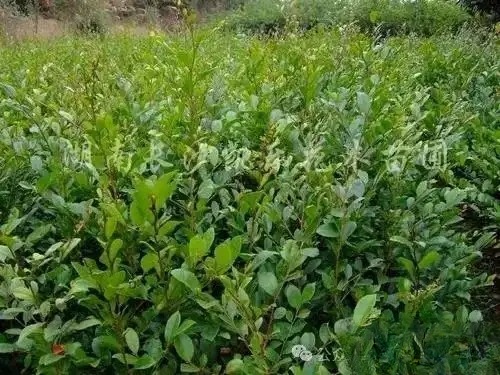
10. Schefflera arborescens (Schefflera arborescens): Schefflera arborescens of the Araliaceae family, an evergreen large tree or shrub, with a plant height of 30 to 80 cm under cultivation conditions, and up to 40 m in the place of origin. There are many branches and the branches are dense. Palmate compound leaves, 5 to 9 leaflets, oval, ovate-elliptical, 9 to 17 cm long, 3 to 5 cm wide, with long tips at the ends, leathery, dark green, and shiny. The flowers are small, mostly white, fragrant, and bloom in winter and spring; the berries are spherical, and the fruiting period is from December to January of the following year. It likes semi-shade, and the suitable growth temperature is 15 to 25 ° C. The minimum temperature in winter should not be lower than 5 ° C, otherwise it will cause the leaves to fall off. New leaves will appear in the spring of the following year. It grows well in an environment with high air humidity and sufficient soil moisture, but it has a strong adaptability to the dry climate in the north. Be careful not to lack water, otherwise it will cause a large number of leaves to fall off. Water should be properly controlled under low temperature conditions in winter. The plant has a plump and beautiful shape and strong adaptability, and is an excellent potted plant. Suitable for living room, study and bedroom. In spring, summer and autumn, it can also be placed in the shade of the courtyard and on the balcony of the building for viewing. It can also be planted alone in the courtyard. It is a nectar plant in the south in winter. The leaves and bark can be used as medicine.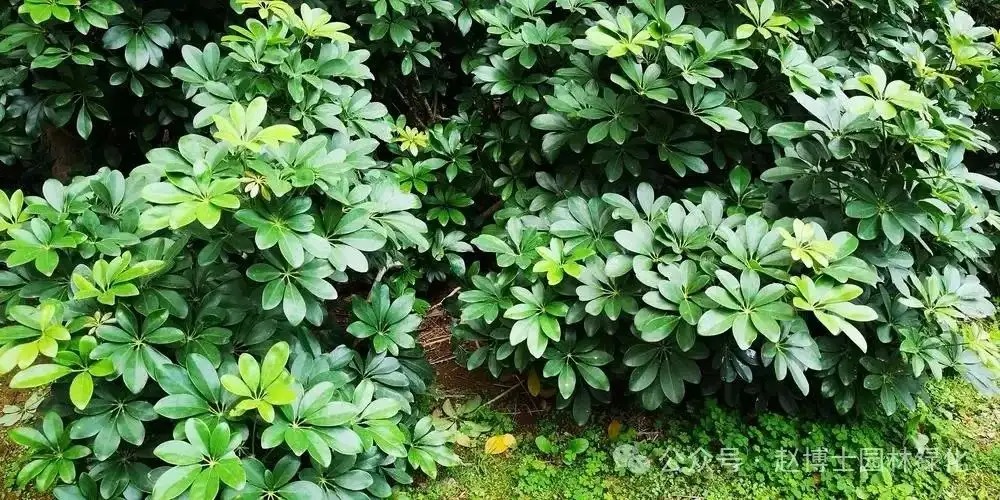
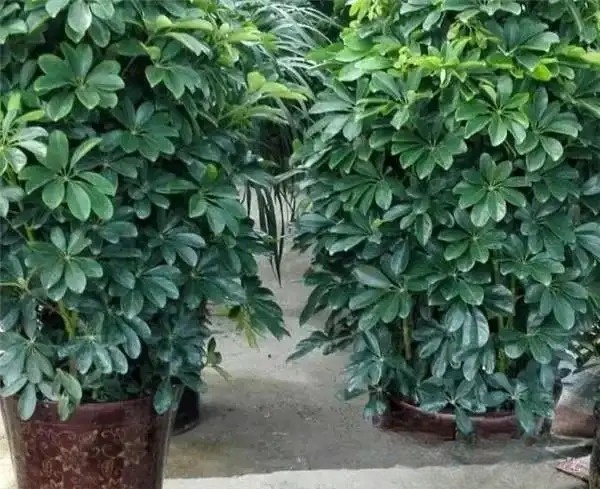
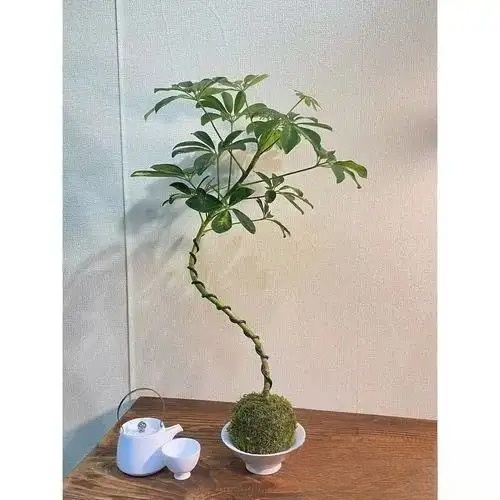
11. Tortoiseshell holly (Ilex doubanqing): A small evergreen shrub of the genus Ilex of the Aquifoliaceae family, a variant of Ilex obtuse, with many branches, gray hairs on the twigs, small and dense leaves, convex leaf surface, thick leathery, elliptical to obovate. White flowers, black spherical fruit. Shade-tolerant. Garden color blocks, bonsai, garden ornamental, solitary planting, clump planting, patch planting, block planting, can also be used as a hedge.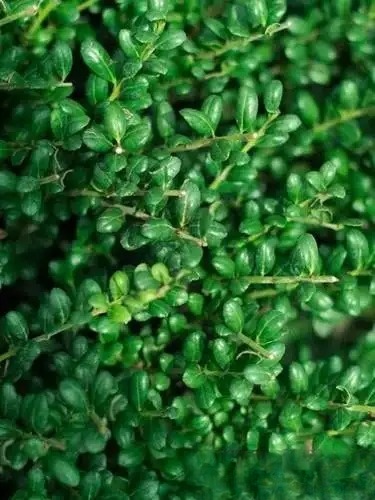
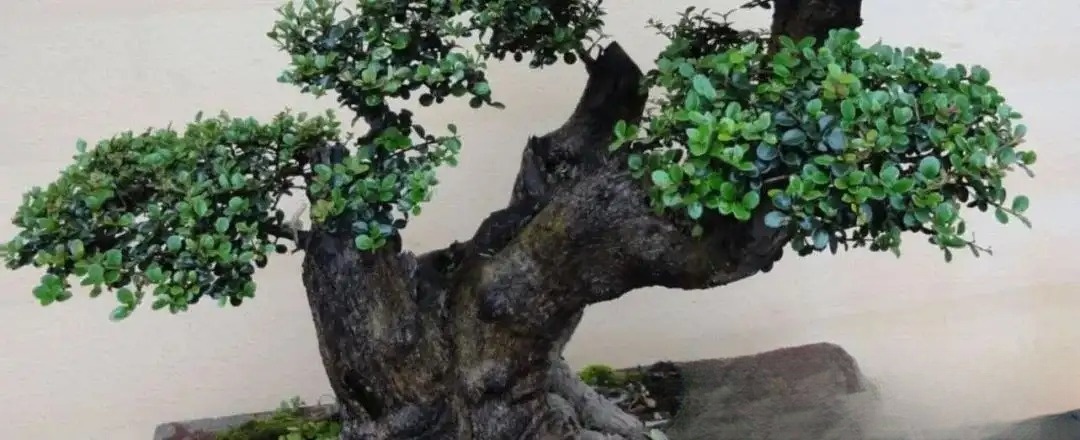
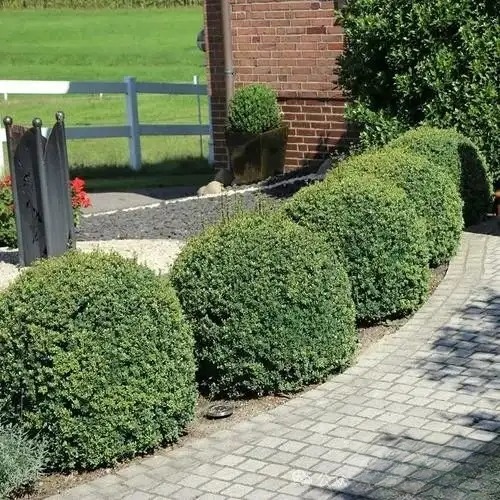
12. Nandina domestica: Nandina domestica of the Berberidaceae family is about 2 meters tall. It is upright and has few branches. The old stems are light brown and the young branches are red. The leaves are opposite, and the flowers are small and white. The berries are spherical and bright red and persist until February of the following year. It is an evergreen shrub, about 200 cm tall. The stems are upright and have few branches. The young branches are often red. The leaves are alternate. The flowering period is from May to June, and the fruit ripening period is from October to January of the following year. It is an evergreen shrub. It is an indicator plant for calcareous soil. It likes warm, humid and well-ventilated semi-shady environment. It is relatively cold-resistant. It can tolerate slightly alkaline soil. It likes warm and humid climates, but is not cold-resistant or drought-resistant. It likes light and tolerates shade. The leaves turn red under strong light. Nandina domestica has a beautiful tree posture, emerald green and lush. There are many red fruits, which are round and smooth. The leaves alternate between red and green with the seasons. It is a commonly used colorful shrub and is widely used in gardens.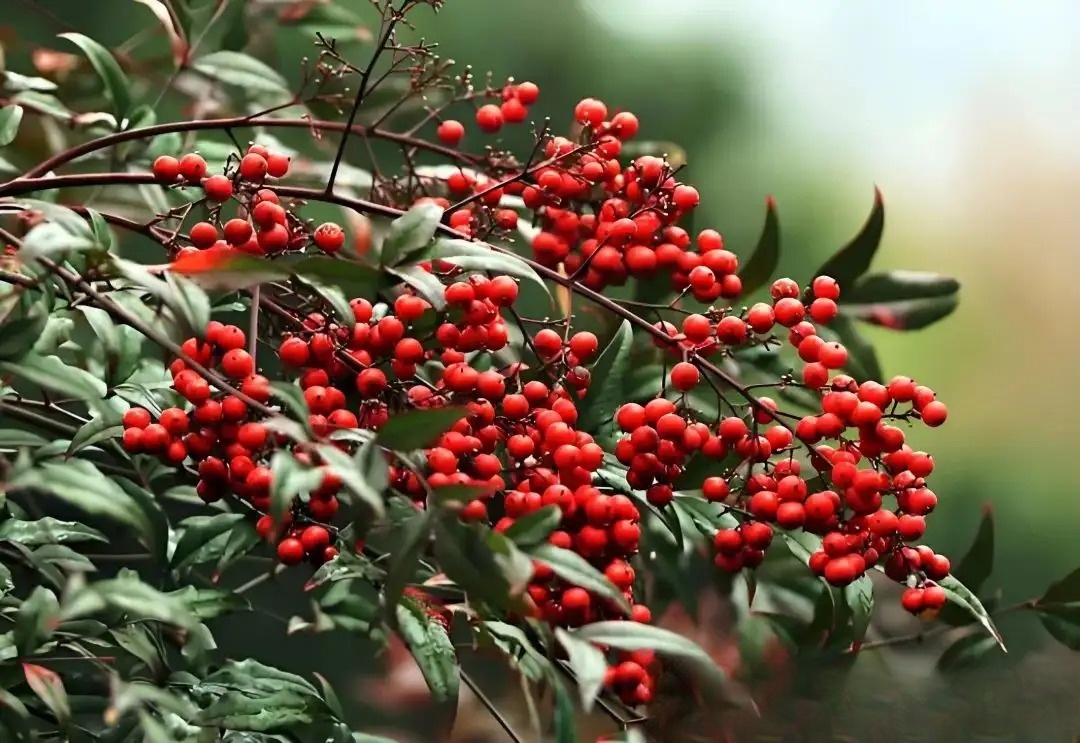
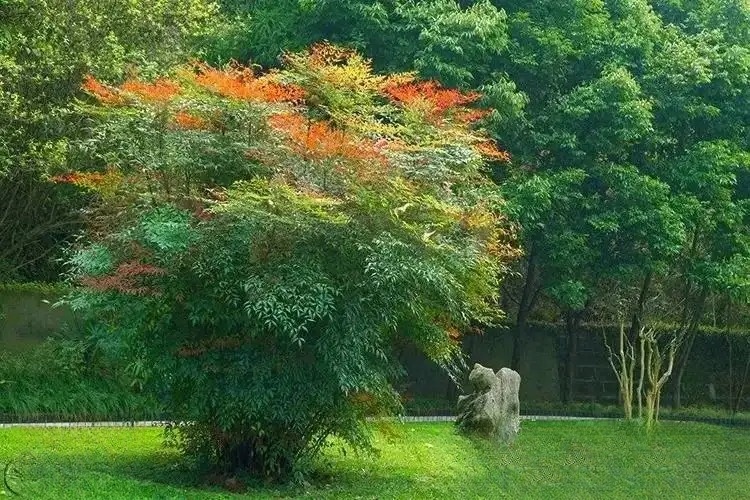
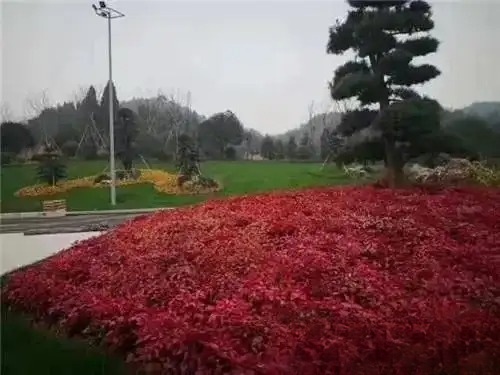
13. Milan: Meliaceae, Milan genus, evergreen shrub. Odd-pinnate compound leaves, 3-5 leaflets, leathery and shiny. Conical inflorescence grows in the axils of new shoots, small, yellow, fragrant flowers, blooming in summer. The commonly cultivated variant Milan has smaller leaves than Milan, dense flowers, can bloom continuously, and has a long flowering period. It likes warmth and avoids severe cold, likes light, avoids strong direct sunlight, is slightly shade-tolerant, and prefers fertile, humus-rich, well-drained loam. Repot once every 1 to 2 years, and fertilize once every 1 to 2 weeks during the growing period. Move indoors to a place with direct sunlight in winter, and the overwintering temperature should be above 10°C.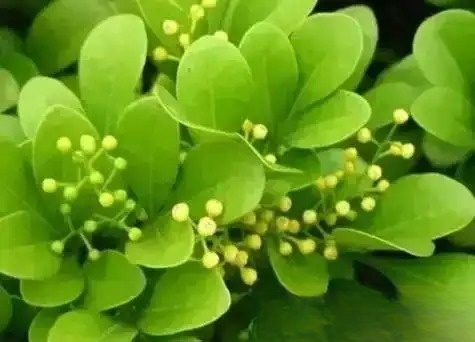
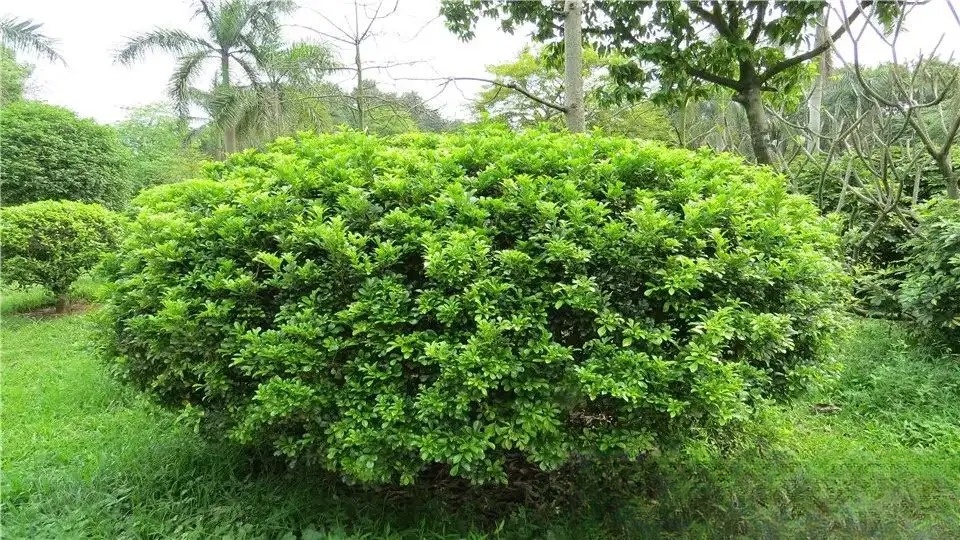
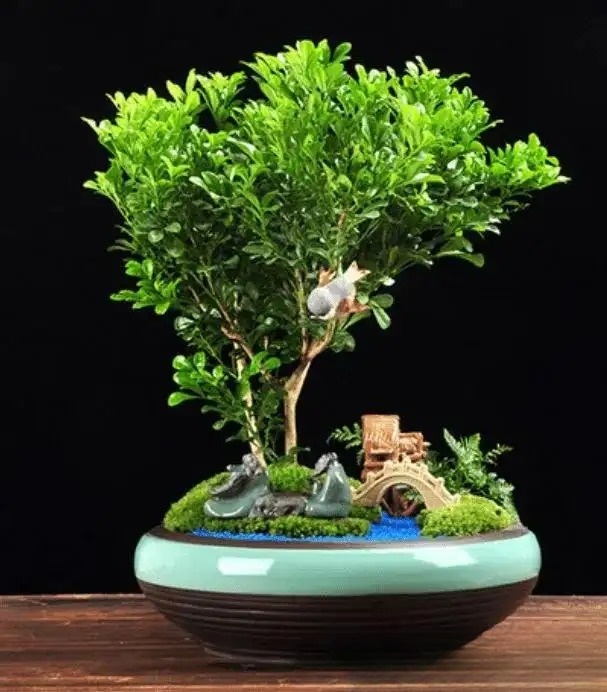
14. Nephrolepis: Nephrolepis genus, Nephrolepis family, medium-sized terrestrial or epiphytic fern, plant height is generally 30-60 cm. There are rhizomes underground, including short and upright stems, creeping stolons and spherical tubers. It is clustered lanceolate, with leaves 30-70 cm long and 3-5 cm wide, single pinnate compound leaves, and 40-80 pairs of pinnae. The newly born small compound leaves are fist-shaped, with silvery white hairs, which disappear after unfolding, and the mature leaves are leathery and smooth. The main vein of the pinnate compound leaves is obvious and centered, and the lateral veins extend symmetrically to both sides. The spore sori grows at the top of the upper side veins of the lateral veins of the small leaves, and the sori are kidney-shaped. It likes warm and humid conditions and cannot tolerate strong light. It is suitable for growing in neutral or slightly acidic loose soil rich in humus and good permeability. It likes warmth, but has a strong ability to adapt to temperature and can grow well from 10-35. It likes moisture and requires high soil and air humidity. This is an ornamental fern widely used at home and abroad. It is easy to cultivate, grows robustly, and can achieve good ornamental effects with rough management. It has an upright plant shape, with deep and peculiar compound leaves, dark green leaves that are evergreen all year round, and a natural and elegant shape. It has been widely used in landscaping in recent years.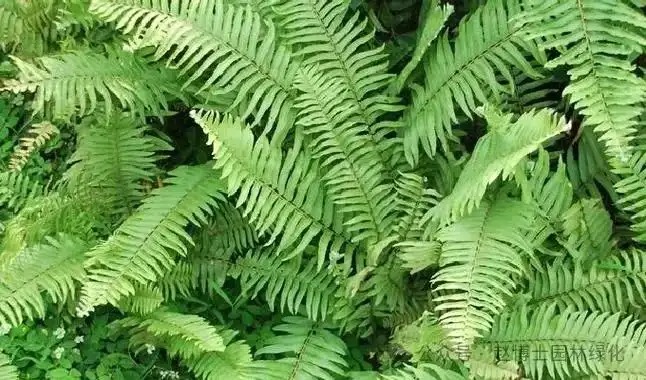
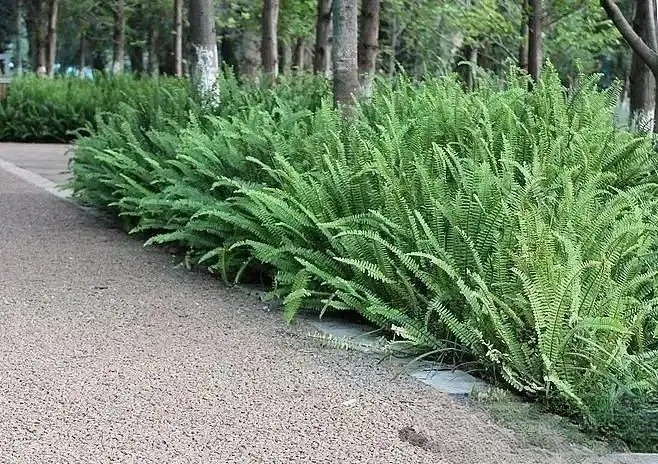
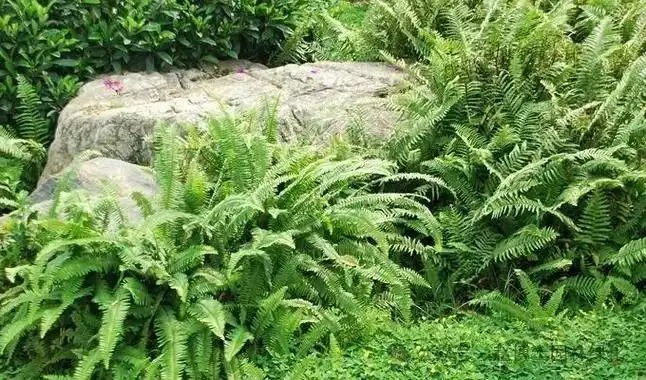
15. Red-leafed Photinia: Rosaceae Photinia, evergreen shrub, 4-6 meters tall, leathery leaves, oblong to obovate lanceolate, with a tail tip, new leaves in spring are bright red, turn green in summer, and turn red in autumn, winter and spring. The color is darker when the frost is heavy, and the color is better at low temperatures. The leaves are waxy, with irregular small serrations around them, and the leaf stalks at the top branches are bright red all year round. It has strong adaptability, is resistant to low temperatures, and is resistant to poor soil. It has a certain degree of salt and alkali resistance and drought resistance. It likes strong light and has strong shade tolerance, but the color is more vivid under direct light. In spring and autumn, the new shoots and young leaves of red-leafed Photinia are fiery red, with bright and lasting colors and great vitality. In the high temperature season in summer, the leaves turn bright green, bringing a refreshing and cool feeling in the hot summer. When used as a hedge, it looks like a fire dragon; when pruned and landscaped, it can have a variety of shapes, and the branches and leaves are always red and prosperous, pleasing to the eye, and the landscape effect is beautiful.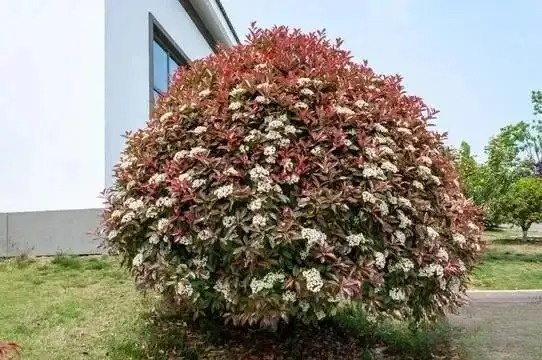
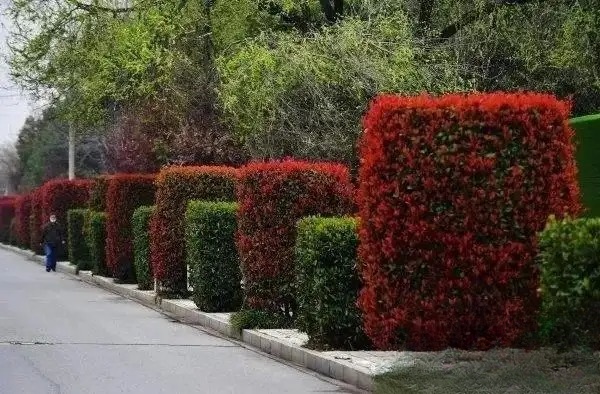
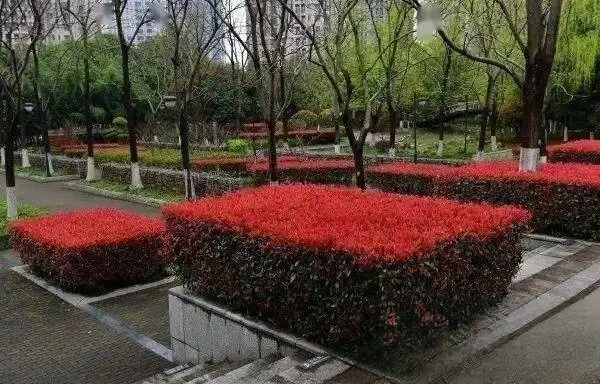
16. Spring Feather: Araceae Philodendron, formerly known as Feather-cleft Philodendron (Feather-cleft Philodendron), perennial herb. The plant height can reach 1 meter, with a thick and upright stem and a diameter of 10 cm. There are obvious leaf scars and wire-like aerial roots on the stem. The leaves extend in all directions from the top of the stem, with a petiole about 40 to 50 cm long. The leaf body is bright, thick and shiny, ovate and heart-shaped, and leathery. It is more shade-tolerant. It is one of the more cold-resistant species in this genus, with a suitable growth temperature of 18-25℃. It can withstand a low temperature of 2℃ in winter, but it is better to be above 5℃. It requires sandy soil. The leaves are peculiar and very shade-tolerant. They are often used as indoor potted plants, but because the temperature in Kunming is relatively high, the outdoor temperature can meet its growth, so it is often used as a garden shrub. Its leaves are thick and large, with a dark green color, and are most suitable as a shrub background layer.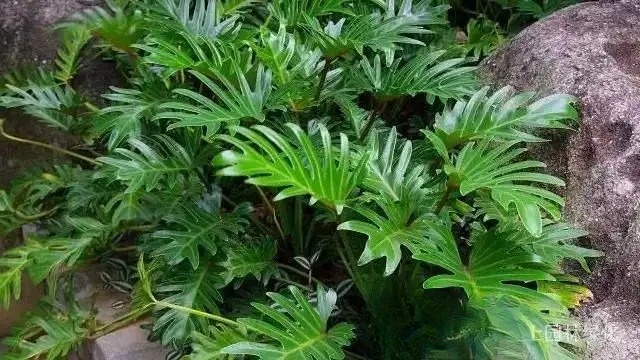
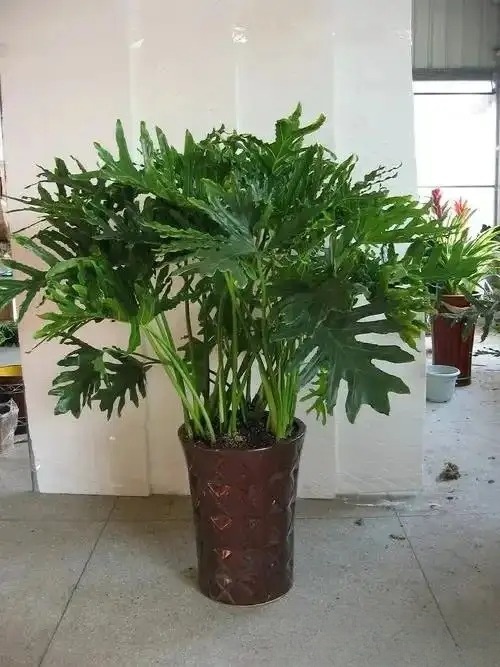
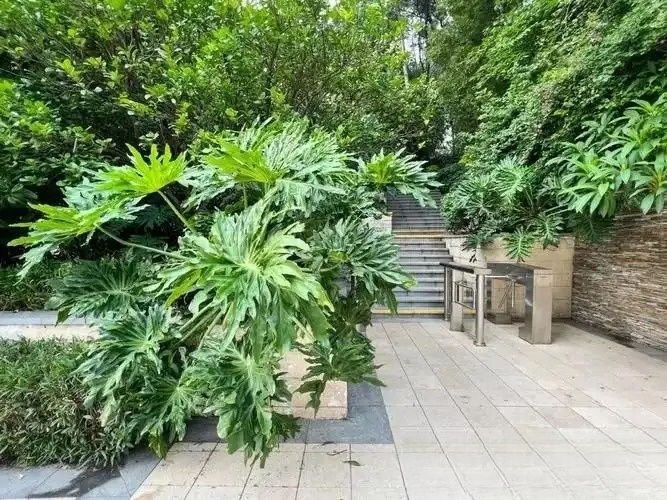
14. Aglaonema: Aglaonema genus of Araliaceae, an evergreen shrub. The leaves are large, palm-shaped, 5-7 deeply lobed, thick, shiny, with serrated or wavy green edges, sometimes with golden yellow edges, long petioles, and thick bases. Umbels form terminal panicles with white flowers. Flowering period is October-November. The berries are purple-black in color and covered with white powder. The next fold matures in May. It likes warm and humid environment, has strong shade tolerance, and is also relatively cold-resistant; it likes moisture and is afraid of drought, and is suitable for growing in fertile, loose and well-drained soil. Aglaonema grows best in semi-shaded and humid places such as forest edges and ditches. It is evergreen in the Yangtze River Basin all year round, and no frost damage occurs in winter. The leaves are peculiar in shape, magnificent in posture, dark green in color, and have a high coverage rate. It is an excellent evergreen foliage ground cover plant. It is extremely shade-tolerant and suitable for 3-5 clusters of plants, planted under forests, roadsides, and lawn corners.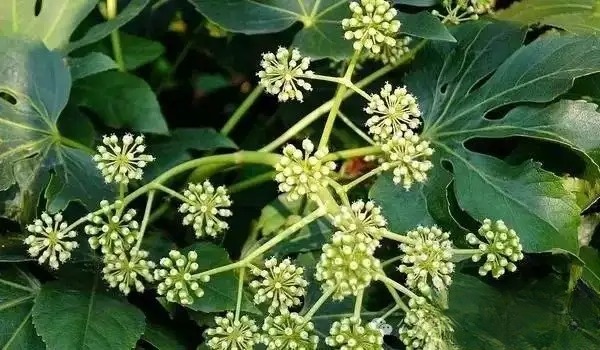
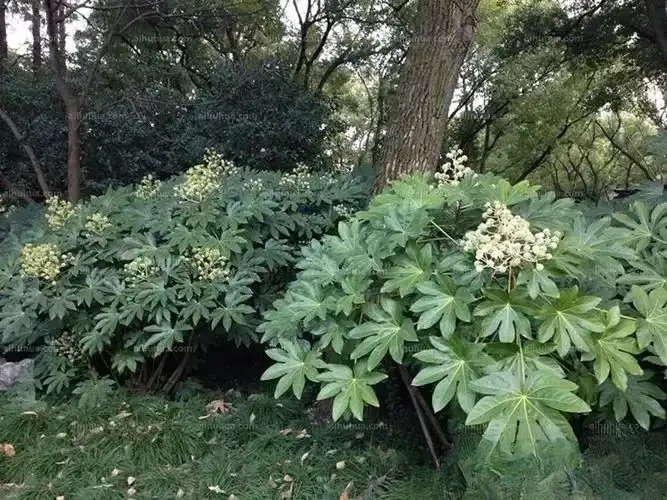
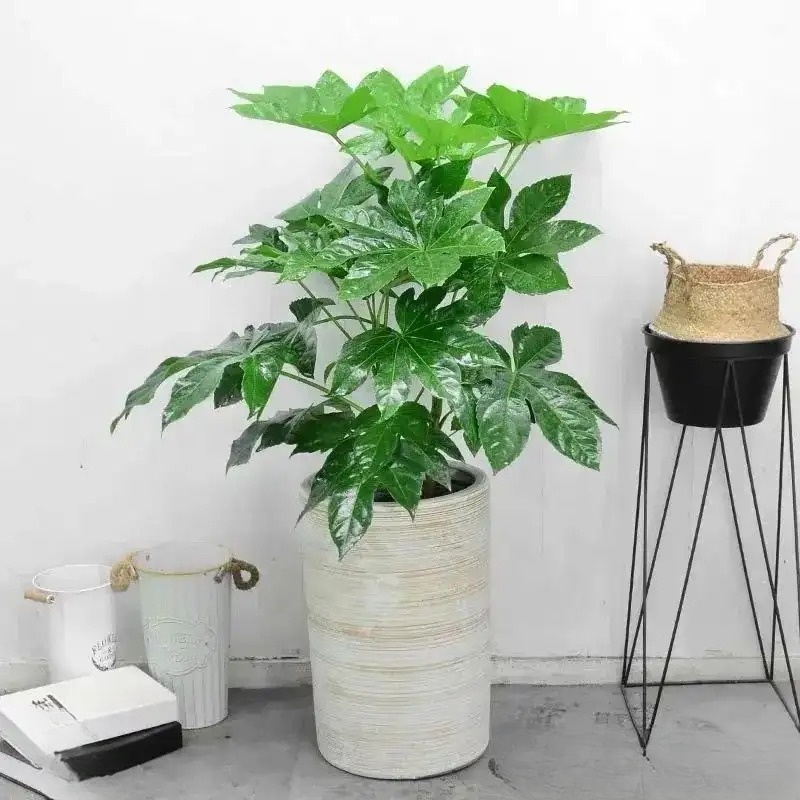
15. Hibiscus: Malvaceae, Hibiscus genus, evergreen large shrub or small tree. Stems are upright and branched, and can reach 2-4 meters in height without pruning. Leaves are alternate, broadly ovate to narrowly ovate. Flowers are large, with drooping or straight petals, and are divided into single and double petals; single petals are funnel-shaped, and double petals are not funnel-shaped, and are red, yellow, pink, white, etc. The flowering period is all year round, and the peak is in summer and autumn. It likes warm and humid climates, is not resistant to cold and frost, and is not shade-tolerant. It is suitable for growing in sunny and ventilated places. It is not strict with soil, but grows best in fertile, loose, slightly acidic soil, and the temperature in winter is not lower than 5℃. Hibiscus has bright and eye-catching flowers, blooming in the morning and withering in the evening. It is colorful and is planted as a shrub in the south, mostly by the pool, in front of the pavilion, by the road and by the wall.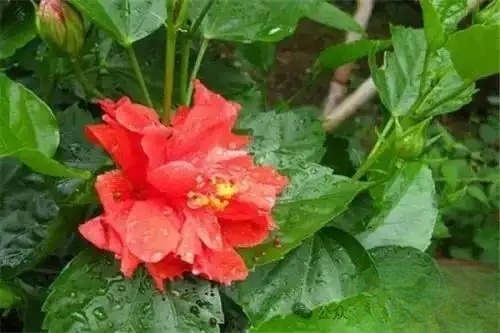
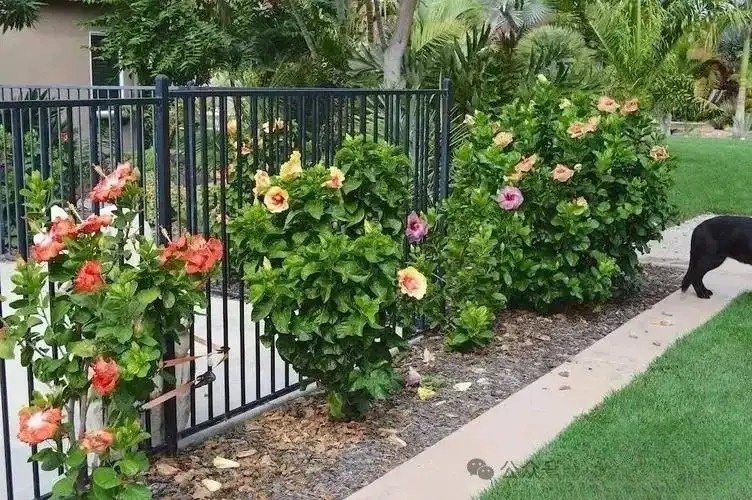
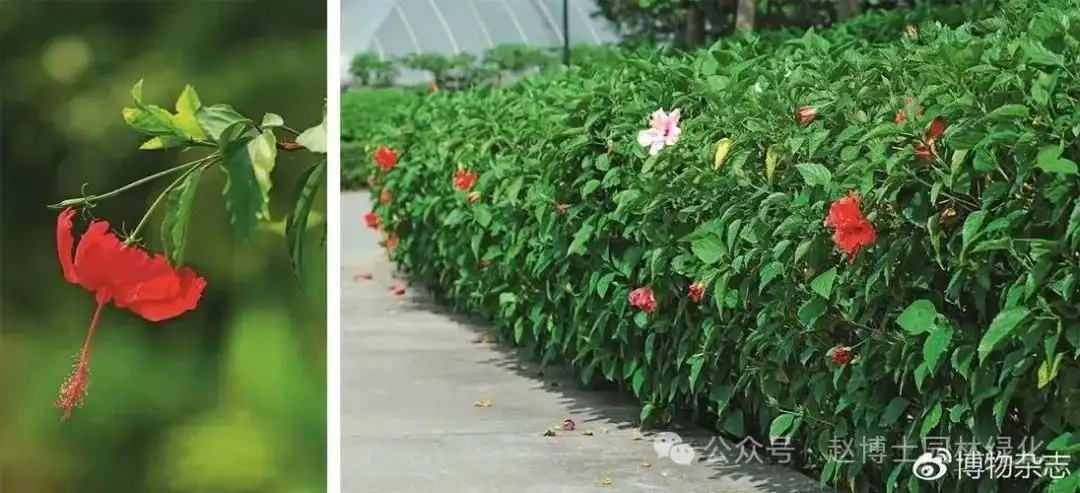
16. Bougainvillea (Bougainvillea): Bougainvillea genus, Mirabilis family, deciduous shrub, plant height 0.5-1.5M. The branches and leaves are densely covered with soft hairs and have branch thorns. The leaves are simple, alternate, ovate or ovate-elliptical. There are three flowers at the top, each with a large leaf-like bract, the bract is bright red. It likes warm and humid climate, is not cold-resistant, can safely overwinter above 3℃, and can bloom above 15℃. It likes sufficient sunlight. It is often planted in clumps in courtyards, beside houses, fences, etc.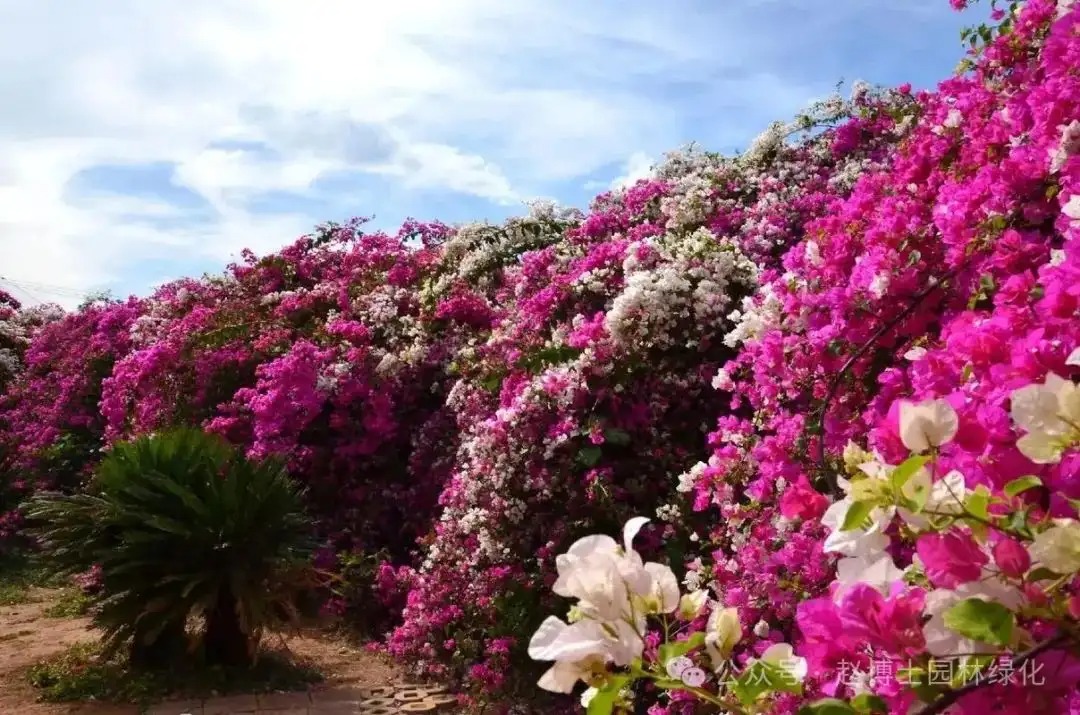
17. Bougainvillea: The genus Bougainvillea of the family Mirabilis is an evergreen climbing shrub . The branches and leaves are hairless or nearly hairless; the branches have thorns, and the branches and vines mostly droop. The leaves are simple, alternate, ovate or ovate-lanceolate, and entire. The flowers are terminal, often clustered in 3 leaves in the leaf-like bracts. The bracts are triangular and purple-red, and are the main ornamental parts. It likes warm and humid climates and is not cold-resistant. It can safely overwinter at temperatures above 3°C and can bloom at temperatures above 15°C. It likes sufficient sunlight. It is not demanding on soil, and grows well in well-drained, mineral-rich clay loam. It is resistant to barrenness, alkali, drought, and waterlogging. It is resistant to pruning. The triangular bracts are large, colorful like flowers, and last for a long time. It is suitable for garden planting or potted viewing. It can also be used as bonsai, hedges, and pruning shapes.

18. Gypsophila: Gypsophila belongs to the Lythraceae family. The flower is named after its shape resembling a "cigar". The plant height is about 30-40 cm. However, it can bloom when the pot is about 10 cm tall. The leaves are opposite, lanceolate, papery, emerald green, and entire. The flowers are axillary, petalless, and consist of bright red tubular calyx. The calyx tube mouth is purple and white. The shape is unique and very popular. Each calyx is very persistent, and flowers can be seen almost all year round, but the most prosperous in summer. It is a positive plant, and full sun and half sun are both ideal. It can also grow in slightly shaded places. Once the sun is sufficient, it will grow more vigorously. Sandy loam is preferred, and good drainage is required. Stagnant water will not retreat, and it is very easy to rot and wither. It likes high temperatures, can bloom and bear fruit in summer, and should be warm and sheltered in winter. The suitable temperature for growth is about 20 to 30 degrees Celsius. It is often planted as the lowest layer of shrubs in residential areas and park greening, and is suitable for garden beautification and potted plants.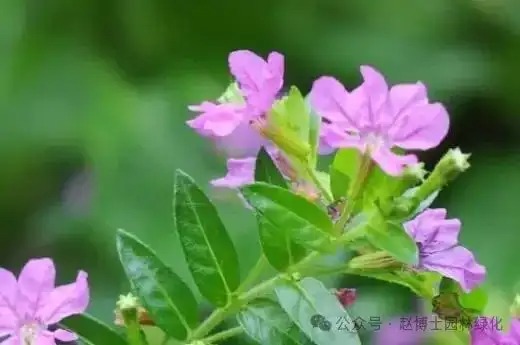
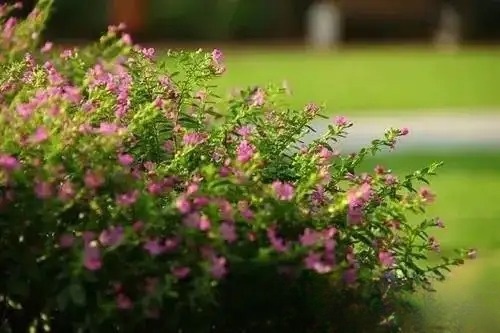
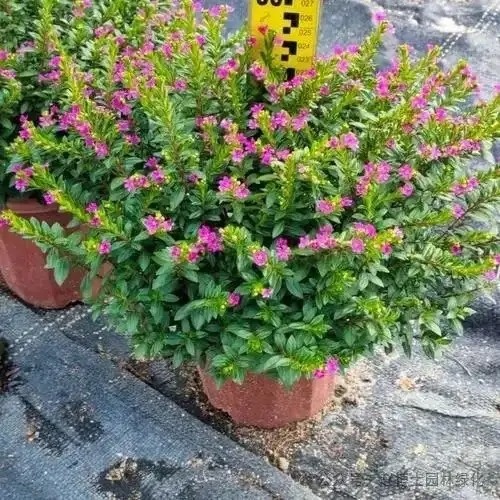
19. Gardenia: Rubiaceae Gardenia genus, evergreen shrub. The leaves are obovate, leathery, emerald green and shiny. The flowers are white and very fragrant. The berries are oval, yellow or orange. The flowering period is from June to August, and the fruit ripens in October. It likes warm and humid climates and is not cold-resistant; it likes sunshine but cannot withstand strong sunlight, and is suitable for living in slightly shaded places; it is suitable for growing in loose, fertile, well-drained, lightly sticky acidic soil, and is a typical acidic flower. It can be propagated by cuttings, layering, division or sowing. The flowers can be used as a spice for tea, and the fruits can reduce inflammation and remove heat. It is an excellent aromatic flower. The gardenia usually refers to the ornamental double-petaled variant of the large-flowered gardenia. The leaves of the gardenia are evergreen all year round, the flowers are fragrant and elegant, and the green leaves and white flowers are particularly beautiful and lovely. It is suitable for arrangement in front of steps, poolside and roadside, and can also be used as a flower hedge and potted plant for viewing. The flowers can also be used for flower arrangement and wearing decoration.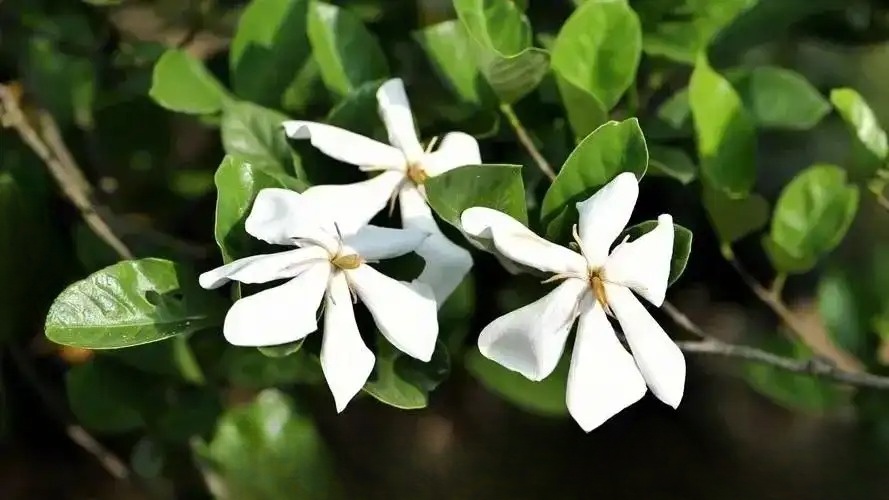
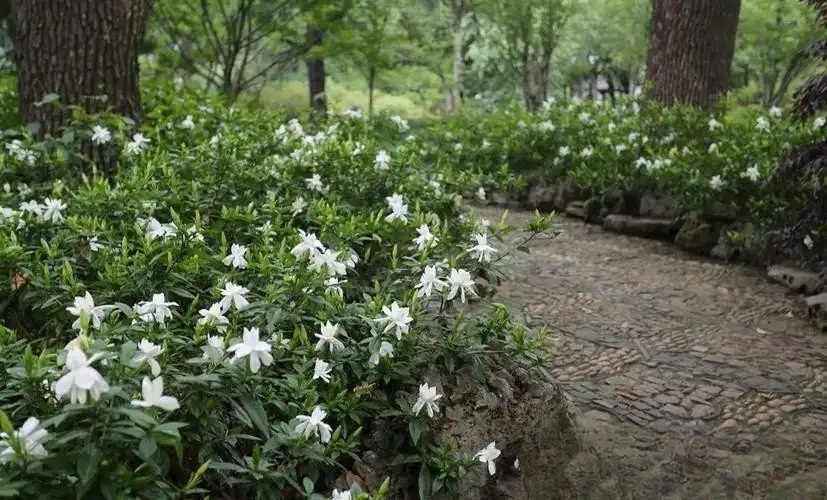
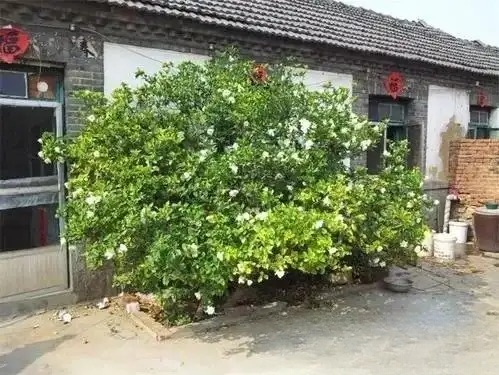
20. Mahonia: Mahonia genus of Berberidaceae, evergreen shrub, root and stem section yellow, leaves bitter. Pinnate compound leaves alternate, leathery, lanceolate, with sharp thorn-like teeth on the edge; stipules small, shape. Racemes erect, petals yellow, berries round or oblong, blue-black, with white powder. Flowering period July to October. Belongs to warm temperate plants, has strong cold resistance. Not resistant to heat, not only growth stops under high temperature, leaves will also dry tip. They mostly grow in shady and wet canyons and forests in their native place, belonging to shade plants. Like well-drained acidic humus soil, extremely alkali-intolerant, relatively drought-tolerant, afraid of waterlogging, poor growth in dry air. The leaf shape is peculiar, elegant and beautiful, potted plants can be used for indoor display, because of its good shade tolerance, can be cultivated for a long time under indoor scattered light conditions. In the courtyard, it can also be planted beside the rockery or in the cracks of the stone, but it is best to have a big tree to shade it.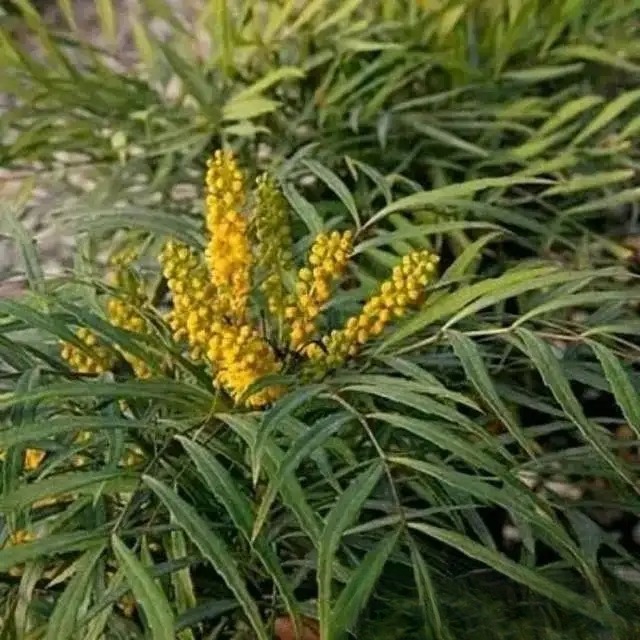
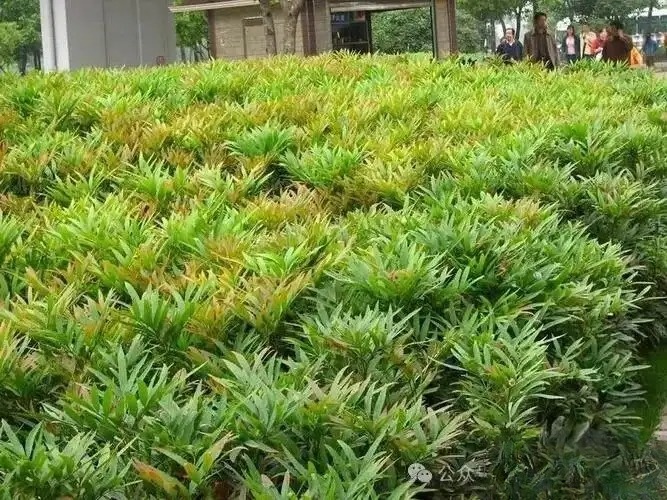
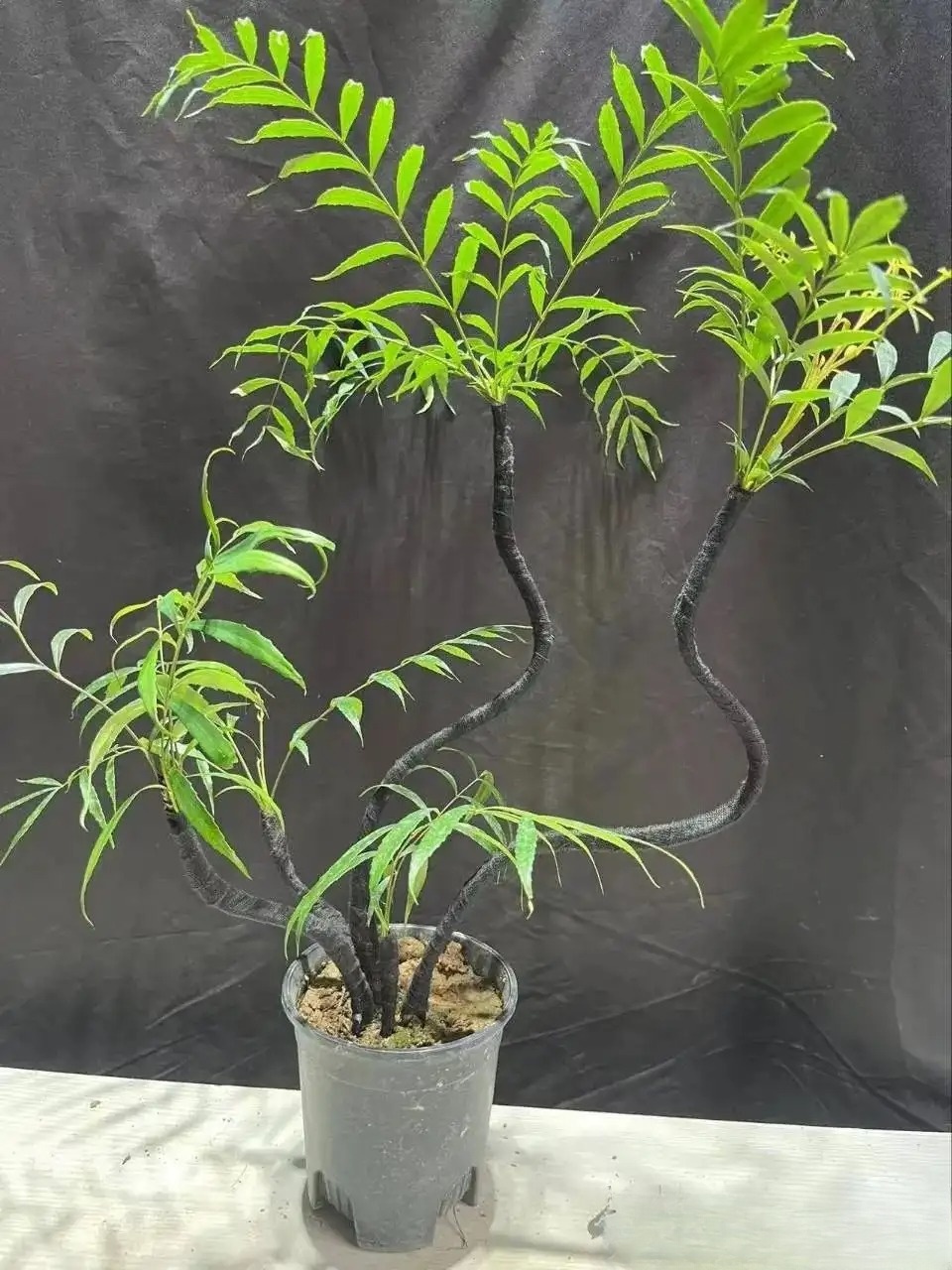 21. Camellia sasanqua: Camellia genus, Theaceae, evergreen shrub or small tree, up to 12 meters high, with a spherical or oblate crown. The bark is grayish white. The young branches have coarse hairs, and the surface of the bud scales has inverted soft hairs. The flowers are set or semi-double, and the colors include red, white, pink, etc., as well as many strange color changes and red and white borders. The diameter of the camellia flower is 3.5-6 cm, fragrant, and the flowering period is long, which can bloom from late October to March of the following year. Camellia sasanqua not only has gorgeous and elegant colors, but also has branches that mostly spread horizontally, with a full posture and a beautiful tree shape. The fruit is spherical. It likes shade and humidity, and is most suitable for half shade and half sun. Strong sunlight will burn its leaves and buds, causing the leaves to curl and fall off. But it needs proper light to bloom luxuriantly and brightly. Camellia sasanqua likes warm and humid climates. It is suitable for growing in fertile, loose, well-drained acidic sandy soil. Alkaline soil and clay are not suitable for growing camellia. There are very few shrubs that bloom in winter in gardens. The flowering period of Camellia sasanqua is from October to April of the following year, which fills this time period, so it is widely used in landscaping.
21. Camellia sasanqua: Camellia genus, Theaceae, evergreen shrub or small tree, up to 12 meters high, with a spherical or oblate crown. The bark is grayish white. The young branches have coarse hairs, and the surface of the bud scales has inverted soft hairs. The flowers are set or semi-double, and the colors include red, white, pink, etc., as well as many strange color changes and red and white borders. The diameter of the camellia flower is 3.5-6 cm, fragrant, and the flowering period is long, which can bloom from late October to March of the following year. Camellia sasanqua not only has gorgeous and elegant colors, but also has branches that mostly spread horizontally, with a full posture and a beautiful tree shape. The fruit is spherical. It likes shade and humidity, and is most suitable for half shade and half sun. Strong sunlight will burn its leaves and buds, causing the leaves to curl and fall off. But it needs proper light to bloom luxuriantly and brightly. Camellia sasanqua likes warm and humid climates. It is suitable for growing in fertile, loose, well-drained acidic sandy soil. Alkaline soil and clay are not suitable for growing camellia. There are very few shrubs that bloom in winter in gardens. The flowering period of Camellia sasanqua is from October to April of the following year, which fills this time period, so it is widely used in landscaping.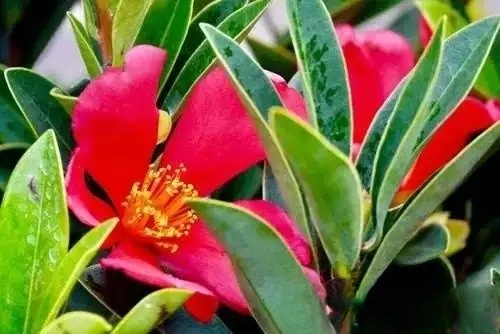
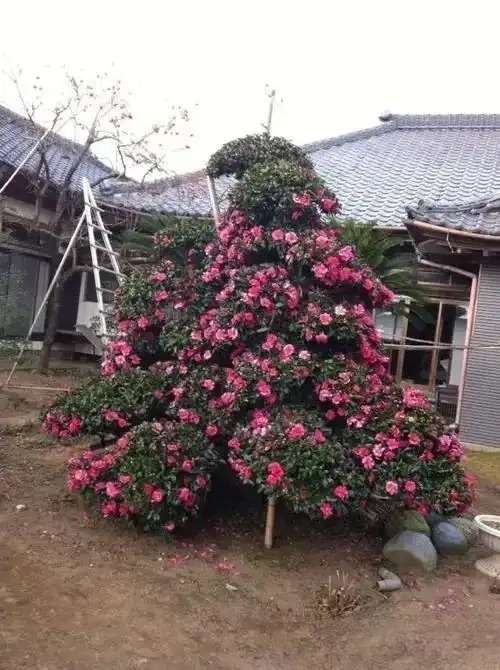
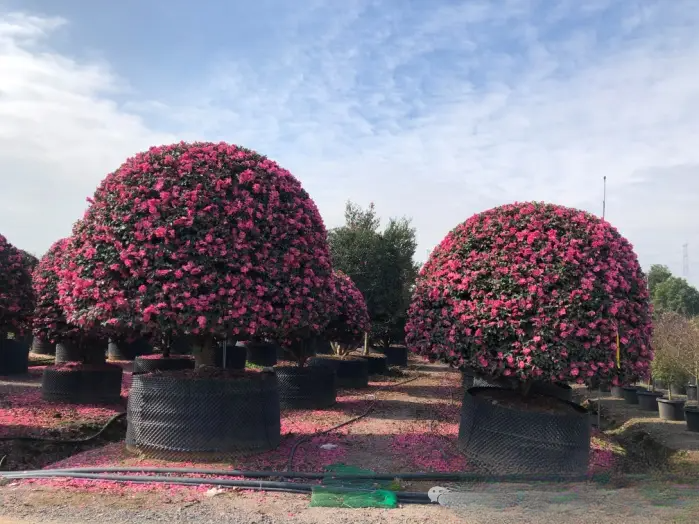
22. Pyracantha: Pyracantha genus, Rosaceae, evergreen shrub, side branches short thorns; leaves obovate, 1.6-6 cm long, compound cymes, 10-22 flowers, 1 cm in diameter, white; fruit nearly spherical, 8-10 mm in diameter, spike-shaped, each spike has 10-20 fruits, orange-red to dark red, very popular. The bottom of the fruit begins to turn red in September, and it can remain until the Spring Festival. It is an excellent plant for viewing flowers in spring and fruits in winter. It is a subtropical plant, and likes to grow in a warm, humid, well-ventilated, sunny and long-sunlight environment. The optimal growth temperature is 20-30℃. In addition, Pyracantha also has strong cold resistance. If it is planted in a place where the temperature is higher than 10℃ in winter, the plant will not dormant well, which will affect the flowering and fruiting in the following year. Although Pyracantha can tolerate barrenness, it is not strict with soil. Because of its strong adaptability, tolerance to pruning, and love of germination, it has advantages as a hedge. Pyracantha grows better in poor environments, has strong natural resistance to adversity, and has fewer diseases and insect pests. As long as you prune it diligently, the hedges planted in the same year will be effective in the same year. Pyracantha is also suitable for planting on slope protection, small and medium-sized pots, or planting in clusters or solitary on the edge of the grass in the garden.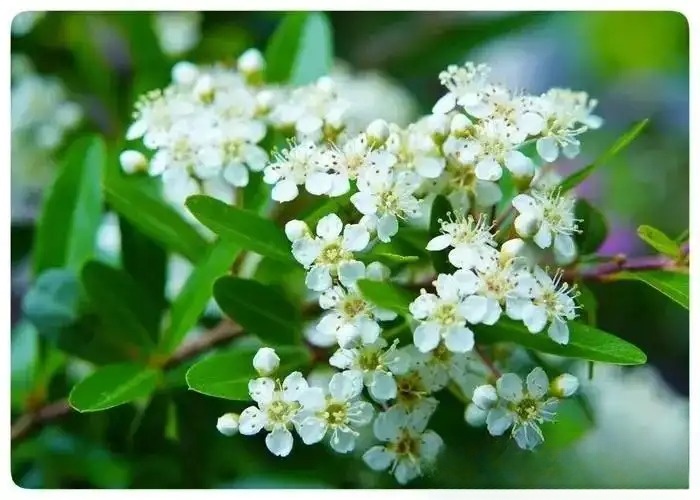
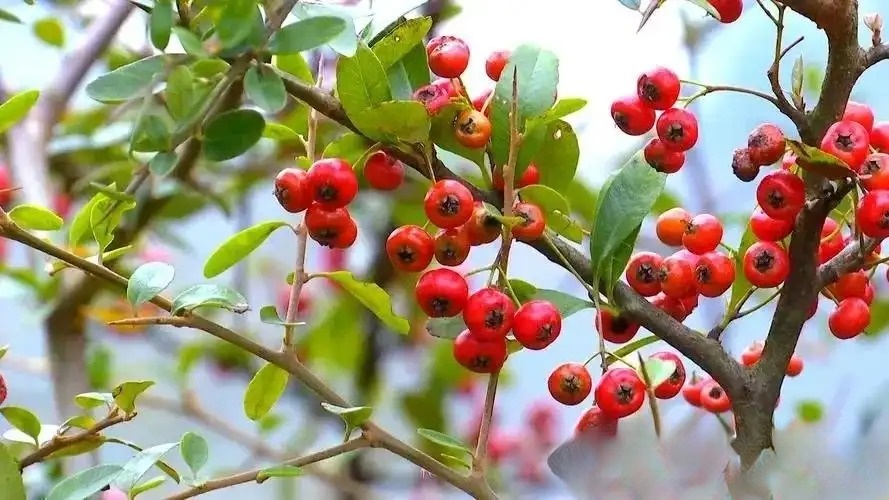
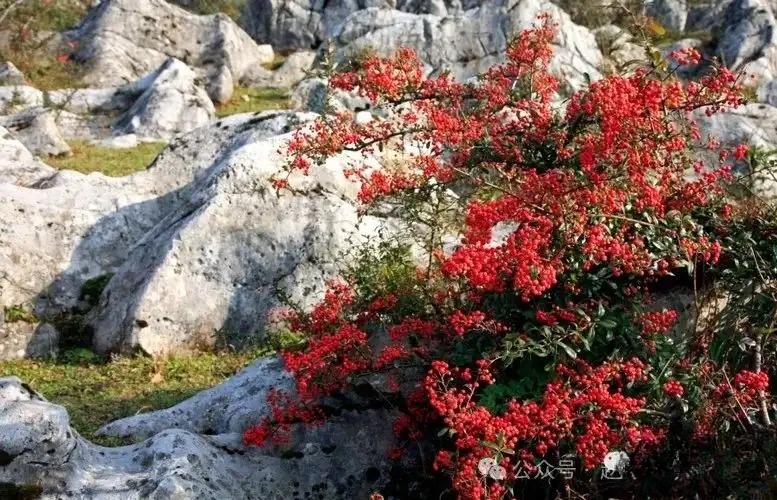
23. Horsetail flower: Azalea genus of the family Ericaceae, evergreen shrub to small tree, 3 to 8 meters high. The bark is brown and peels in irregular flakes. The single leaf is leathery and clustered at the top of the branch; the leaves are oblong-lanceolate, with entire wavy edges; the flowers are clustered at the top of the branch, in an umbel-like raceme, with 10 to 20 flowers, hairy, large and beautiful. The corolla is bell-shaped and dark red. The flowering period is April-May, and the fruiting period is September-October. It likes a cool and humid climate and hates hot and dry weather. It requires a well-ventilated semi-shady environment. It should be protected from the sun and shade in summer, and should be kept warm and cold in winter. Watering should also be noted. Although this species likes moisture, it is not tolerant to waterlogging. Too much water will easily rot the roots. Therefore, the principle of watering is to water when it is dry and keep the soil moist. The flowers are clustered and very beautiful, suitable for embellishment planting beside stones, roadsides, lawn edges, etc.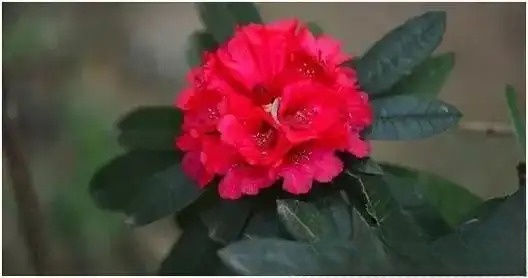
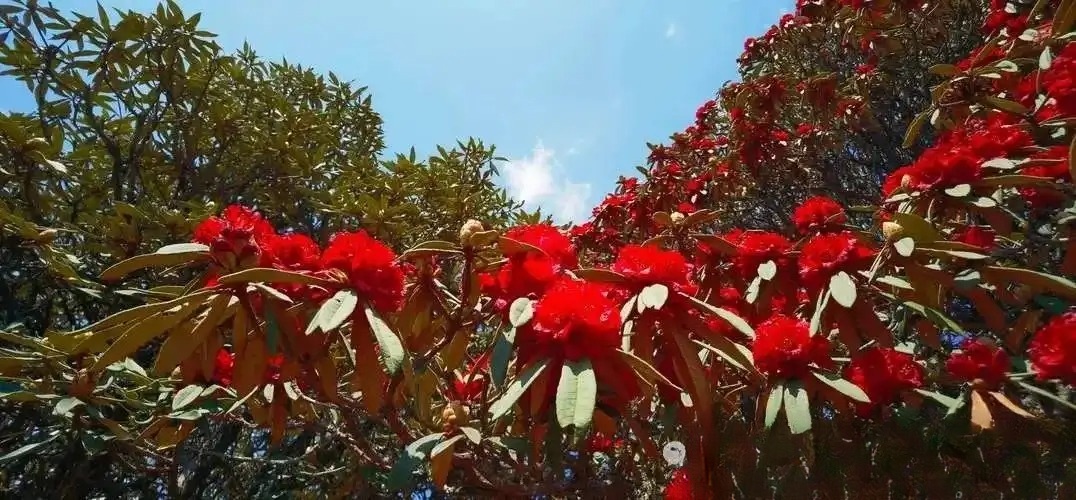
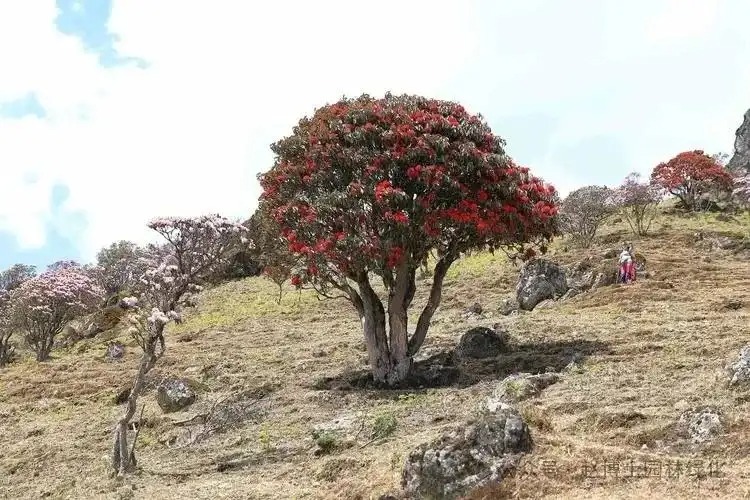
24. Winter jasmine: Jasmine, Oleaceae, also known as golden plum, golden belt, small yellow flower, is a deciduous shrub of Oleaceae, named because it blooms the earliest among all flowers. Its branches are slender, arched and drooping, and can reach more than 2m in length. The side branches are strong, quadrangular, and green. The trifoliate leaves are opposite, 2-3cm long, and the leaflets are ovate-elliptical, with smooth surface and entire margins. The flowers are solitary in the axils of leaves, and the corolla is high-footed cup-shaped, bright yellow, with 6 lobes at the top, or double petals. The flowering period is from March to May and can last for 50 days. It likes light, is slightly shade-tolerant, slightly cold-tolerant, and afraid of waterlogging. It can overwinter in the open field in North China and Yanling. It requires a warm and humid climate, loose, fertile and well-drained sandy soil. It grows vigorously in acidic soil and grows poorly in alkaline soil. The root germination is strong. The part of the branch touching the ground is very easy to take root. The branches are drooping, and the flowers bloom before the leaves in late winter and early spring. The flowers are golden and the leaves are emerald green. In the garden, it is suitable to be placed by the lake, stream, bridge, wall corner or on the lawn, forest edge, slope. It can also be planted around the house for viewing flowers in early spring.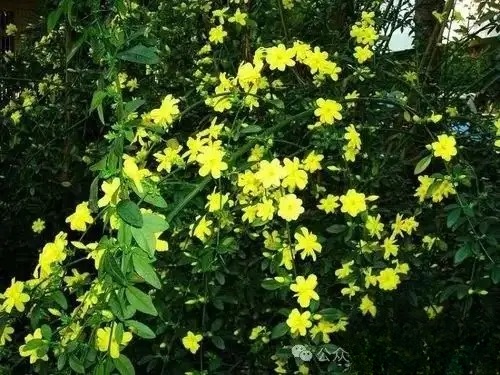
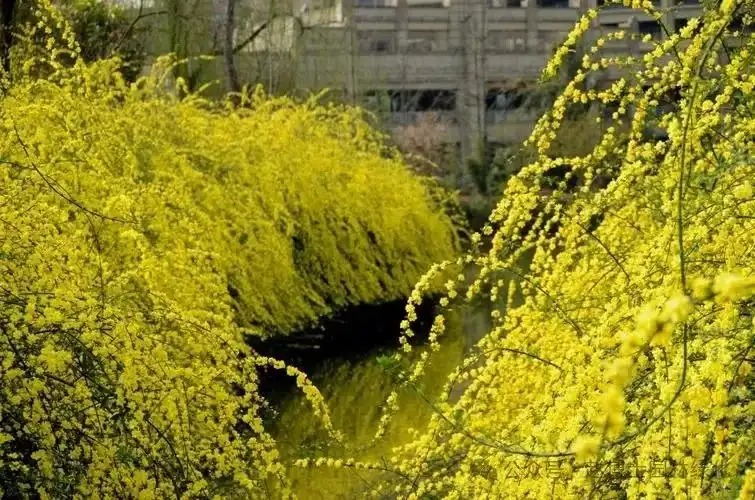
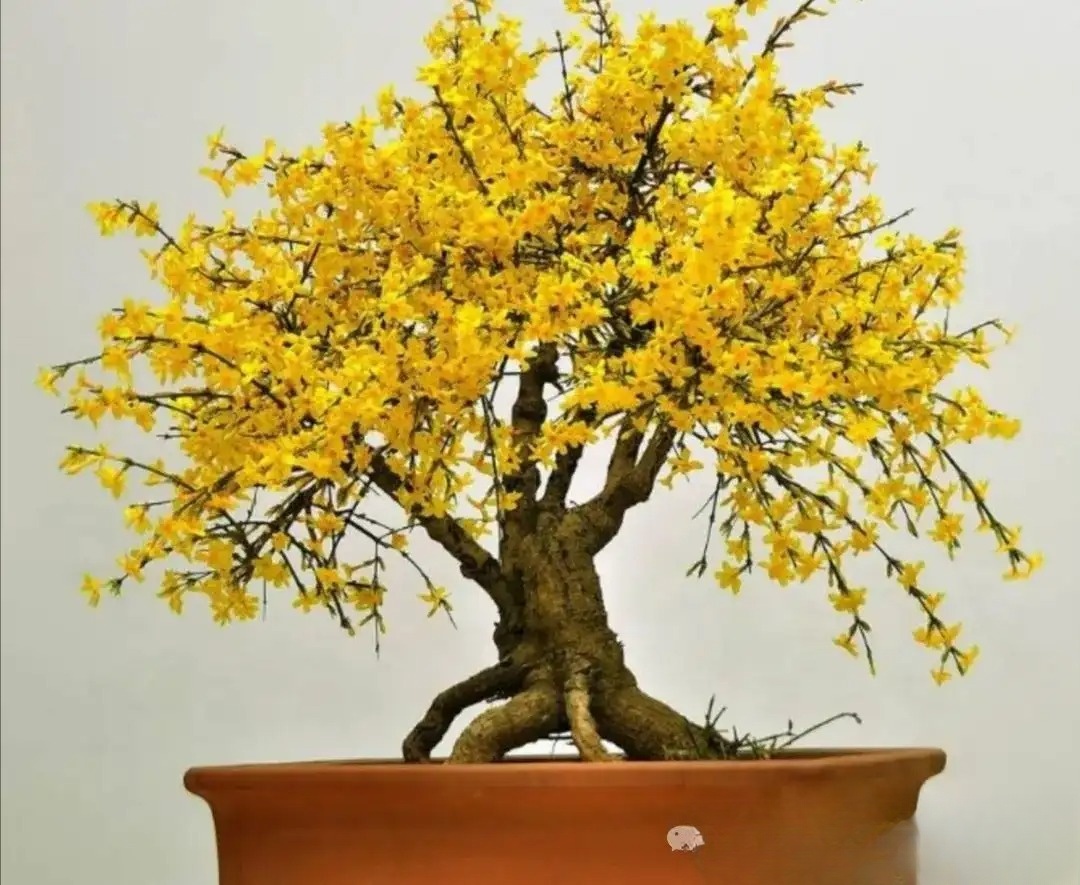
25. Hydrangea: A genus of the Saxifragaceae family, Hydrangea, a deciduous shrub with smooth twigs and sturdy old branches. The leaves of the hydrangea are large and opposite, light green, shiny, oval or obovate, with blunt serrations on the edges. The flower balls of the hydrangea are large and terminal. The hydrangea is bluish-white at first, gradually turns pink, and then turns purple-red, with beautiful colors. The flowering period of the hydrangea is from June to July, and each cluster of flowers can bloom for two months. It likes a warm, humid and semi-shady environment. The suitable temperature for growth is 18-28℃, and the temperature in winter is not lower than 5℃. The cultivation soil should be kept moist, but attention should be paid to drainage in the rainy season to prevent root rot caused by waterlogging. In normal cultivation, it should be avoided from the sun, and 60% to 70% shade is the most ideal. The color of the flower is affected by the pH of the soil. The flowers in acidic soil are blue, and those in alkaline soil are red. The flowering period of the hydrangea is long, and it is an ideal flower and tree suitable for both courtyard cultivation and garden viewing.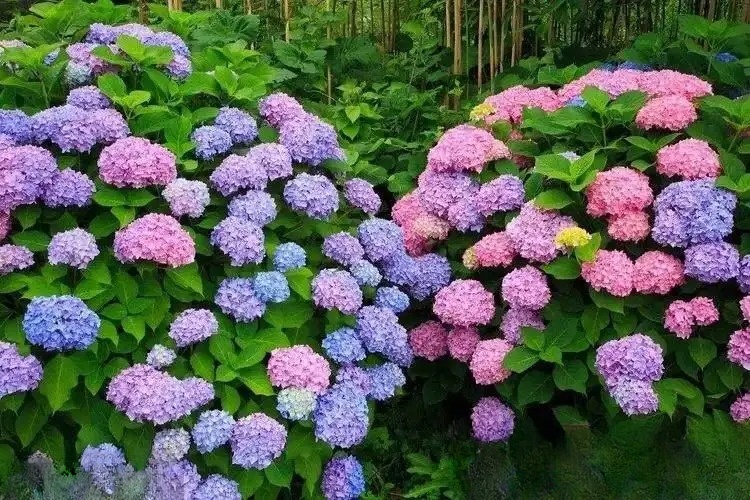
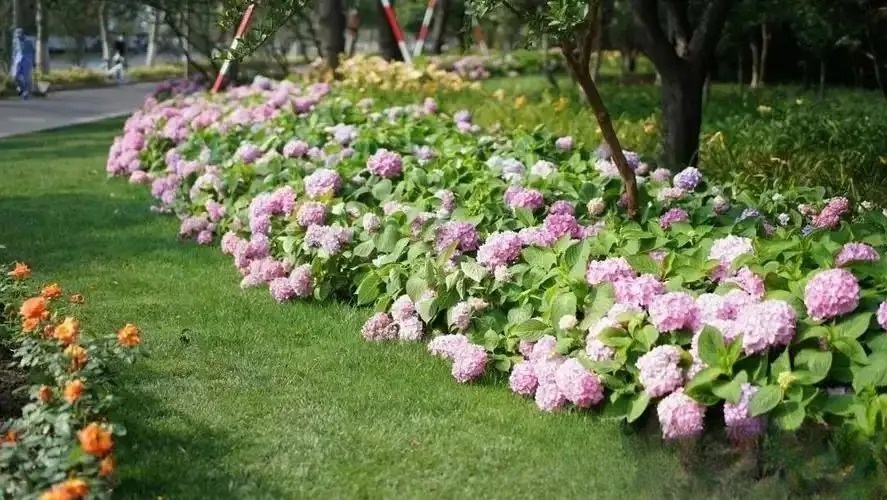
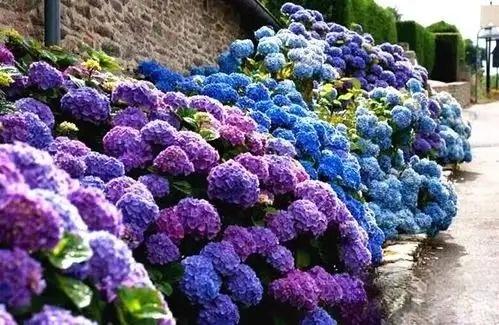
26. Red pompom: Mimosa family, Red Tassel Flower, semi-deciduous shrub, small tree, 1-3 meters high. Bipinnate compound leaves have 1 pair of pinnae, each pinnae has 7-9 pairs of leaflets; leaflets are lanceolate, oblique, 2-4 cm long, slightly larger in the middle and upper parts. The head inflorescence is axillary, about 3 cm in diameter, containing 20-40 flowers; the corolla is light purple-red, 5-8 mm long; the stamens are 5-6 times longer than the corolla and red. The flowering period is from spring to autumn. The pods are ribbon-shaped. The seeds mature in late autumn and early winter. It likes a warm and sunny environment. It requires a deep soil layer. The wintering temperature is 15-18℃. It is usually propagated by cuttings, and the temperature of the cutting bed needs to be 25-28℃. It can be planted in the open field in tropical and subtropical areas, and can be potted for viewing in northern areas. The branches and leaves are expanded, and the inflorescence is in the shape of a red pompom, which is eye-catching and pleasant among the green leaves. It is often pruned into a ball shape, and in early spring it sprouts light red tender leaves, which are beautiful and lush. It is an excellent woody flower plant. It is suitable for single planting or clump planting in gardens, and can also be used as a hedge and road divider. It can be potted and grows well in greenhouses in Shanghai.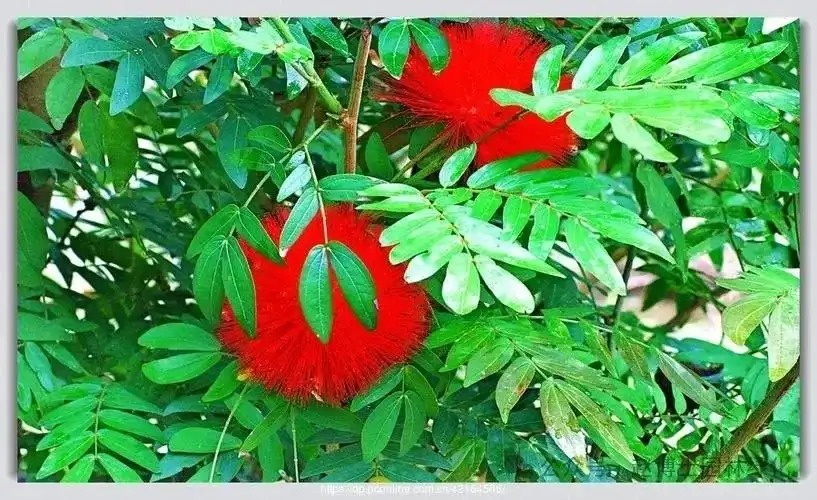
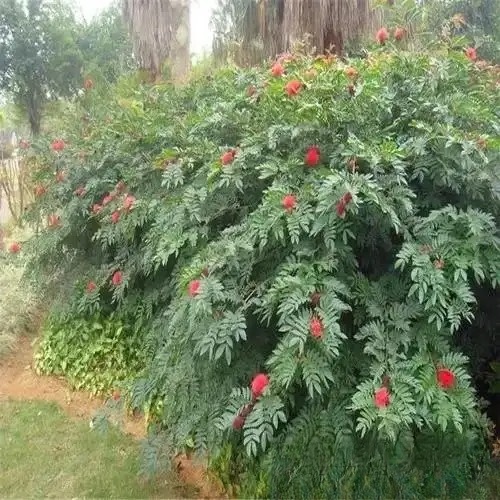
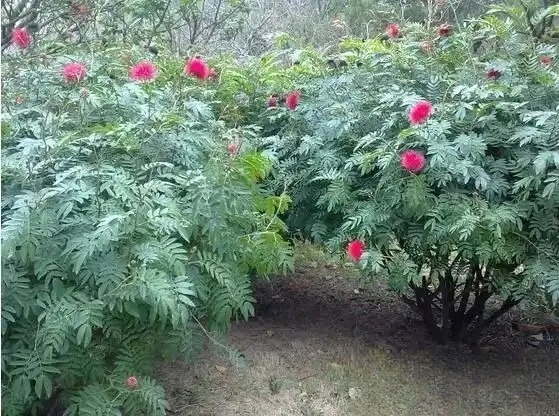
27. Golden Ligustrum: Ligustrum genus, Oleaceae, 2-3 meters high, 1.5-2 meters wide. Single leaves are opposite, oval or ovate-oval, 2-5 cm long. Drupe is broad oval, purple-black. Golden Ligustrum has golden leaves, especially in spring and autumn. Strong adaptability Golden Ligustrum has strong adaptability, is not strict on soil, is light-loving, slightly shade-tolerant, and has strong cold resistance. It has strong disease resistance and is rarely damaged by diseases and insects. It has a wide range of uses in landscaping. The leaves of Golden Ligustrum are golden yellow throughout the growing season, beautiful and unique, so it can be matched with green plants in the garden configuration and planted in groups. In the "street green decoration" or around the sculpture, planting golden Ligustrum in large areas, its eye-catching color plays the role of icing on the cake, enriching the color of the landscape and enlivening the atmosphere of the garden.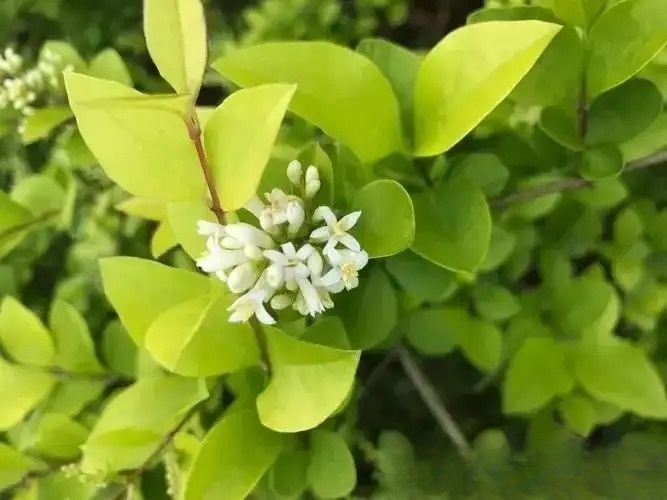
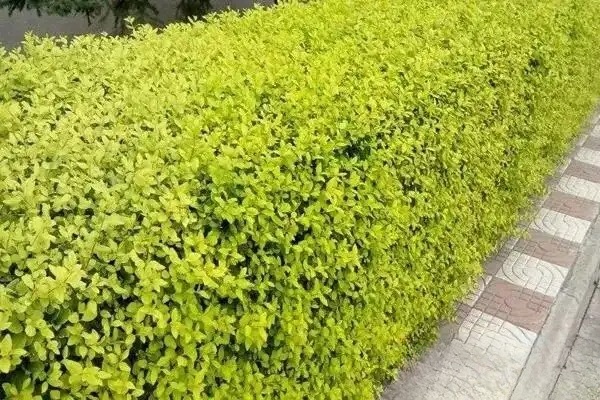
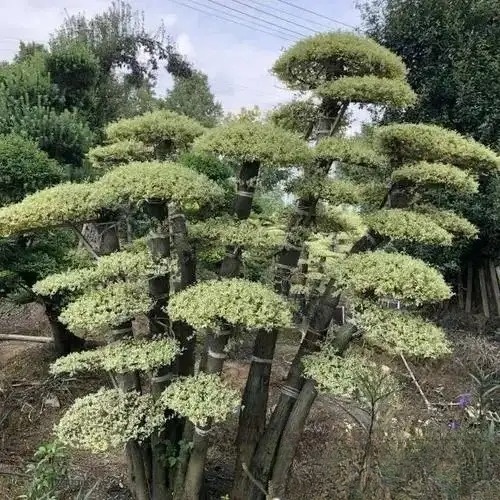
28. Ligustrum lucidum: Ligustrum lucidum of Oleaceae, with leathery, thick and fleshy leaves; new leaves are bright yellow in spring, turning golden yellow in winter, with some new leaves having cloudy light green patches on both sides or one side of the midrib, short internodes, dense branches and leaves. White flowers, purple fruits. Strong heat resistance: high temperatures above 35℃ will not affect its ecological and ornamental characteristics; strong cold resistance: can withstand low temperatures of -9.7℃; long golden leaf period: golden leaves dominate in spring, autumn and winter. Only when the high temperature continues in summer will some leaves turn green. Ligustrum lucidum grows vigorously and has strong germination ability; it is a very good natural hedge material. It can be used as a hedge outside the garden to define space and block sight, or it can be planted in semi-shaded places such as walls and forest edges to block building foundations and enrich the layers of forest edge landscape. The color of the leaves of Ligustrum lucidum is a golden yellow with a high brightness. When paired with Photinia fraseri, it can create a very unexpected effect. It is praised by the industry as the "golden partner of Photinia fraseri".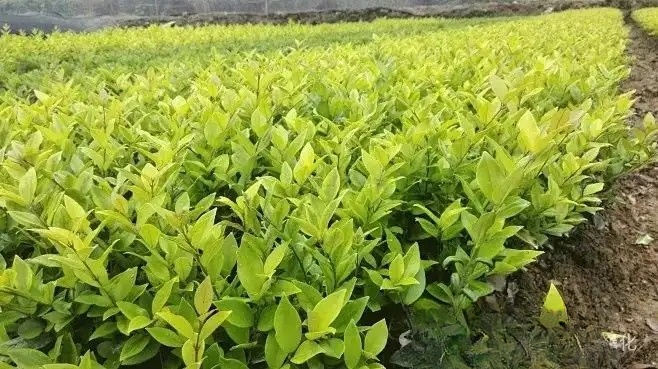
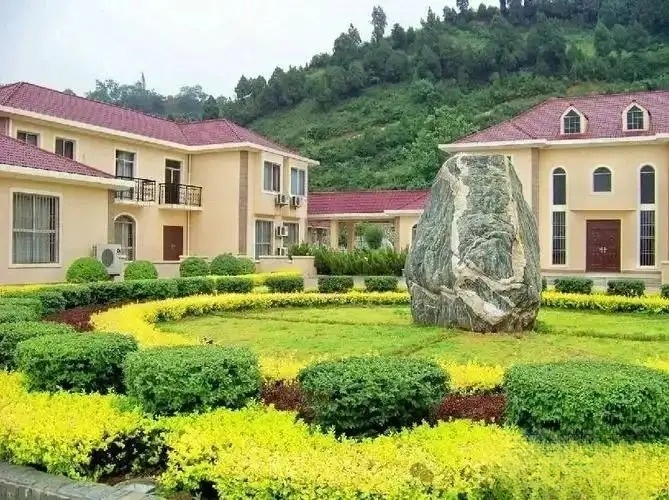
29. Variegated Alpinia: Zingiberaceae, Alpinia genus, evergreen herbaceous foliage plant. 1-2 meters high. Its rhizomes grow horizontally and are fleshy. The leaves are leathery, with short petioles, short circular lanceolate; the leaf surface is dark green with golden longitudinal stripes and patches, and is shiny. The panicle inflorescence is drooping, the bracts are white, the edges are yellow, the flowers are nearly bell-shaped, the corolla is white, and the flowering period is summer. It likes a high temperature and high humidity environment and bright light. But it is also tolerant to semi-shade. The suitable temperature for growth is 15-30℃, and the wintering temperature is about 5℃. It grows better in pine and well-drained fertile loam. It is often used beside landscape rocks, on the edge of green space and in the corner of the courtyard, and its ornamental effect is very good. It can also be used as an indoor garden decoration plant.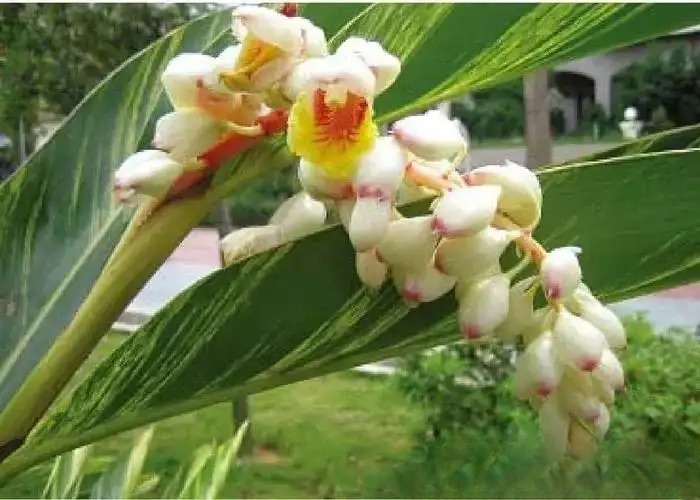
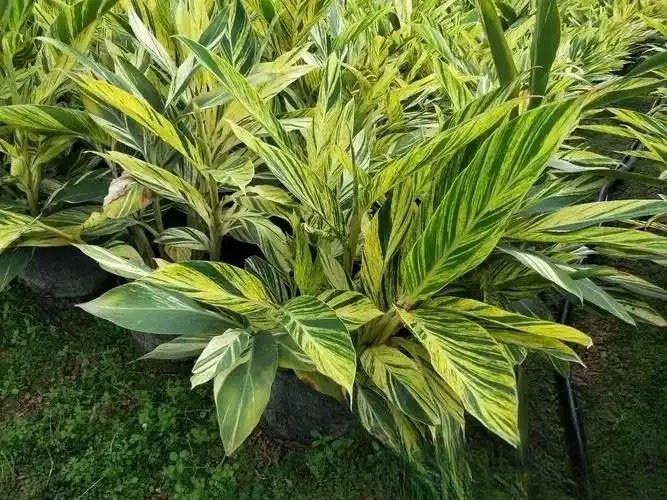

30. Cordyceps: Agavaceae Cordyceps genus, shrub-like, leaves clustered at the top of stems or branches, rectangular to rectangular-lanceolate, green or purple-red; flowers are light red, purple-blue to yellow, with slender styles. Flowering period is from November to March of the following year. It likes high temperature and humidity, with a critical low temperature of 10℃ in winter, and requires semi-shade in summer. Avoid alkaline soil. Cordyceps plants are relatively high and are usually used as background layer shrubs. With beautiful leaf shape and gorgeous and elegant colors, it is also often used as a colorful shrub to enrich the color of the garden.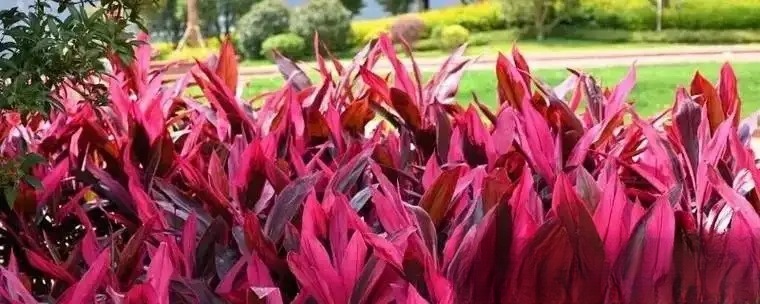
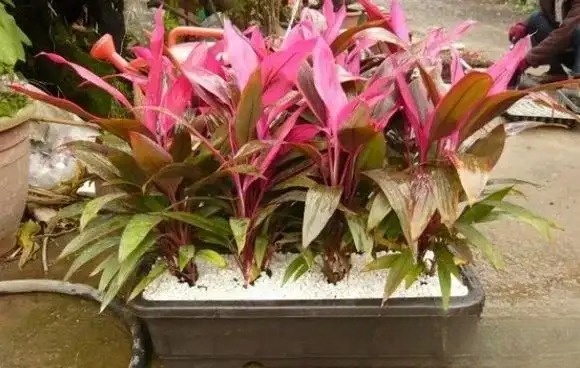
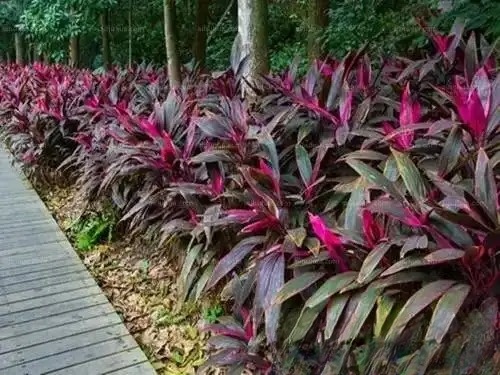
31. Chunjuan: A deciduous shrub belonging to the genus Rhododendron in the family Ericaceae, about 2 meters high; branches, bracts, pedicels and flowers are all covered with brown flat rough hairs. The leaves are papery, ovate-elliptical, 2-6 cm long, 1-3 cm wide, with a pointed apex and a wedge-shaped base. Both sides are covered with rough hairs, and the back is denser. It likes acidic soil, and needs to be protected from the sun and shaded in summer, and should be kept warm and cold-proof in winter. It is suitable for growing under scattered light with low light intensity. If the light is too strong, the young leaves are easily burned, and the new and old leaves are burnt, which may lead to the death of the plant in severe cases. Chunjuan has luxuriant flowers and leaves, beautiful and colorful, strong germination ability, resistant to pruning, and peculiar root piles, making it an excellent bonsai material. In the garden, it is best to plant it in clumps and patches at the edge of the forest, stream, pool and rock, or it can be planted under sparse forests. Chunjuan is also a good material for flower hedges, and can be cultivated into various forms through pruning. The Chunjuan specialty garden is very distinctive.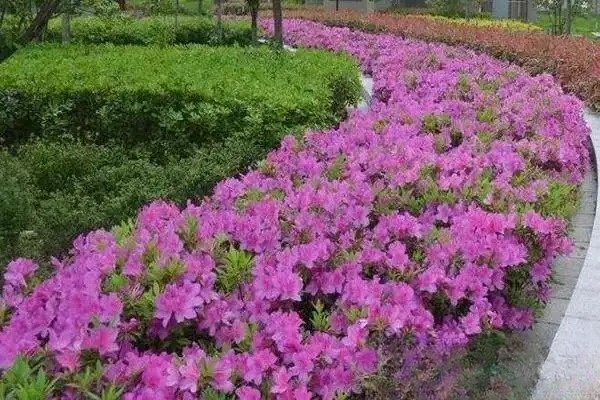
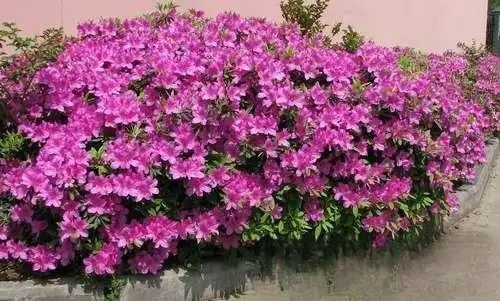
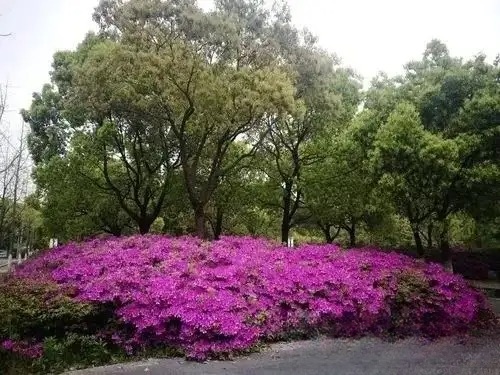
32. Monstera: Araceae Monstera genus, semi-climbing, with thick stems and many bamboo-like nodes, hence the name Monstera; long and drooping brown aerial roots grow on the stems, which can climb up to other objects. The leaves are thick and leathery, alternate, dark green or green; the young leaves are heart-shaped, without perforations, and when they grow up, the leaves are rectangular, with irregular pinnate deep cracks, from the leaf edge to the veins, like a tortoise shell pattern, and epiphytic on tall trees in tropical rainforests. It likes warm and humid environment, and avoids strong light exposure and dryness. The suitable temperature for growth is 20-25℃, and the night temperature in winter is not lower than 10℃ during the seedling stage. Mature plants can withstand 5℃ for a short time, and frost damage is likely to occur below 5℃. The plant has a beautiful shape, peculiar leaf shape, dark green leaf color, and rich luster, and the whole plant has a good ornamental effect. It is scattered in the gaps between stones beside the pond and the stream, which is very natural and generous.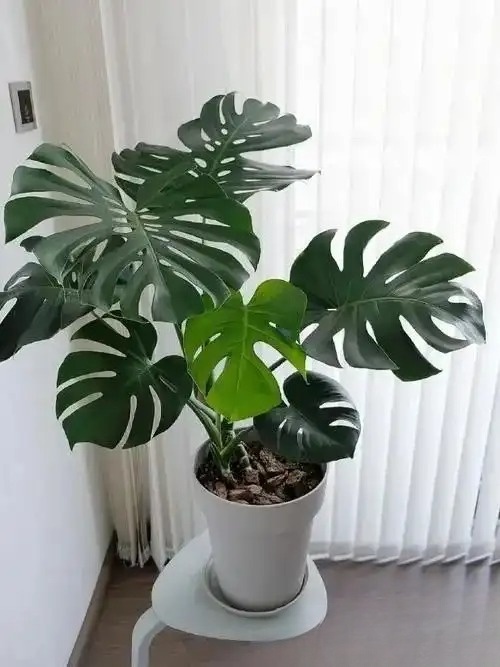
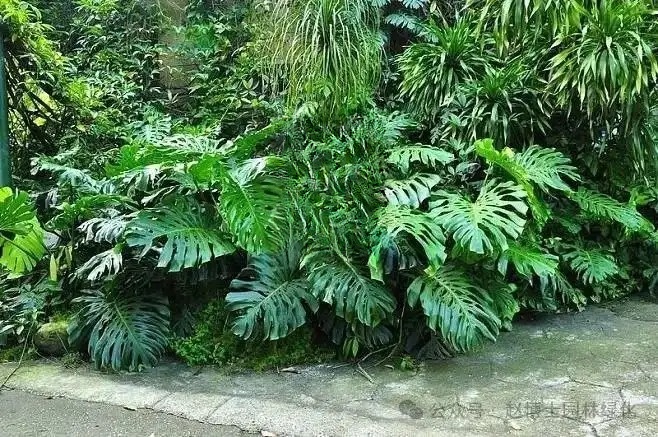
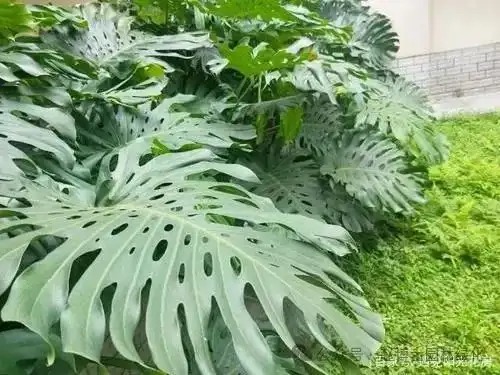
33. Hairy-leaved lilac: Oleaceae, genus Syringa, deciduous shrub. Plant height 2~4m; twigs slender, slightly quadrangular, glabrous; buds small, ovate or oval, covered with short hairs. Leaves ovate to elliptic-ovate, rhombus-ovate, 3~8cm long, short-acute at the tip, broad cuneate at the base, with fine hairs on the edges, positive, drought-tolerant, cold-tolerant, barren-tolerant, purple or lavender flowers, with strong fragrance, flowering period May, garden ornamental, clump planting, fragrant, can be cultivated for ornamental purposes.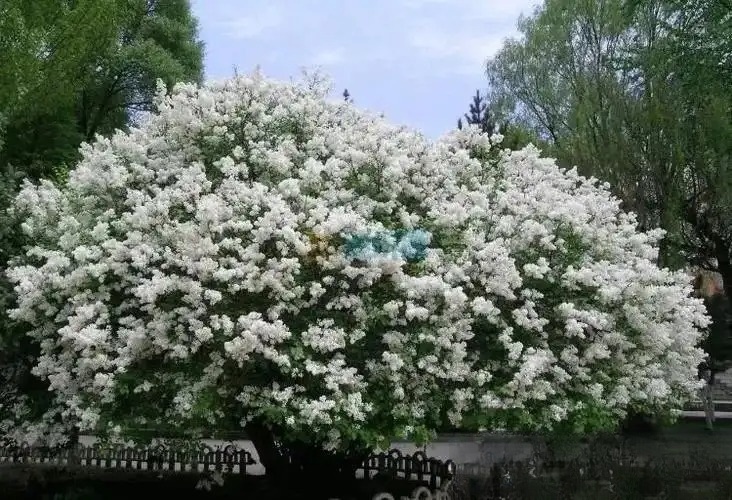
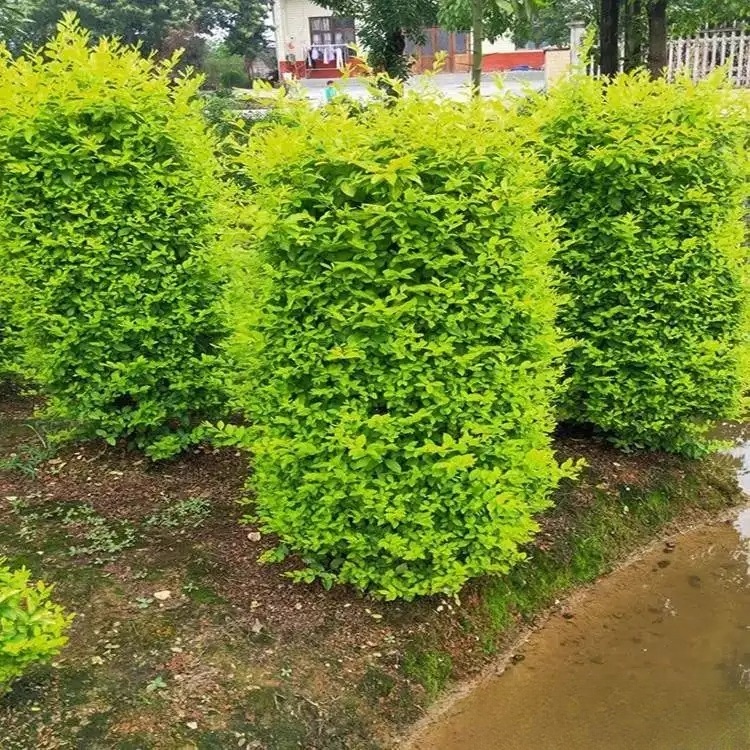
34. Yucca: Agavaceae Yucca, evergreen shrub, short stem, leaf base clustered, spirally arranged, thick leaves, 50-80 cm long, 4-7 cm wide, with hard spikes at the top, wrinkled leaves, dark green with a small amount of white powder, straight and oblique, smooth leaf margins, old leaves with a few filaments. Flowers bloom in summer and autumn. A tropical plant, strong, easy to survive, highly adaptable to soil, can grow well in any soil. Likes sunny and well-ventilated environment, and is extremely cold-resistant. Strong body, evergreen, bright flowers, can be planted in courtyards, beside rockery or rock gardens, has great ornamental value. In terms of ecological value, Yucca is a fast-growing, highly adaptable, multi-purpose economic plant and excellent greening plant, with strong resistance to toxic fumes.

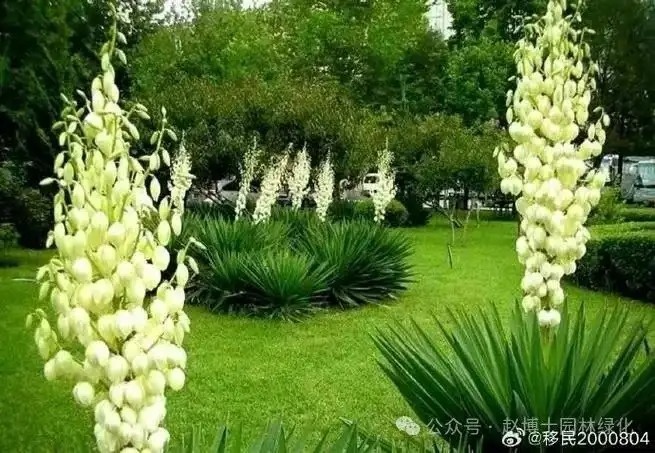
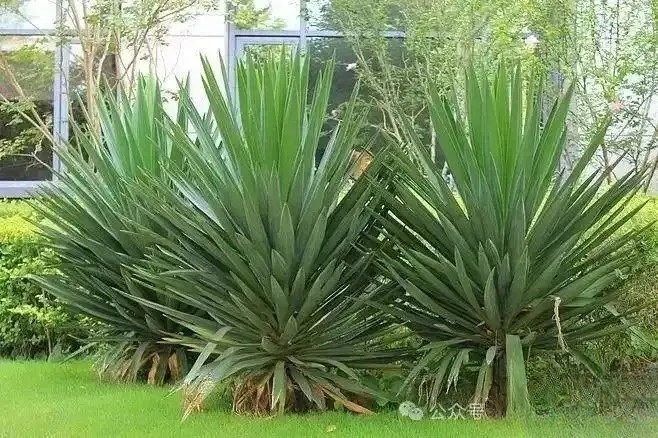
35. Big-leaf boxwood: This is a genus of the Buxus family, an evergreen shrub or small tree with slightly quadrangular twigs, densely growing branches and leaves, and a spherical crown. The leaves are opposite, obovate or elliptical, with blunt teeth on the edges, and dark green and shiny on the surface. The cymes are axillary, with long stalks, and the flowers are green and white. The capsules are spherical, light red, and the aril is orange-red. It is a temperate and subtropical tree species, produced in central and northern provinces, and is widely cultivated. It is also distributed in Japan. It likes light and is also shade-tolerant. It likes warm and humid climates and is also cold-resistant. It requires fertile and loose soil and is extremely resistant to pruning and shaping. It has dense branches and leaves, is evergreen all year round, has bright green leaves, and has many flower branches and variegated leaf variants. It is a beautiful foliage tree species. It is often used as a hedge and background planting material in gardens, and can also be planted in clusters on the edge of the lawn or in rows on both sides of the garden path; if it is modified and shaped, it is more suitable for planned symmetrical planting.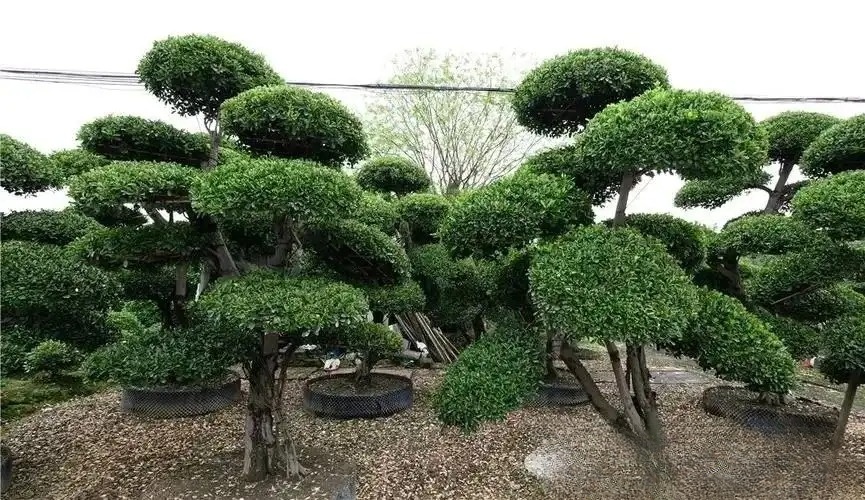
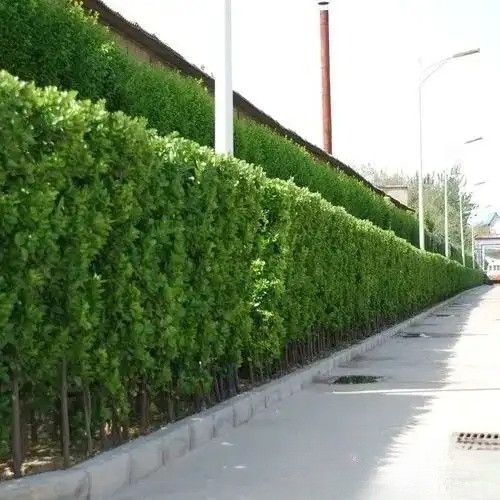
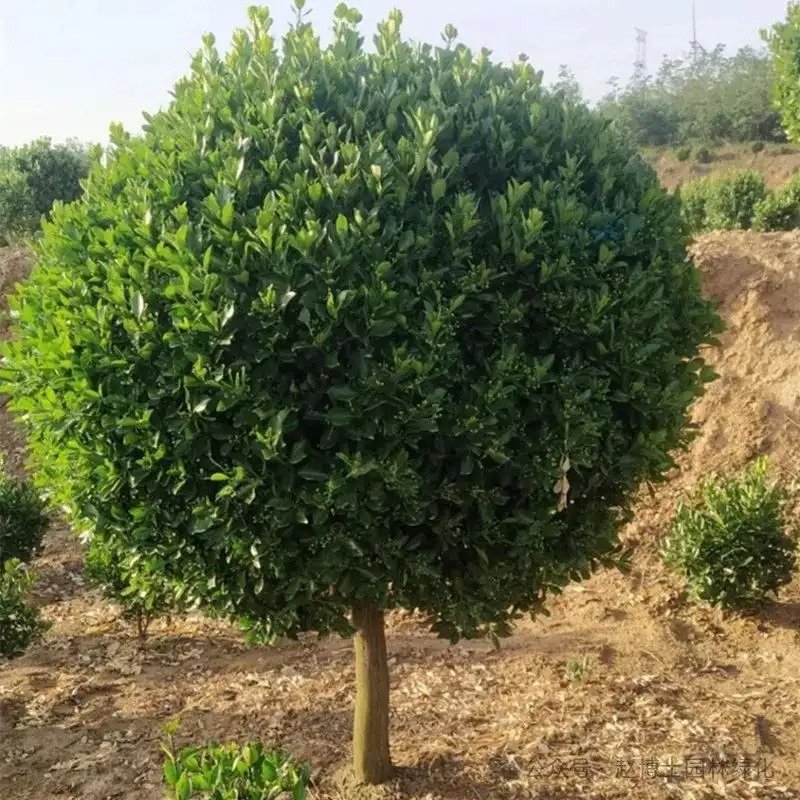
36. Fragrant wood: Pistacia genus, Anacardiaceae, evergreen shrub or small tree, leaves are even pinnate compound leaves, with fragrance, red young leaves, fruiting period from August to October, and red fruit. It is a positive tree, but also slightly shade-tolerant, likes warmth, requires a deep soil layer, strong germination, slow growth, and long life. This tree species is drought-resistant and barren, has a well-developed root system, strong resistance, and is a pioneer tree species for afforestation and greening in dry and hot valleys. It likes soil with sufficient light and not easy to accumulate water. After transplantation, leaves will fall off, which is a normal reaction, don't worry too much. Don't water the fragrant wood too often, once every 3-5 days is appropriate, and each watering must be irrigated thoroughly, that is, the water must be wet at the bottom. If you water too much, the roots will rot. The soil must be permeable. Fragrant wood cannot withstand strong winds, and the leaves will fall off if the wind is strong.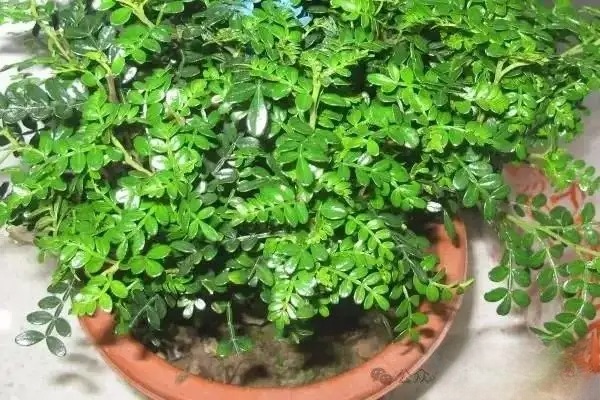
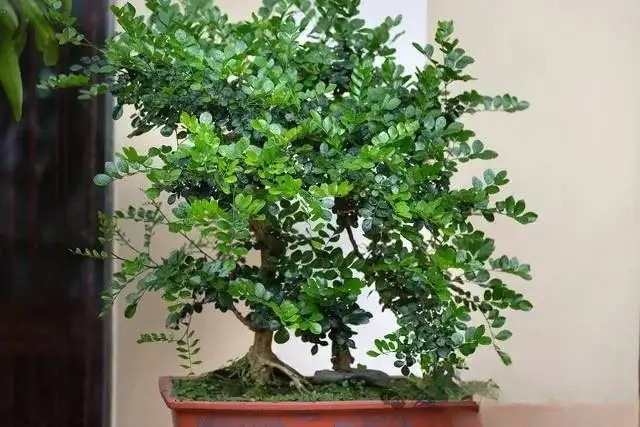
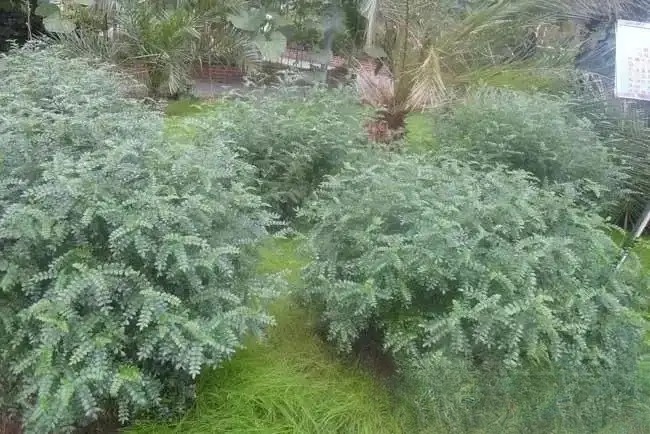
37. Bamboo palm (Bamboo of Guanyin): a bushy shrub with an upright stem, 1-3 meters high. The stem is as slender as a finger, unbranched, with leaf nodes, and covered with brown reticular fiber sheaths. The leaves are clustered at the top of the stem, palm-shaped, deeply cracked almost to the base, with 3-12 lobes, 20-25 cm long and 1-2 cm wide; the petiole is slender, about 8-20 cm. It often grows in shaded and moist bushes on hillsides and ditches. There are large-leaf, medium-leaf and fine-leaf bamboo palms cultivated, and there are also variegated bamboo palms. It likes warm, humid, semi-shaded and well-ventilated environments, fears the scorching sun, is slightly cold-resistant and can withstand low temperatures around 0℃. The plant shape is compact and beautiful, the plant cluster is upright, the leaf shape is elegant, the leaf color is dark green and shiny, it has both tropical phoenix charm and bamboo's elegance, it is very shade-tolerant, suitable for small and medium-sized potted plants for general family indoor furnishings and viewing, and can be planted in large pots for indoor decoration of large buildings. It is one of the large indoor foliage plants. It can be enjoyed for a long time in a bright room, and for 3-4 weeks in a darker room.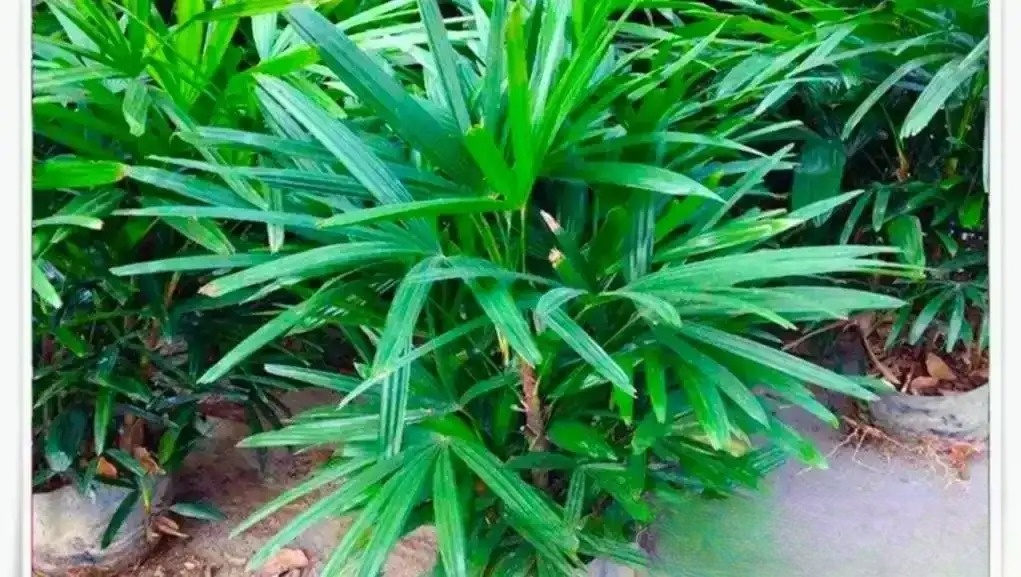
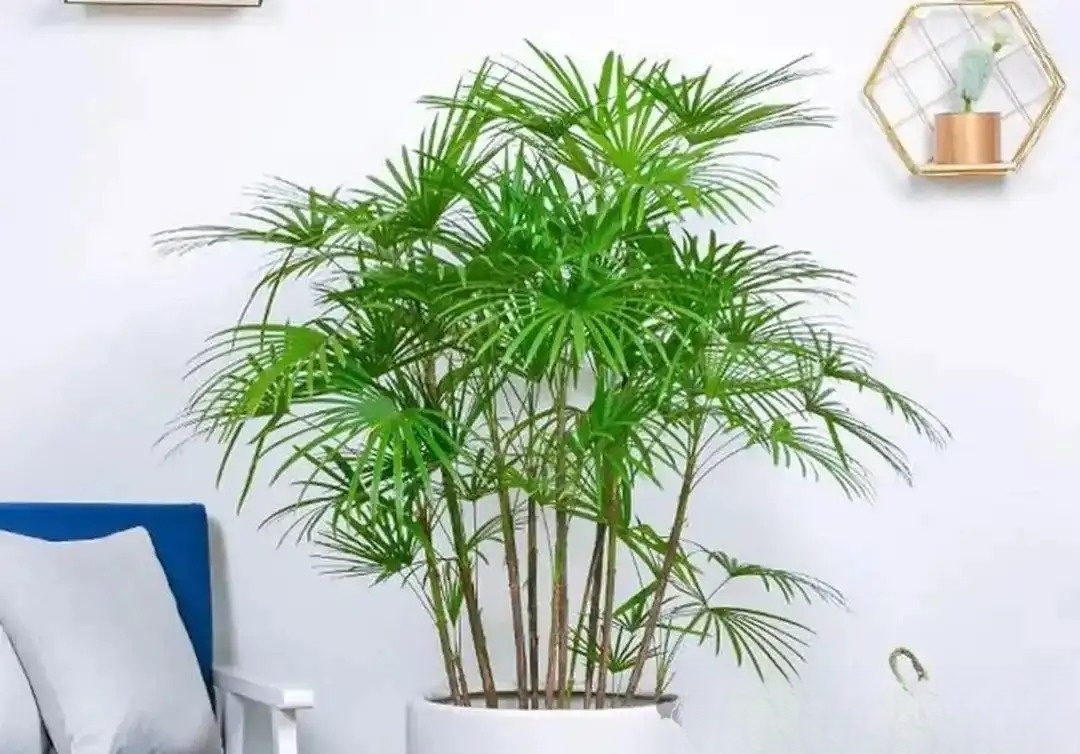
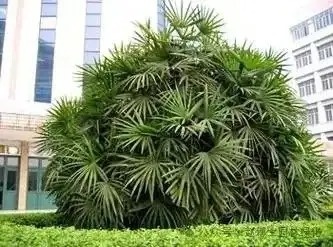
38. Small-leaved Abelia: Abelia genus, Caprifoliaceae, woody plant, deciduous shrub, less than 2 meters in height, pink flowers, flowers bloom continuously from July to September, young branches are reddish brown. Covered with inverted bristles. Leaves are opposite or in whorls of 3 leaves, oblong or oblong-lanceolate, entire or sparsely coarsely toothed, with ciliate margins. Double flowers are born in the axils of branches, without peduncles. Calyx tube covered with short prickles. Lobes 4. Corolla white to light red, lobes 4. Fruit slightly curved, sparsely covered with prickles. Flowering period May, fruiting period August-September. Tolerant to semi-shade, cold-resistant, drought-resistant, fast-growing, tolerant to pruning, likes warm and humid climates, and also tolerates drought and barrenness. Root system is well-developed, germination and sprouting ability are strong. It can grow in open areas, streamside, sparse forests or rock cracks. Planted in clusters or flower hedges, Abelia has drooping branches and leaves, a graceful tree posture, beautiful flowers, and unique calyx lobes. It can be planted in clumps beside lawns, next to buildings, or in rows along roadsides as flower hedges.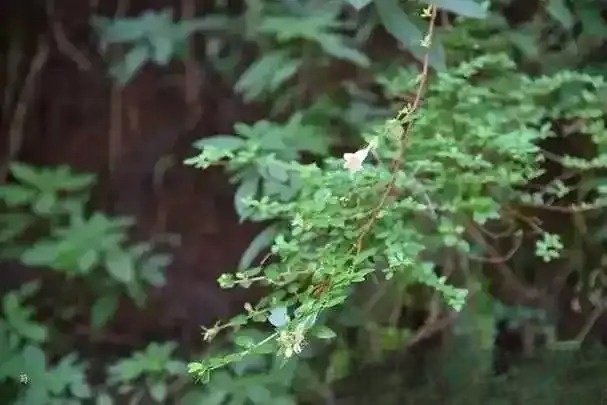
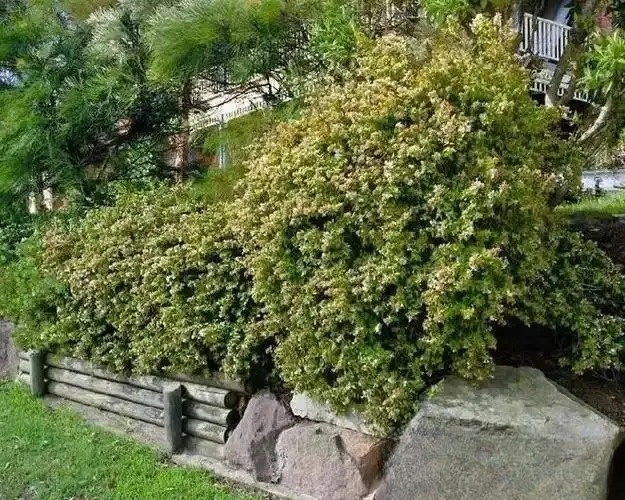
39. Golden Coral: A genus of the family Cornaceae, an evergreen shrub that can reach 3 meters in height. Growing in clusters, with a spherical crown. The bark is initially green and smooth, then turns gray-green. The leaves are opposite, leathery, rectangular, with sparsely coarse teeth on the margins, glossy green on both sides, and covered with yellow spots, resembling golden sprinkles. It has strong adaptability. It likes warm, humid environments and is not very cold-resistant. It thrives in loose, fertile, slightly acidic soil or neutral loam under the forest. It grows slowly and develops poorly in places with direct sunlight and no shade. It tolerates pruning and has very few diseases and insect pests. It is also very resistant to smoke damage. It has luxuriant branches and leaves and does not wither in winter. It is a precious shade-tolerant shrub. It is suitable to be planted under trees on both sides of the gate. It is suitable for any shady and moist place, such as the corners of courtyard walls, beside pools, lakes, streams and forests. It is also very harmonious and appropriate if planted on rockery as a foil for flowering shrubs, or as the lower tone tree species at the edge of trees and forests.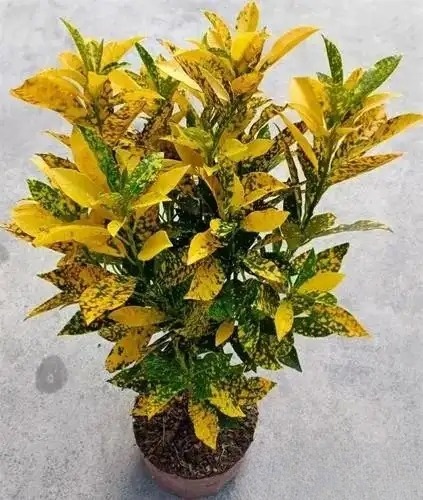
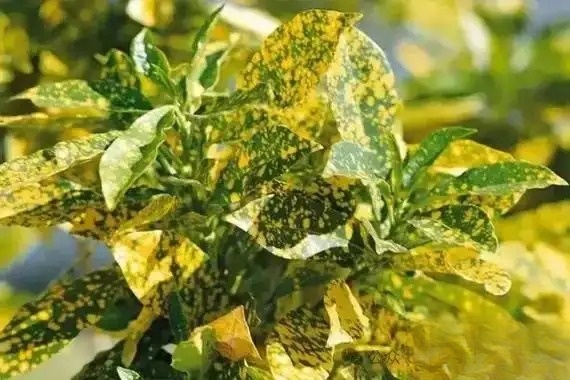
40. Canna indica: Canna genus, Canna family, plant height 1 to 1.5 meters, covered with white frost. Large, alternate leaves, oblong, petiole sheath-shaped. Flowering period June to October. Canna indica is divided into different varieties according to flower color. Its leaf color is pink green, bright green or bronze, and there are also red and green mosaic or yellow and green mosaic varieties. There are also dwarf species, with a plant height of only 50 cm to 60 cm. The tall species of banana lotus can reach a plant height of 2 to 3 meters. It likes high temperature and plenty of sunshine. Fertile loam is the most suitable. It is resistant to moisture, but avoids waterlogging. It is afraid of strong wind. The leaves are emerald green and the flowers are bright. The flower colors are milky white, light yellow, orange, pink, bright red, purple and sprinkled gold, etc. It is suitable for flower border background or planting in the center of the flower bed.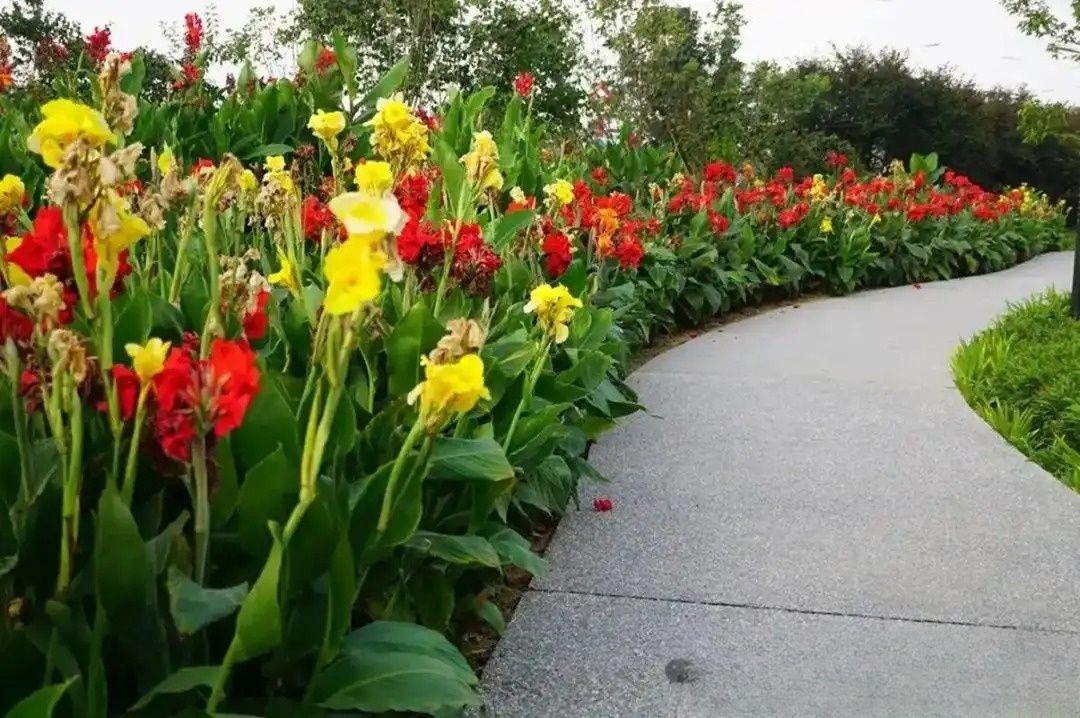
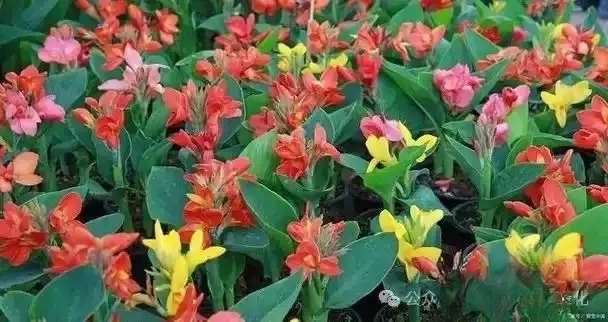
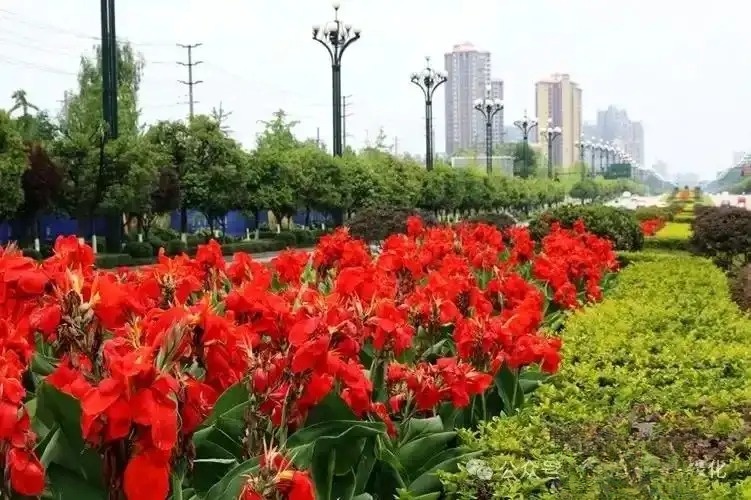
41. Fujian tea : It is a small tree of the Boraginaceae family and the genus Kijiki. It has leathery leaves, dark green, and white flowers. It likes a warm, humid environment with sunlight. It is not cold-resistant and can only survive the winter safely in temperatures above 5°C. It will be dormant or semi-dormant when it survives the winter at 5-10°C. Kijiki is vigorous and upright, with upright stems and small white flowers of icy jade-like texture. Its branches are densely lying and slanting. It is often used as a potted plant for viewing. It is a good tree species for making bonsai and can also be placed in the courtyard for viewing. Due to its strong growth and tolerance to pruning, it is often planted as a hedge in Fujian and Guangdong .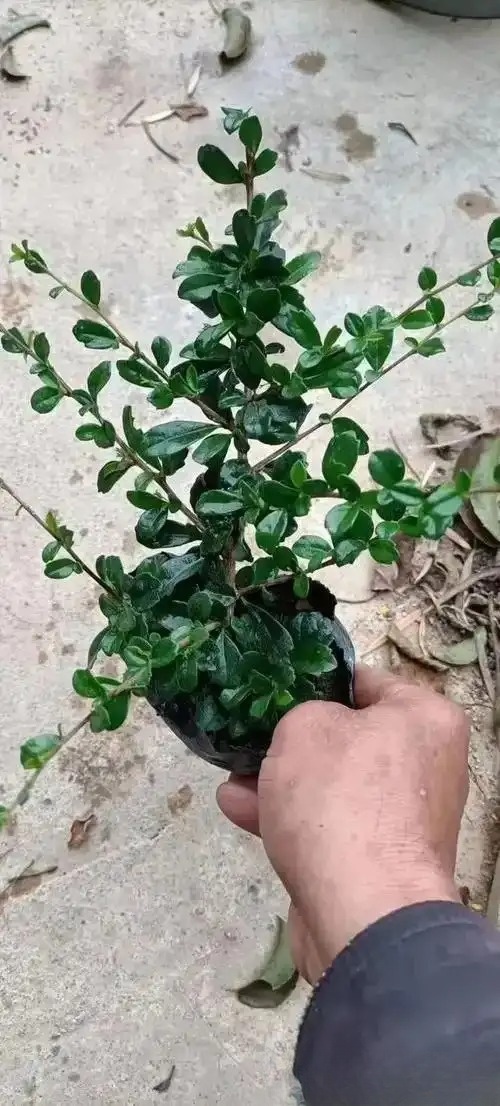
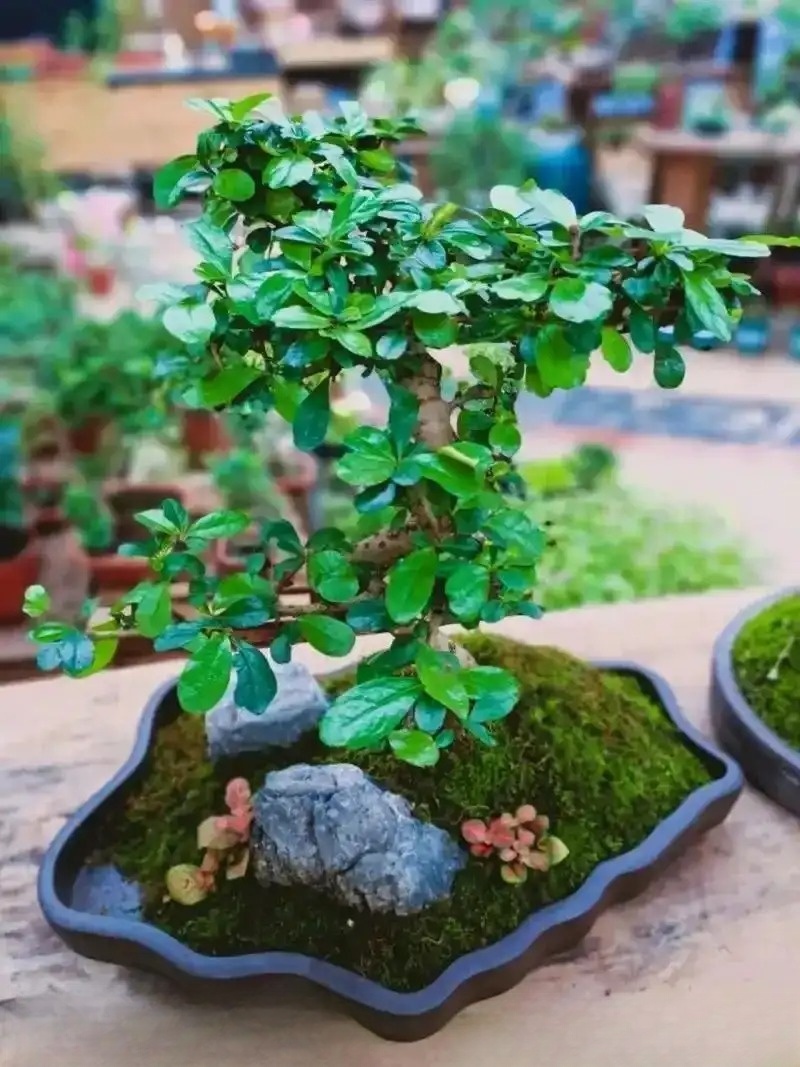
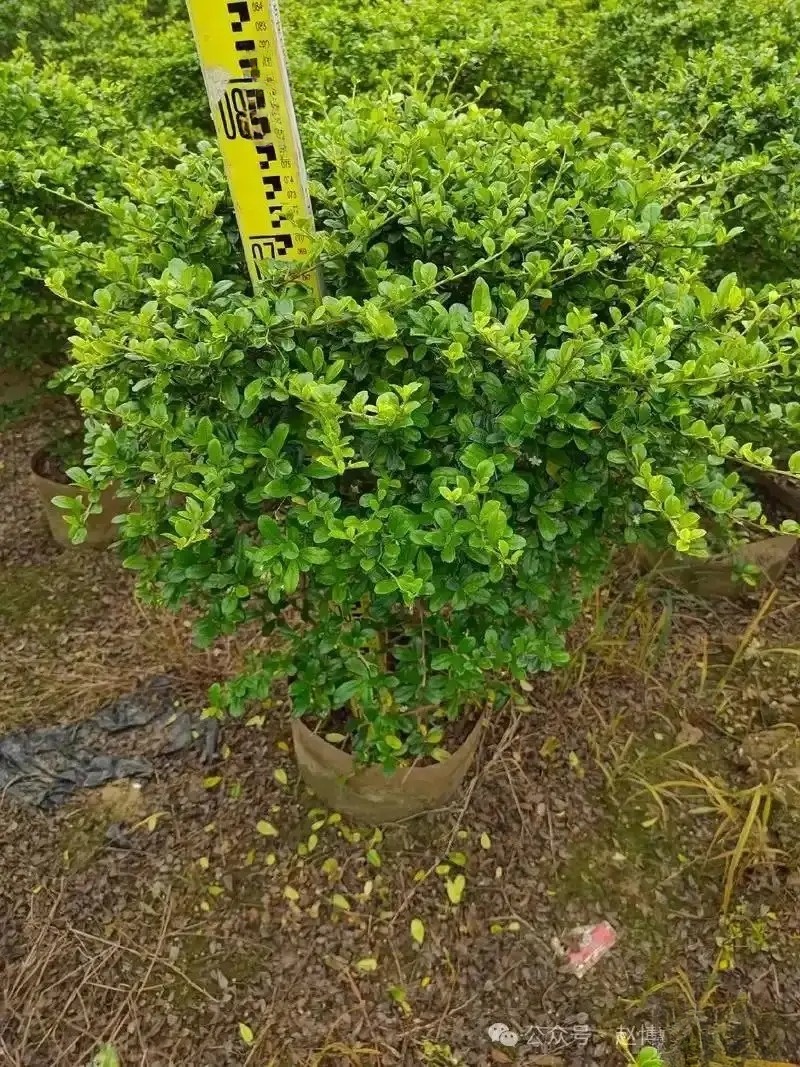
42. Osmanthus fragrans: an evergreen shrub of the Euphorbiaceae family and the genus Euphorbia, with opposite leaves, green on the surface and purple-red on the back. Originated from tropical rain forests, it likes a warm environment, but is afraid of sunlight exposure and tolerates semi-shade. It likes loose and fertile acidic humus soil, is not drought-tolerant, avoids waterlogging, is extremely alkali-intolerant, and requires a well-ventilated environment. Osmanthus fragrans has a beautiful plant shape, dense branches and leaves, fresh and beautiful, and has great ornamental value. It is often used for greening courtyards, parks, residential areas, campuses, office areas, lawns, forest edges, etc.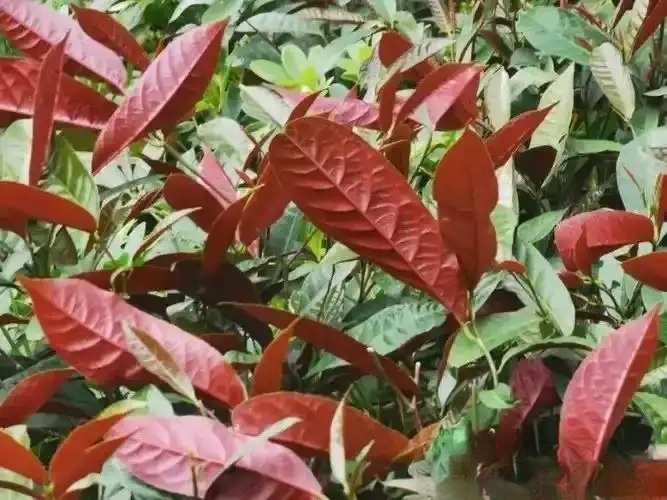
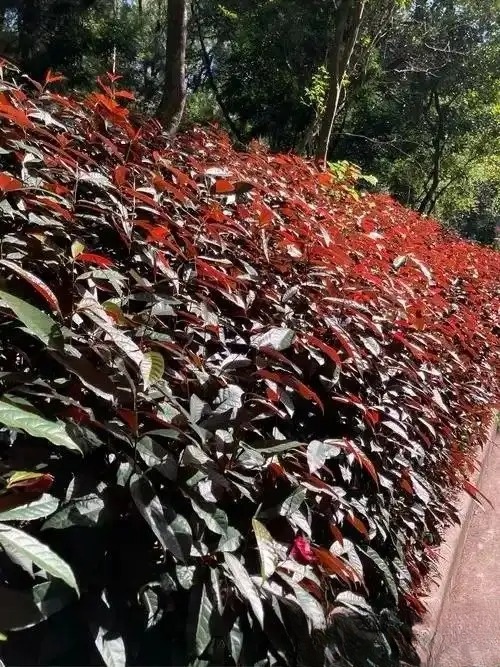
43. Lantana: Also known as five-color plum, five-color flower, wishful grass, stinky grass, etc., it belongs to the genus Lantana of the Verbenaceae family, with many branches and a square columnar stem. The leaves are opposite and ovate, wrinkled, and the back is pink and white. It likes a warm, humid, sunny environment, is light-loving, drought-resistant, and not cold-resistant. It grows better in loose, fertile, and well-drained sandy loam. It is resistant to pruning and is mostly potted in the north of the Yangtze River. Lantana flowers are beautiful and are excellent flowering shrubs. The flowering period is long, the color of the flowers is rich and colorful. The flowers are yellow or pink at first, then turn orange or orange-red, and finally turn red. It is often cultivated in gardens everywhere for viewing. Lantana has a long flowering period and strong adaptability. It is often planted in clusters, ground covers, and hedges in gardens. It can also be used to embellish lawns and can be planted next to rocks. It can also be used for flower bed decoration. In the north, potted plants are used for indoor decoration or flower bed placement.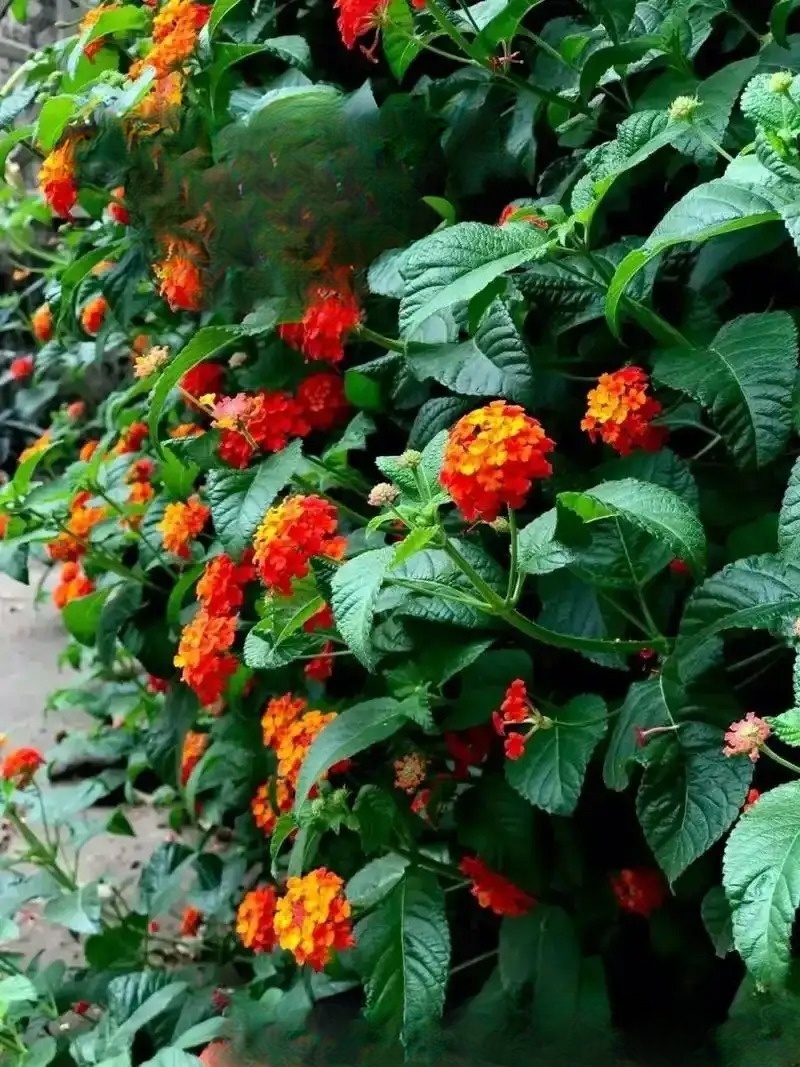
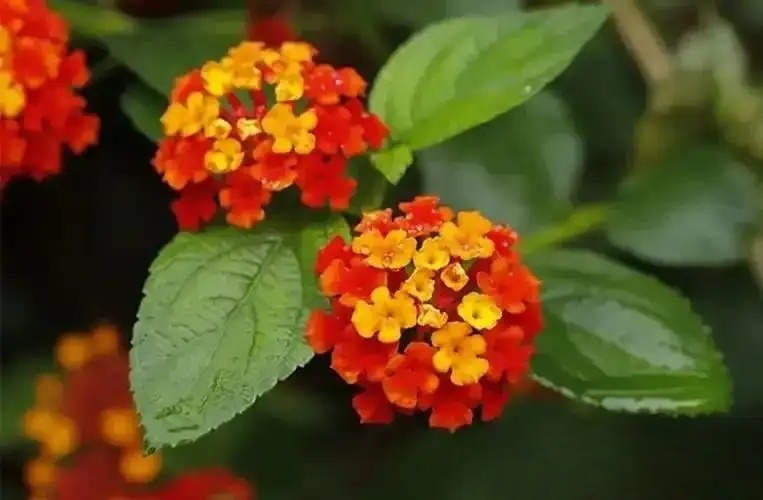
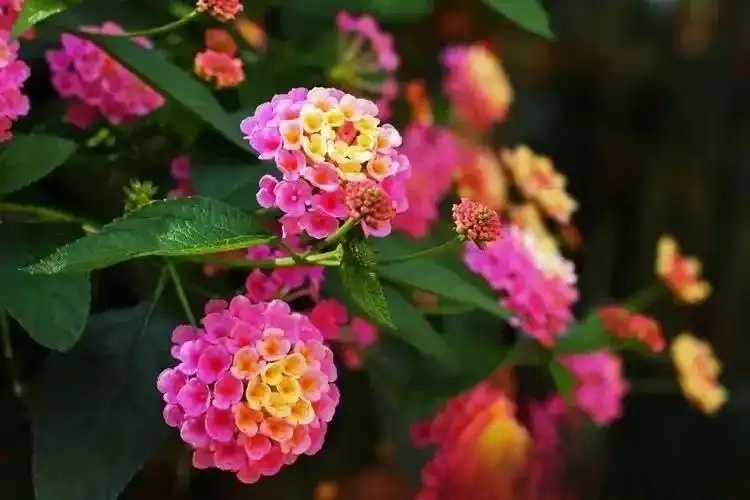
44. Soft-branched yellow bell: A plant of the genus genus genus of the Apocynaceae family, a vine-like shrub; up to 4 meters long, with latex; leaves opposite or in whorls of 3-5, obovate, narrow obovate or oblong. The corolla is funnel-shaped and five-lobed, golden yellow. It likes a warm, humid and sunny environment, is not cold-resistant, but is resistant to high temperatures, drought, fertilizer, and pruning. It avoids stagnant water and saline-alkali land. The soft-branched yellow bell has orange-yellow flowers, which are large and beautiful and are used for ornamental purposes. The soft-branched yellow bell has certain insecticidal activity. In agricultural production and landscaping, the insecticidal activity of the soft-branched yellow bell extract can be fully utilized to control pests.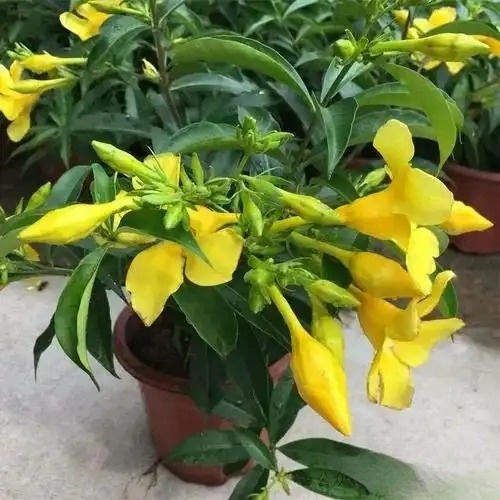
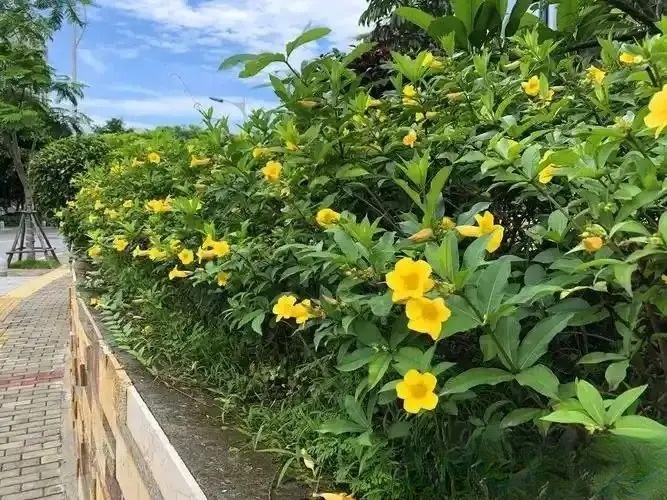
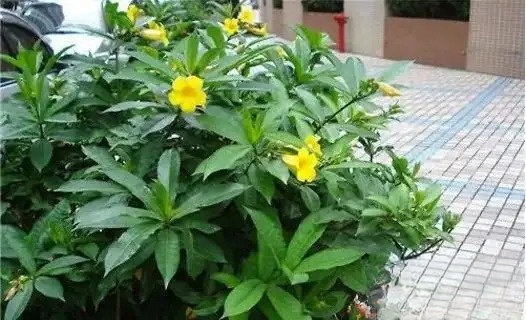
45. Oleander: Also known as red oleander and European oleander, it is an evergreen upright shrub of the genus Oleander in the family Apocynaceae. It has three leaves arranged in whorls and a funnel-shaped corolla, available in red and white. It likes warm and humid climates, is not cold-resistant, and is not tolerant to water and humidity. It requires high, dry and well-drained places for planting. It likes light and fertilizer, and can also adapt to a shady environment, but the flowers are less and lighter in shaded areas. It has strong sprouting ability and is easy to recover after being damaged. The leaves of oleander are like willows and bamboos, and the red flowers are bright, better than peach blossoms. The corolla is pink to dark red or white, with a special fragrance. The flowering period is from June to October. It is a famous ornamental flower. It is often cultivated in parks, scenic spots, roadsides, rivers, and lakes.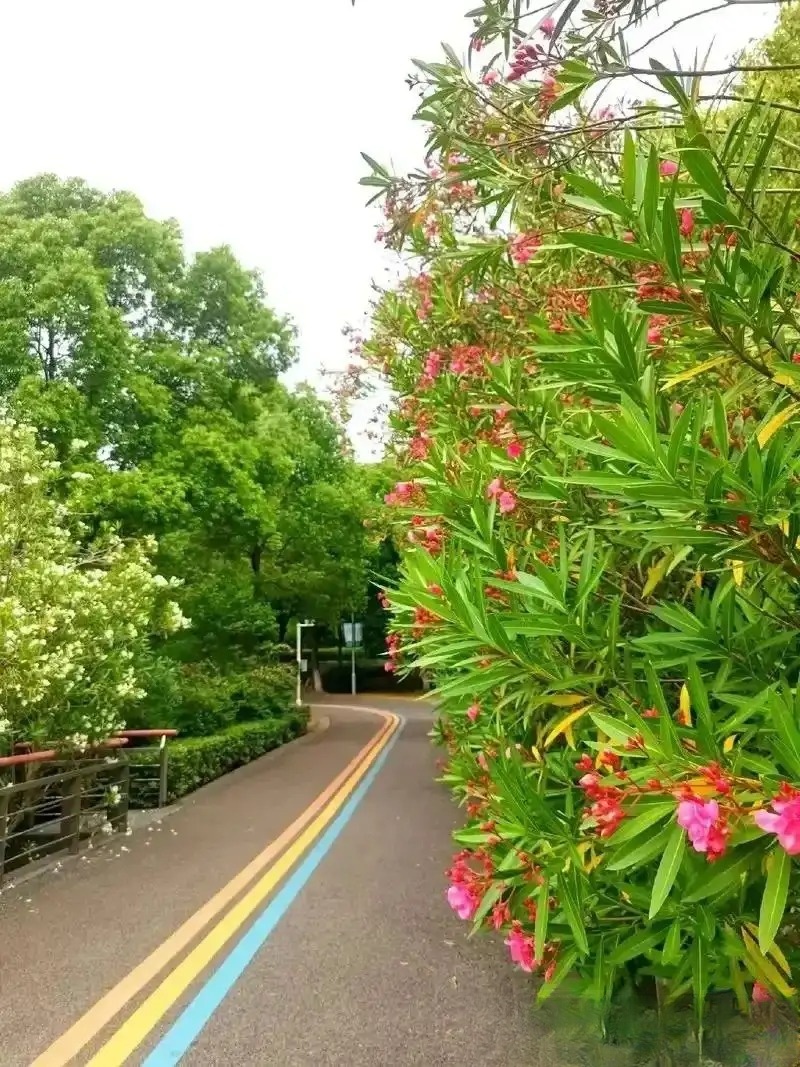
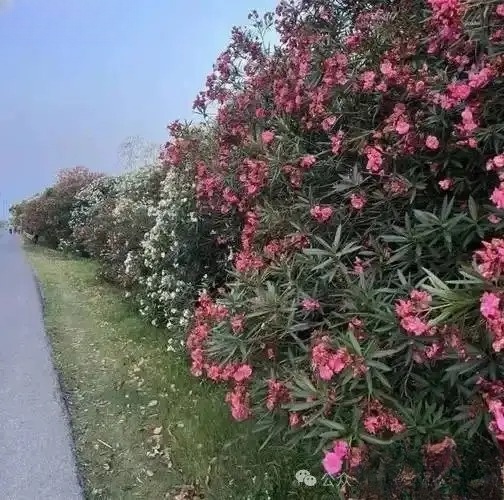
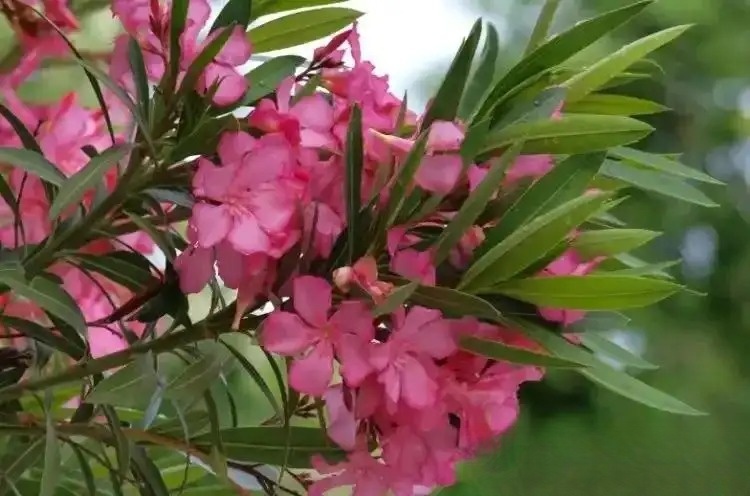
46. Strelitzia reginae: Also known as bird of paradise, it is a perennial herbaceous plant of the genus Strelitzia in the family Strelitziaceae; it has no woody trunk; the inflorescence grows on a peduncle that is nearly as long as or slightly shorter than the petiole, with one spathe; the flowers are small, the sepals are orange-yellow, 7.5-10 cm long, and the base of the arrow-shaped petals has ear-shaped lobes, dark blue; the flowering period is in winter. The leaves are arranged on both sides opposite each other, and there are total spathe bracts outside the inflorescence. It is a subtropical long-day plant. It likes a warm, humid, sunny environment, and is afraid of severe cold, and avoids extreme heat, drought, and waterlogging. It requires well-drained, loose, fertile, and sandy loam with a pH value of 6-7. The optimum temperature during the growing period is 20-28℃. Strelitzia reginae is evergreen all year round, and the plant is unique, with a clear and elegant feeling, making it a good choice for indoor viewing. In southern regions such as Fujian, Guangdong, Hainan, Guangxi, Hong Kong and Macao, Strelitzia reginae can be planted in clusters in the corners of courtyards for use in courtyard landscaping and embellishment of flower beds and flower borders.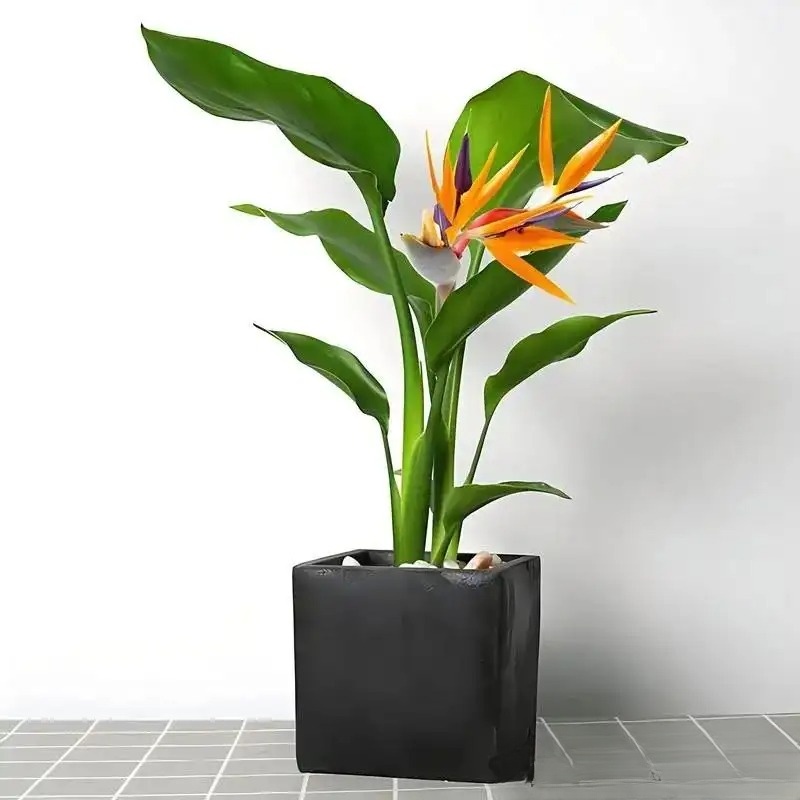
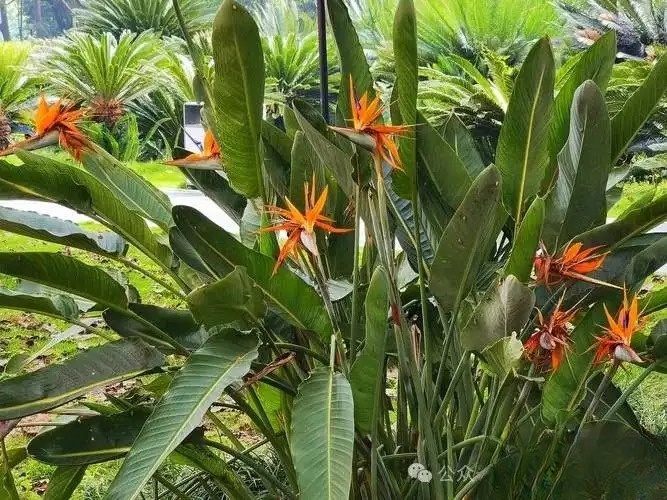
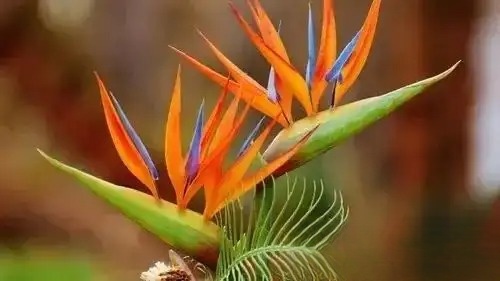
47. Traveler's banana: It is an evergreen perennial herbaceous plant of the genus Traveler's banana of the Strelitziaceae family. The stem is like a palm; the trunk is upright and clustered, cylindrical like a palm, with a rough surface and obvious dry lines. It looks like a large folding fan, with leaves arranged at the top of the stem in a narrow fan shape, and scorpion tail cymes in the axillary. It likes warm and sunny environments, and the suitable growth temperature is 15~30℃, and the temperature at night must not be lower than 8℃. It is relatively light-loving and suitable for growing in hot and humid climates. The traveler's banana has an elegant and unique plant shape. It can be used as a large garden ornamental plant for courtyard greening. It can be planted alone, in clusters or in rows. In addition, the traveler's banana can also be grown in pots indoors in the northern region. The leaves are large and strange, with a graceful posture. It is used to decorate hotels, pavilions, corridors, or forest gardens in tropical tourist attractions. It has a unique style and tropical scenery. Its decorative effect is excellent. It is also a plant suitable for planting and landscaping in parks or campuses.
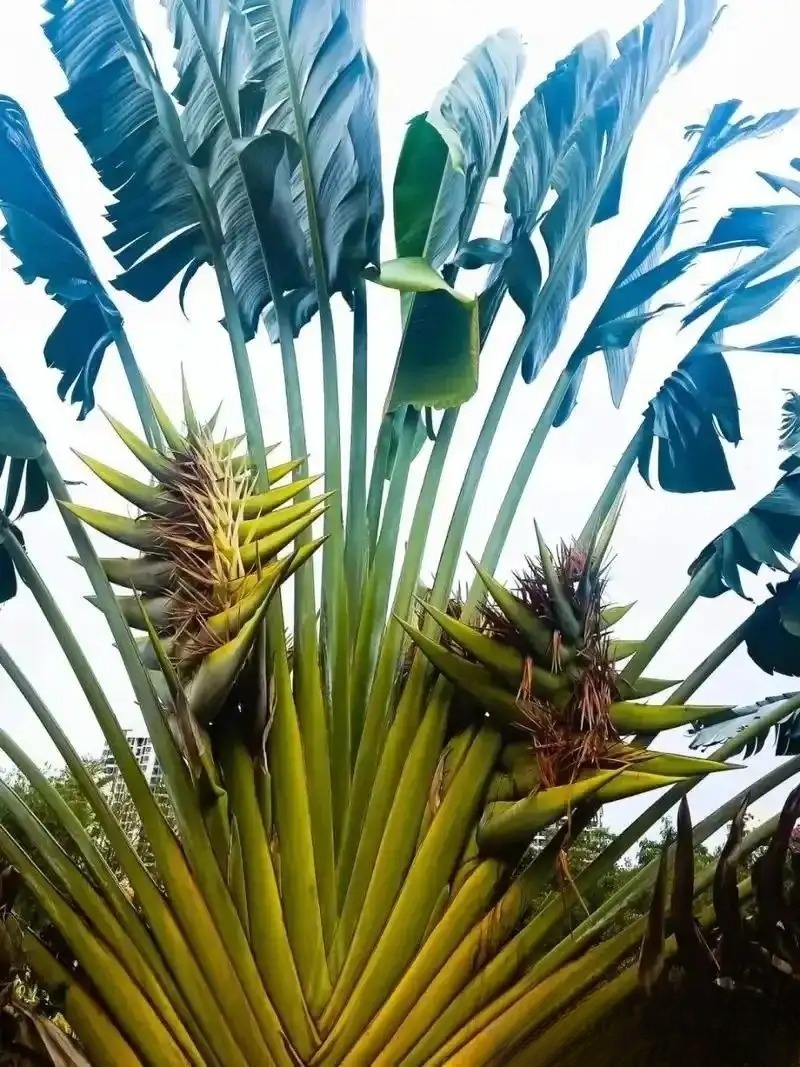
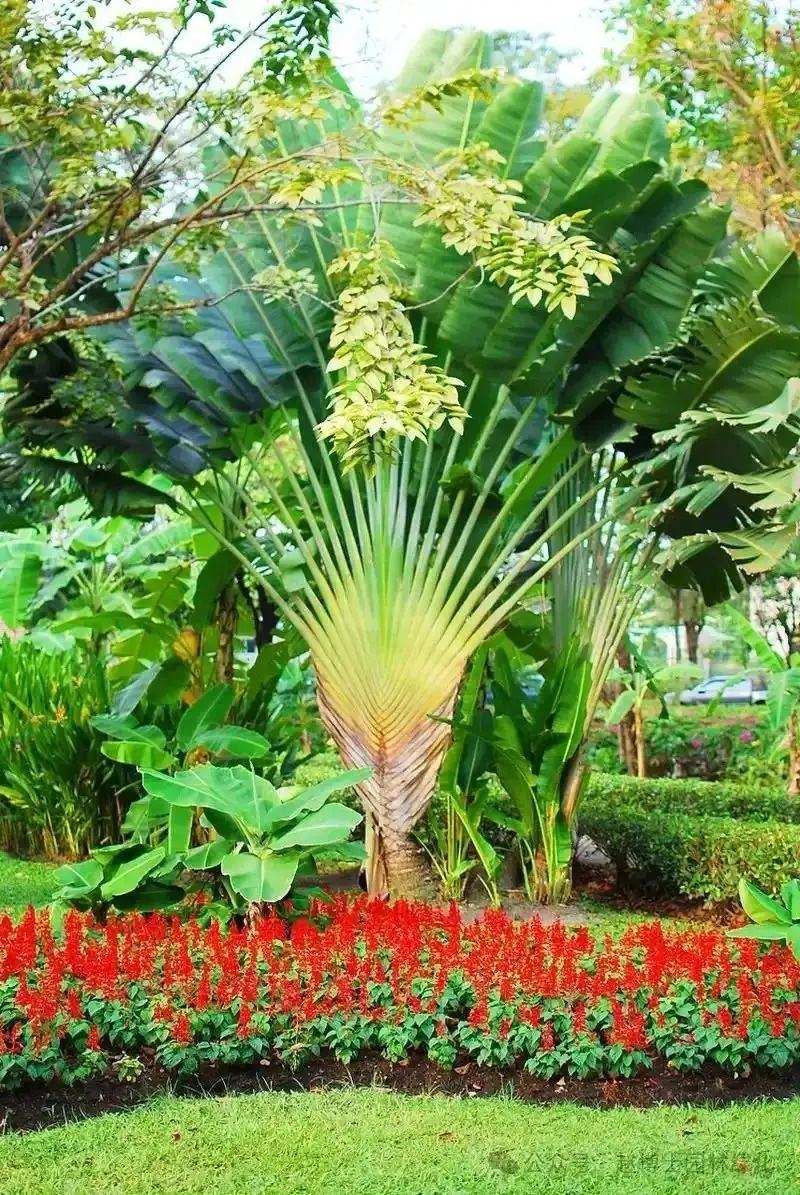
48. Green Lily: A plant of the Acanthaceae family of the order Tubulales. Its underground rhizomes spread and grow, forming an interwoven horizontal rhizome network with buds growing on them. The buds grow upwards into seedlings above the ground, and correspondingly produce adventitious roots to form new plants. The stem is slightly square, grooved, and reddish brown. Single flowers have a short life span, blooming in the early morning and withering in the evening. The capsule is long, green at first, and turns brown when mature. The seeds are scattered after the fruit cracks, and the seeds are small and powdery. The plant has strong resistance to adversity, wide adaptability, and is not strict with environmental conditions. It has strong drought and moisture tolerance. It likes high temperatures and is resistant to extreme heat. The optimum growth temperature is 22℃~30℃. It is not selective in soil, has strong tolerance to poor soil, and is resistant to slightly saline-alkali soil. It is not strict in terms of light, and can be exposed to full or half sunlight. The flower border arrangement mixes Green Lily with other flowers in a natural patch, showing the natural beauty of flowers and the beauty of the community formed by the combination of different types of plants. The tall species of Lily of the Valley can be used as linear flower materials in the design of the back side of the single-sided flower border or the middle of the double-sided flower border, and the dwarf species can be used as edging materials in the design of the edge of the flower border. Flower bed arrangement Lily of the Valley has a long flowering period and is an ideal material for arranging flower beds. In particular, it has strong high temperature resistance and is a rare flower material for summer flower beds. Its elegant blue-purple color is also quite eye-catching compared with common flowers and plants, and can be combined with other plants to form a colorful flower bed pattern. Basic planting Planting Lily of the Valley in the narrow strip formed between the building and the road can enrich the building facade and beautify the surrounding environment. Or plant Lily of the Valley at the wall foundation to buffer the rigid architectural lines between the wall foundation, the corner of the wall and the ground. Ground cover The dwarf species of Lily of the Valley have dark green branches and leaves, dense small flowers, and can grow for many years after planting. It can be used as a ground cover plant to cover the ground to increase the layering of the garden landscape. Rock garden layout: Green lily has strong resistance to drought, barrenness and saline soil, so it can be matched with rocks, walls or gravel to form a unique rock garden landscape. Green lily has the biological characteristics of enriching cadmium. Green lily can be planted in soil or water contaminated by cadmium, the underground part is retained, and the above-ground part is harvested regularly to remove the cadmium in the contaminated soil and water.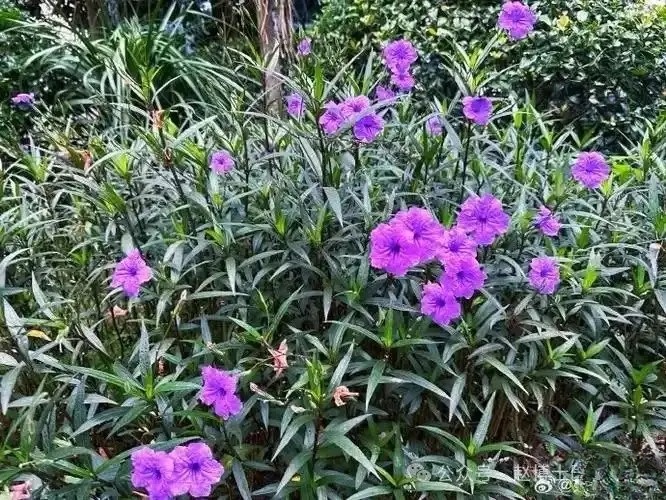
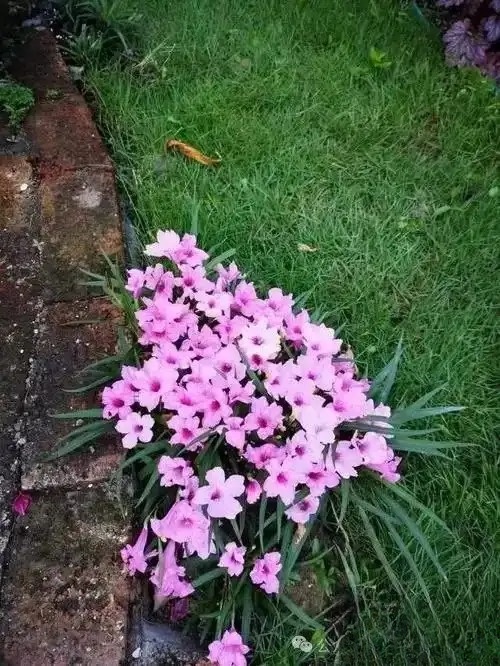
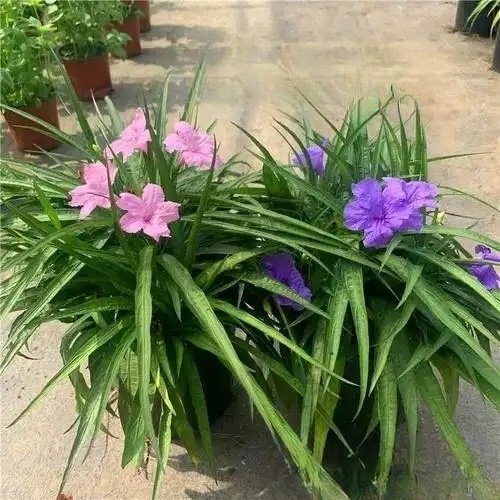
49. Dwarf crape myrtle: A plant of the Lythraceae family, dwarf crape myrtle is a small deciduous shrub with extremely luxuriant flowers and strong vine branches. The flowering period is from June to October, and the plant height is 0.5~1.0m. It is light-loving and drought-tolerant, and should be planted in places with good drainage. It is used as a large green belt and slope protection vegetation; it can be used as a planting tree species for green belts, isolation belts, slope protection, and sand-sealing vegetation on highways, railways, levees, and river slopes. It can also be used as a hedge and color block planting tree species for greening and beautification of mining areas, residential areas, and scenic tourist areas. It is also the preferred flowering shrub species for greening of large and medium-sized cities and industrial and mining areas where harmful gases exceed the standard. As a flower bed plant configuration: Many woody plants planted in flower beds rarely bloom in summer. If they are dotted with dozens or several dwarf crape myrtles to form color blocks, or trimmed into various forms of combined flower blocks, their landscape effects can be greatly improved. Of course, they can also be planted individually and naturally form flower balls. Make various shapes: high-stem crape myrtle, choose local high-stem crape myrtle of a certain height and thickness as the rootstock, take dwarf crape myrtle as the scion for grafting, and combine pruning to cultivate ball-shaped, umbrella-shaped, tower-shaped, and weeping branch-shaped corollas. According to the characteristics of the vigorous growth of dwarf crape myrtle, it can also be pruned into style, geometric shape, animal shape, or woven into dwarf crape myrtle flower screen, etc.
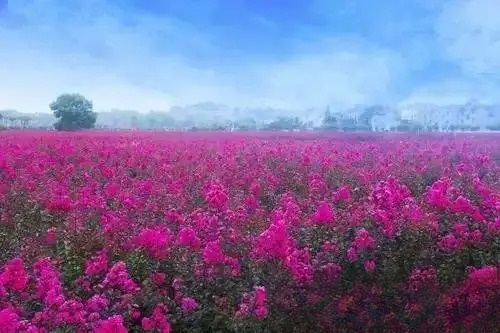
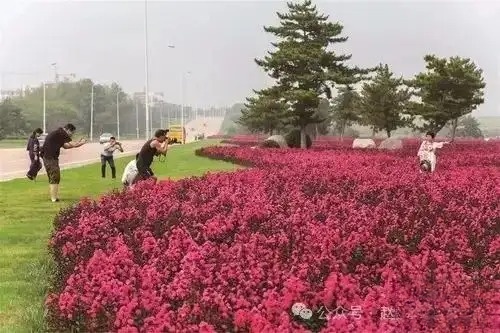
50. Wintersweet: It is a shrub belonging to the family Chimonaceae. The outer part of the perianth is waxy yellow, the inner part is yellow, shiny waxy, with purple stripes, and is in the shape of a fragrant receptacle with a contracted mouth. The fruit receptacle is nearly woody, in the shape of a receptacle or obovate ellipse, with a contracted mouth, and has a drill-shaped lanceolate hairy appendage. The flowering period is from November to March of the following year, and the fruiting period is from April to November. Wintersweet grows in the shrub forest on the hillside or by the stream. It grows best on deep, fertile, loose, well-drained slightly acidic sandy loam, and grows poorly on saline-alkali land. The flowers are fragrant and beautiful, and it is a garden greening plant.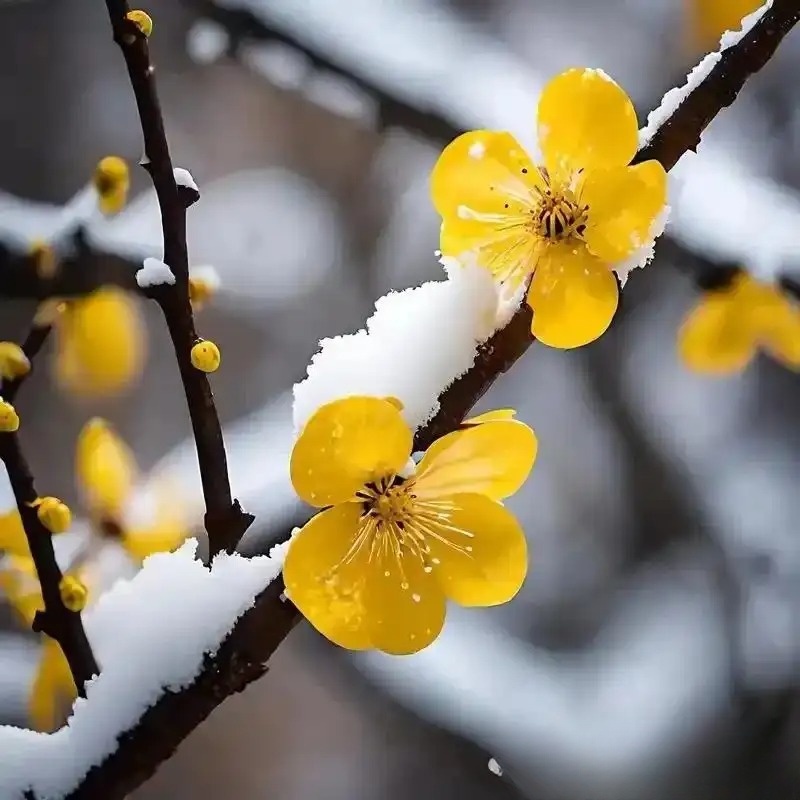
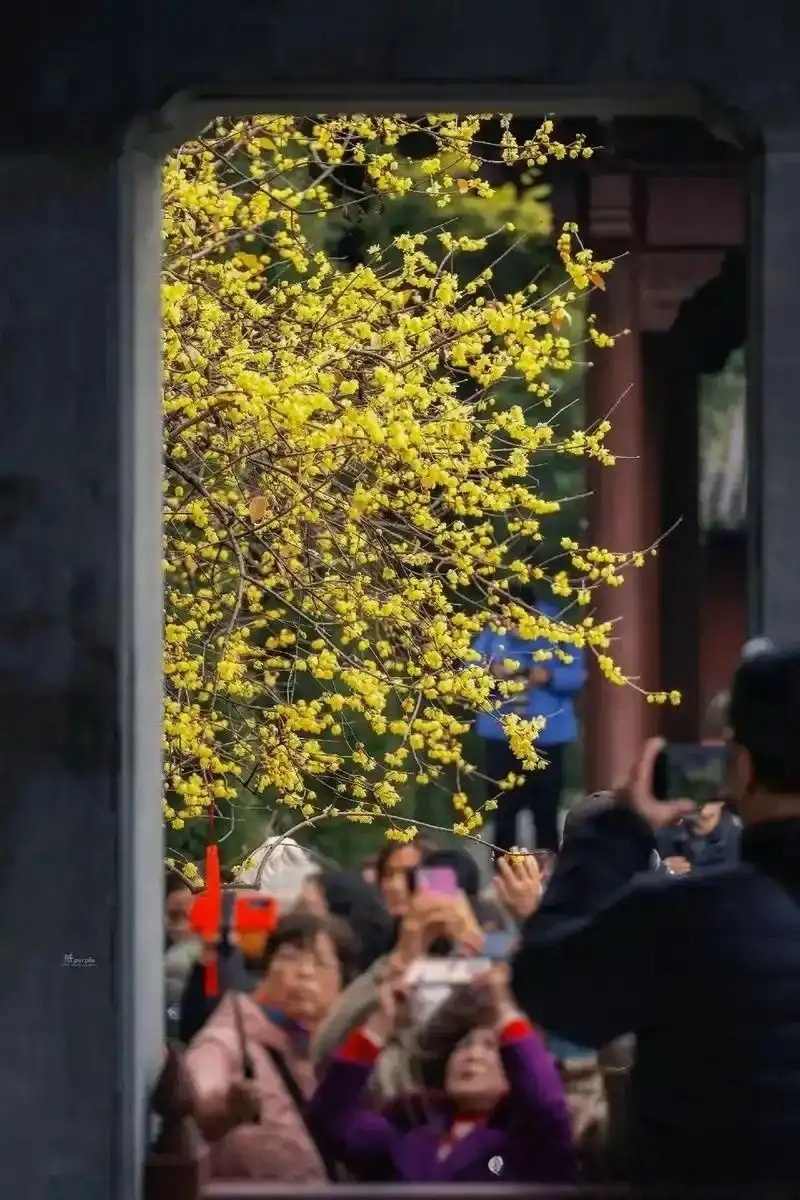
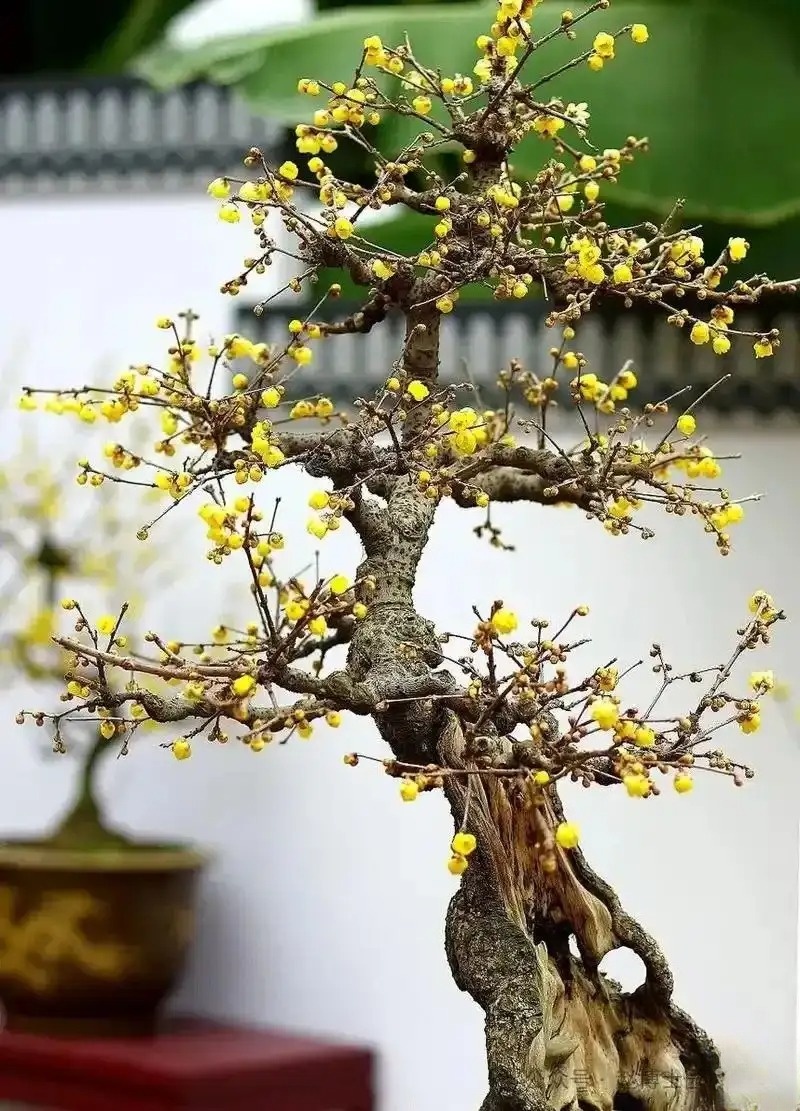
51. Yellow Sophora japonica: A plant of the genus Sophora in the family Fabaceae. It is a herb or subshrub, less than 1 meter tall. The stems, branches, leaf axes and inflorescences are densely covered with golden or rusty hairs. The pinnate compound leaves are 15-20 cm long, with 8-12 pairs of leaflets, opposite or nearly opposite, papery, oblong or oblong, and the racemes are terminal. Yellow Sophora japonica likes warmth, is resistant to light frost, and prefers a sunny, humid, and windproof environment. It is suitable for planting in fertile, loose, and well-drained soil. Yellow Sophora japonica is an excellent ornamental plant. It can be planted in parks, lakesides, green spaces, and many other places for viewing.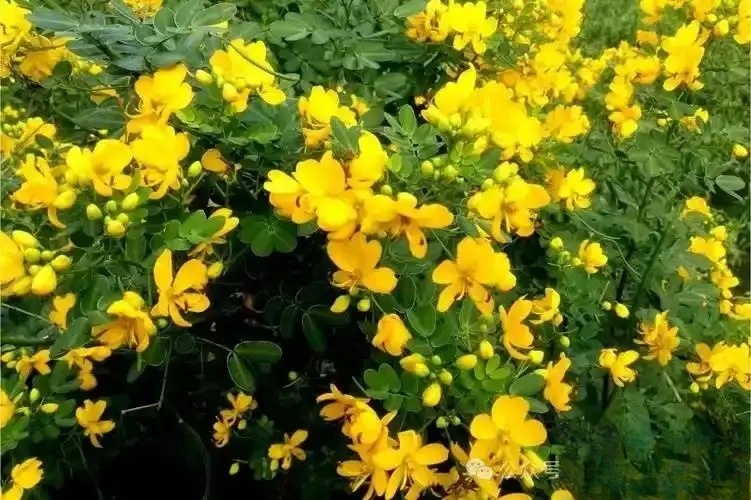
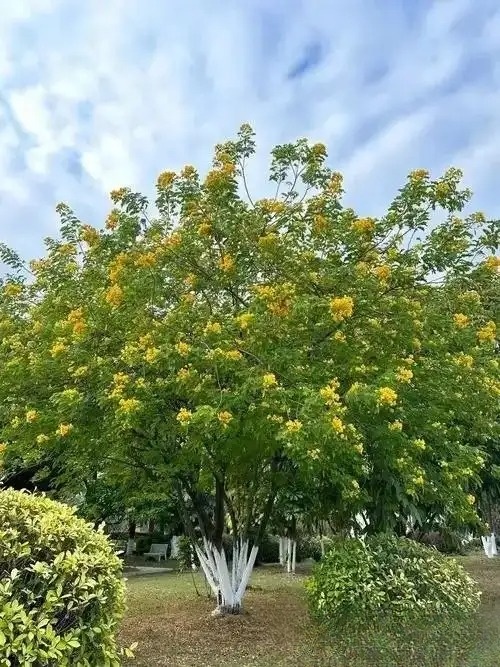
52. Purple-leaved Berberis: A deciduous shrub belonging to the genus Berberis of the family Berberaceae. The young branches of Purple-leaved Berberis are light red with green, glabrous, and the old branches are dark red with ridges; the leaves are rhombic-ovate, obtuse at the tip, and the base extends downward to form a short stalk, entire, with fine papillae, and glabrous on both sides; the perianth is yellow, and the bracts are red; the petals are oblong-obovate, slightly emarginate at the tip, and the glands above the base are close, and the anther tip is truncated; the berries are red and elliptical. The flowering period is from April to June, and the fruiting period is from July to October. It likes a cool, humid and sunny environment, and is cold-resistant, barren-resistant, heat-intolerant, and waterlogged-resistant. It is often used in gardens as a block color arrangement with evergreen tree species, and the effect is better. It can also be potted for viewing or the fruit branches can be cut and inserted into a vase for indoor decoration. However, the plant is the intermediate host of wheat emerald. Berberis purpurogena blooms yellow flowers in spring and bears red fruits in autumn. It is an ornamental tree with beautiful leaves, flowers and fruits. It is often used as a hedge in gardens or planted in clusters at the corners of garden paths, dotted by pools and rocks. It can also be used as a border for large flower beds or cut into spherical symmetrical shapes for planting. It is suitable for planting in large areas on slopes, and can be used with evergreen trees to arrange flower beds and flower borders. It is an important tree species for color block combination in garden greening. It can also be potted for viewing or the fruit branches can be cut and placed in vases for indoor decoration. Because it is relatively shade-tolerant, it is a good material for planting under trees and in the shade of buildings. It can also be potted and placed indoors or outdoors.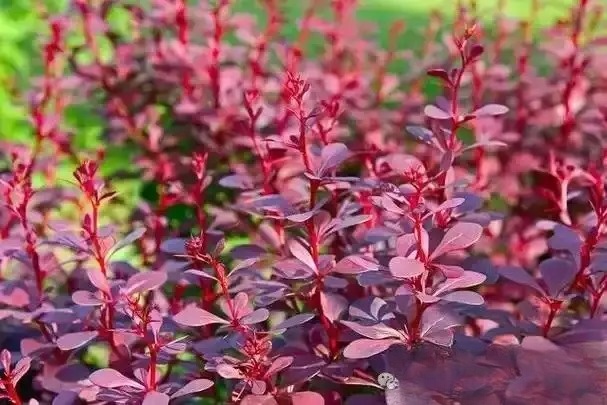
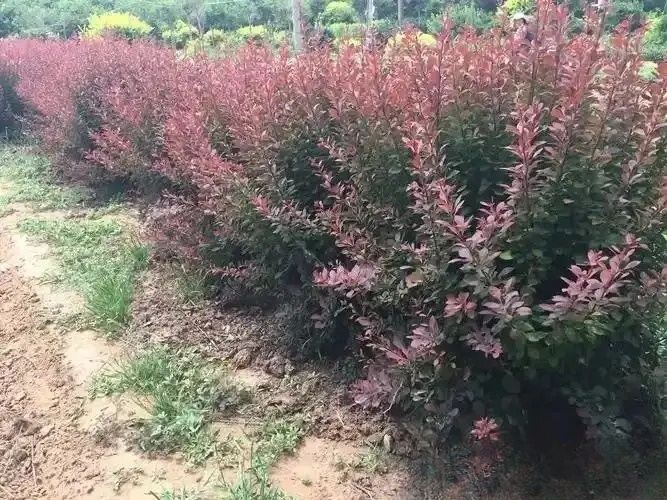
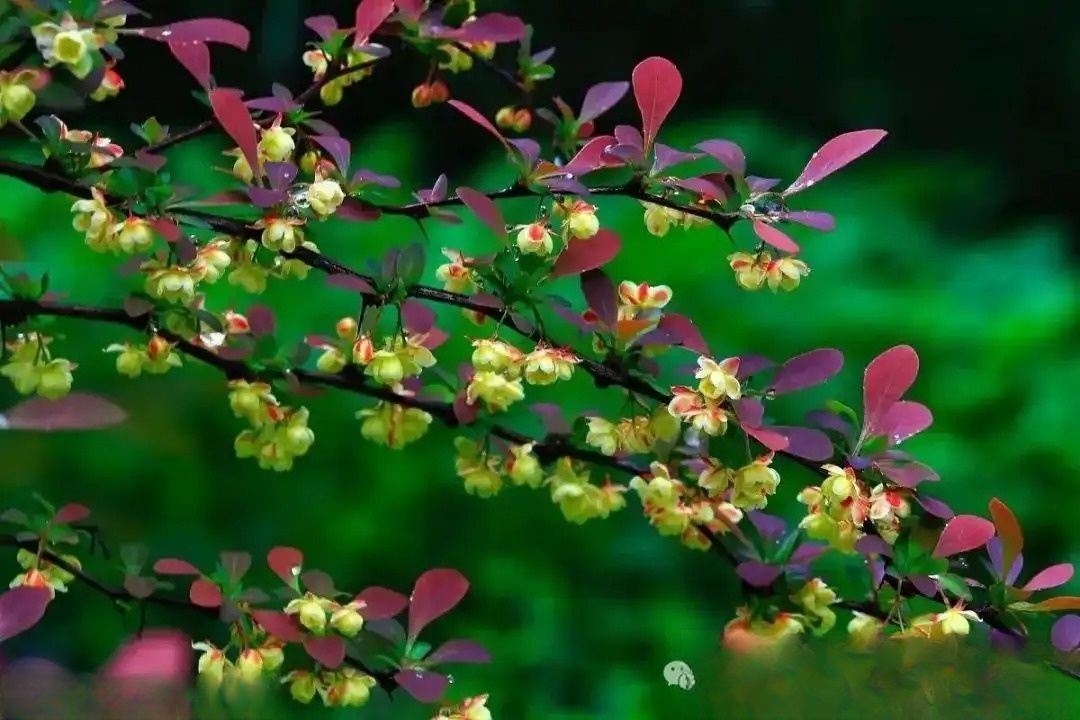
53. Platycladus orientalis: It is a tree of the genus Platycladus in the Cupressaceae family. Its scale leaves are alternately opposite and arranged in a plane, and the twigs are flat; the spore cones are monoecious, the cones mature in the same year, crack, and the seeds are wingless. It is a light-loving tree species, mainly distributed on the sunny and semi-sunny slopes of low mountains. It has weak wind resistance and grows poorly in windward areas. It can tolerate drought and barren environments and can grow in the cracks of steep slopes where ordinary tree species are difficult to survive. Platycladus orientalis plays an indispensable role in garden greening. It can be used for sidewalks, pavilions, both sides of gates, around green spaces, roadside flower beds, and inside and outside walls, all of which are very beautiful. The seedlings can be used as hedges and decorations for isolation belts and fences. It is a commonly used plant in urban greening. Platycladus orientalis has a strong tolerance to polluted air. It is planted in the center of the city street and on the roadside. It grows well, does not hinder the line of sight, absorbs dust, and purifies the air. Platycladus orientalis is planted under windows and beside doors, which has a great decorative effect. It is green in summer and winter green, does not block light, does not hinder vision, and is more lively in the snow. Platycladus orientalis can be planted in lawns, flower beds, rocks and under forests to increase the level of greening and enrich the aesthetics. Its pollution resistance, cold resistance and drought resistance are well utilized in the greening of the north.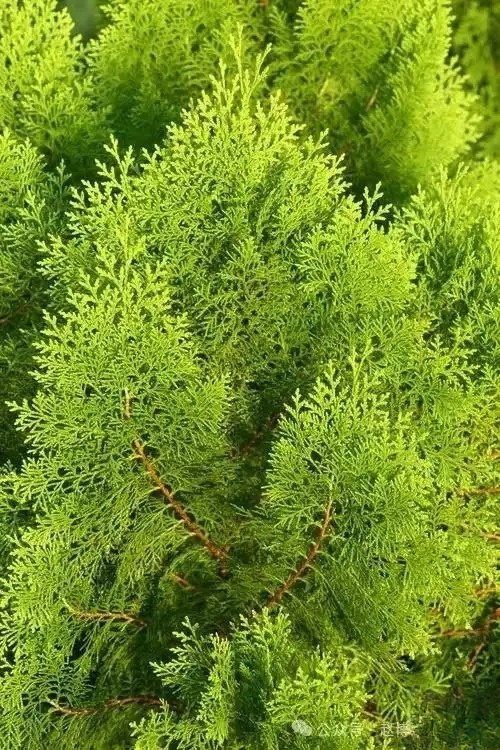
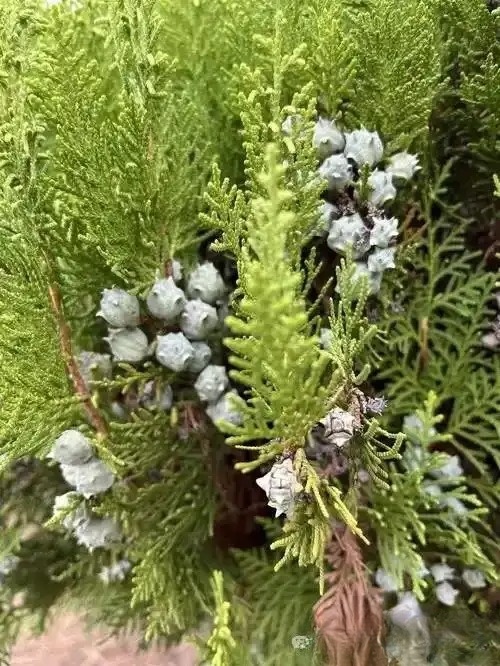
54. Cycas: Also known as fire-avoiding banana, iron tree, etc., it is a plant of the genus Cycas in the Cycadaceae family. The trunk is about 2 meters high, rarely 8 meters or higher. The outline of the entire pinnate leaf is obovate and narrowly lanceolate. The male cone is cylindrical, and the seeds are reddish brown or orange-red, obovate or ovate. The flowering period is June-July, and the seeds mature in October. It is a tropical and subtropical plant that likes a warm, sunny, dry and well-ventilated environment. Cycas is strong in nature, with a thick trunk, shiny pinnates, evergreen all year round, and large and strange flowers. It is a precious ornamental tree species, and those with short and thick leaves have high ornamental benefits. Its tree shape is simple, the trunk is thick, and it is as hard as iron, making it a good bonsai material. Cycas can be used as the main landscape tree or as a supporting tree. It can be planted alone, in rows, or in groups. It can also be planted in residential areas, parks and green spaces, around buildings, or placed in large halls, meeting places, and living rooms. In the south, it is mostly planted beside the steps and on the lawn in front of the courtyard. In the north, large plants planted in large pots or wooden barrels are mostly used to arrange the center of flower beds and flower stands, or placed in the square in front of large buildings and on both sides of the foyers. Cycas in medium and small pots are placed in the study and living room.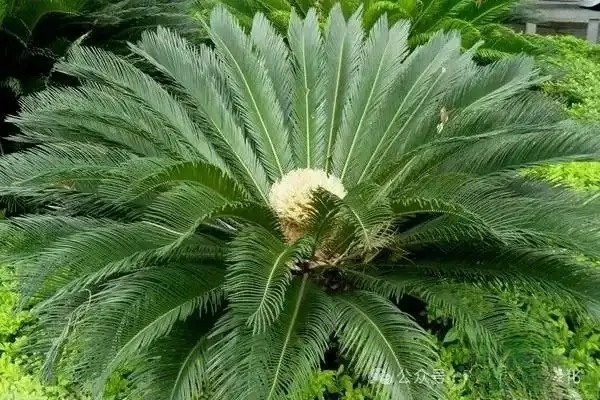
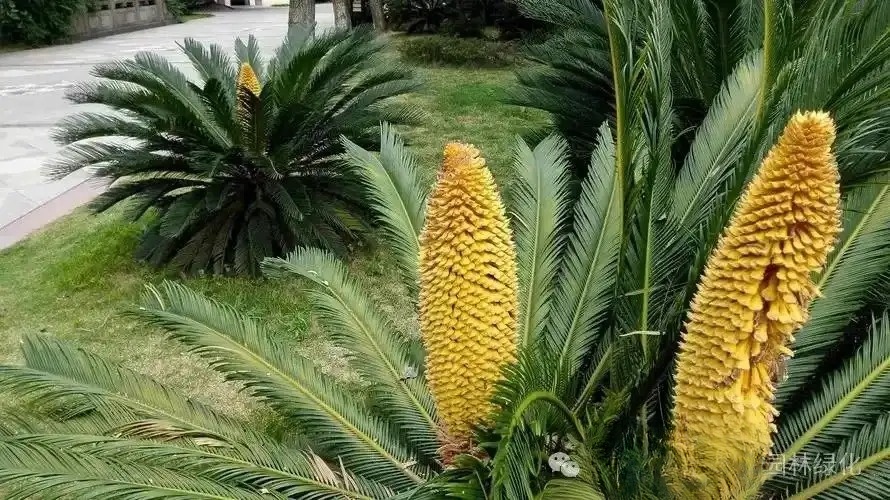
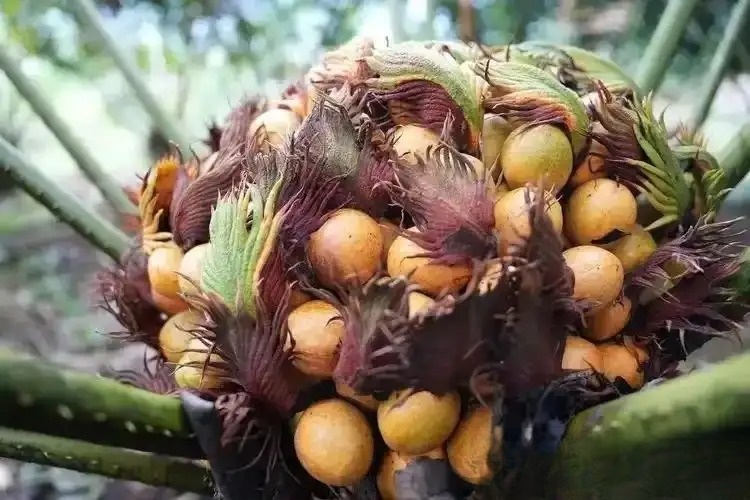
55. Japanese coral: a plant of the genus Viburnum in the family Viburnum, an evergreen shrub or small tree, about 10 meters high. The crown is obovate, the branches are straight, the bark is gray-brown, and has round lenticels. The flowering period is May-June, and the fruit ripening period is September-October. It likes warm and humid climates, and is light-loving and shade-tolerant. It is an ideal garden greening tree species, because it has strong resistance and absorption capacity to soot and toxic gases, and is especially suitable for urban hedges or garden landscape planting. It has a well-developed root system, strong germination ability, tolerance to pruning, and easy shaping. It is an ideal garden greening tree species, with strong resistance and absorption capacity to soot and toxic gases, and is especially suitable for urban hedges, green walls or garden landscape planting. It is a preferred tree species for airports, highways, residential greening, factory greening, shelterbelts, and courtyard greening.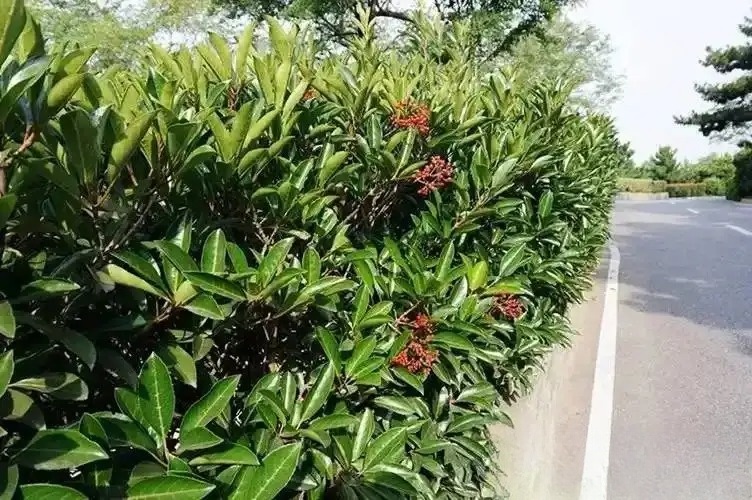
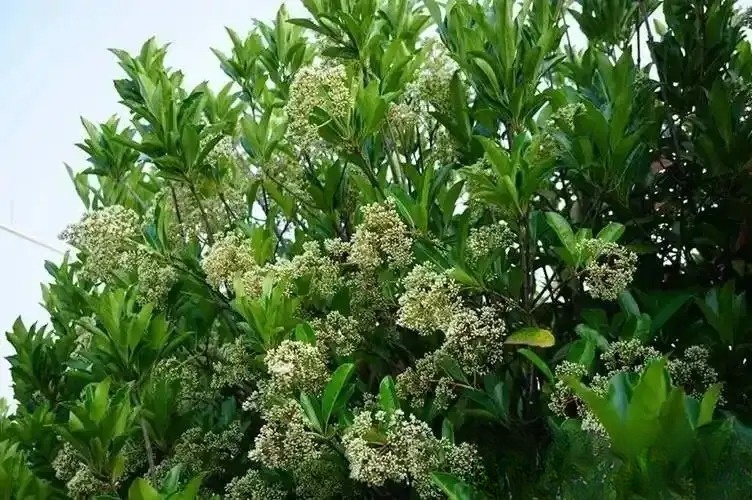
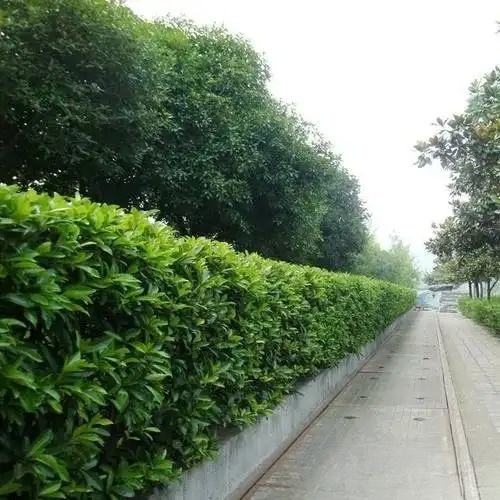
56. Phoenix tail bamboo: Poaceae, a variety of filial bamboo of the genus Bambusa. The plant is tall, with a stem height of up to 6 meters, the stem is hollow, the twigs are slightly bent downward, the lower part is straight, and it is green; an evergreen bush. It likes warm, humid and semi-shady environments. It has a slightly poor cold resistance, is not resistant to strong light exposure, and is afraid of waterlogging. It prefers fertile, loose and well-drained loam, and the winter temperature is not lower than 0 degrees. It is suitable for planting in the corners of the wall, the corners of the house, and beside the door in the courtyard. Smaller Phoenix tail bamboo plants can be planted on flower beds, and can also be made into bamboo bonsai. It is also planted in temple gardens. In the southern region, it is also widely used as a planting material for low hedges.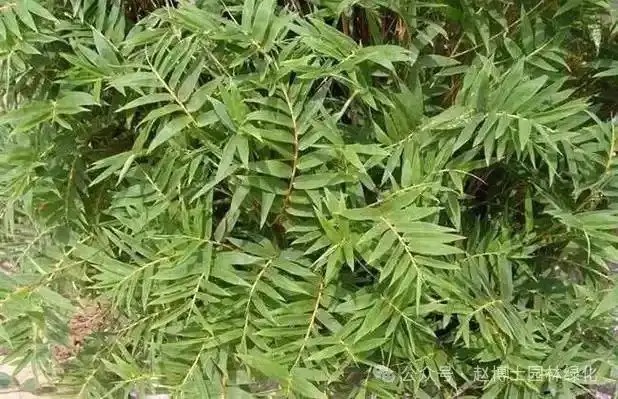
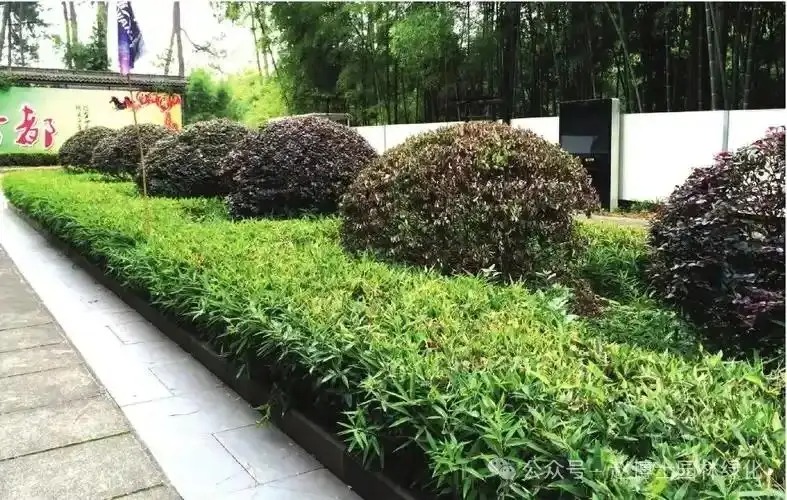
57. Prunus mume: A shrub of the genus Prunus in the Rosaceae family, which can reach a height of 0.5-1.5 meters. The branches are gray-brown or brown-brown, glabrous or with short soft hairs on the young branches; the flowers and leaves open at the same time or nearly at the same time, the pedicels are almost glabrous, the sepals are triangular-elliptical, and the petals are obovate and white or pink; the drupes are red or purple-red; the flowering period is March-April; the fruiting period is May-August; the light is relatively cold-resistant, drought-resistant, and water-resistant, and it is suitable for growing in moist, loose, well-drained sandy loam. Prunus mume is very beautiful, and is commonly cultivated and ornamental in gardens all over the country. It is suitable for lawns, roadsides, rockery sides, and forest edges. It can also be used as a basic planting, potted plant, or flower-inducing and cut flower material. It blooms before the leaves in spring, and the tree is full of brilliance, which is very beautiful. The leaves turn red in autumn, making it a very good garden ornamental tree.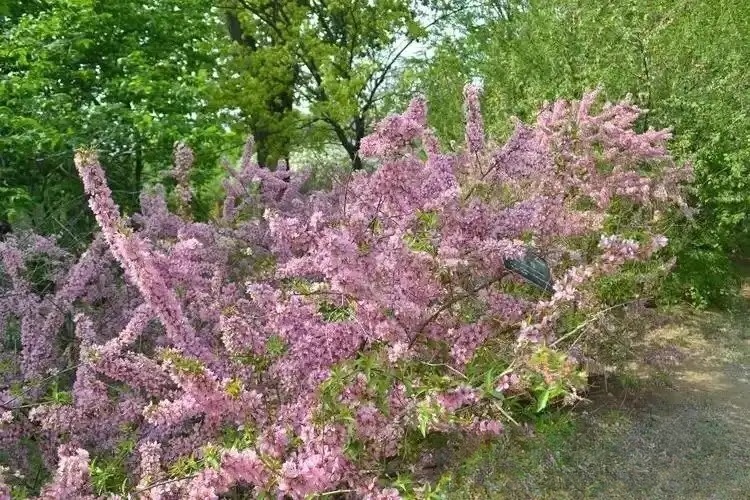
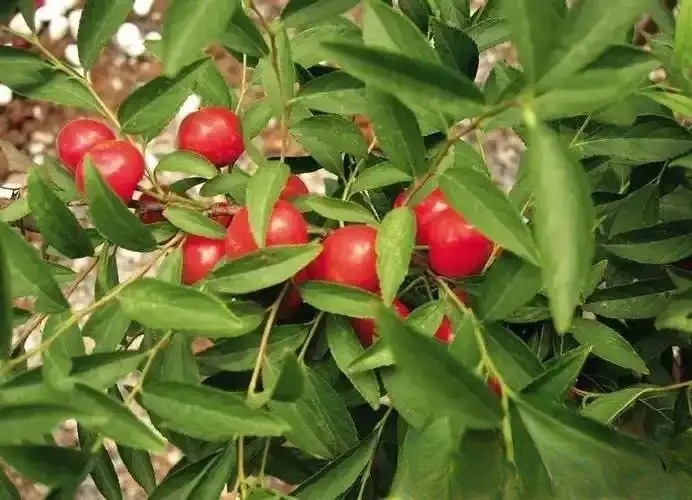
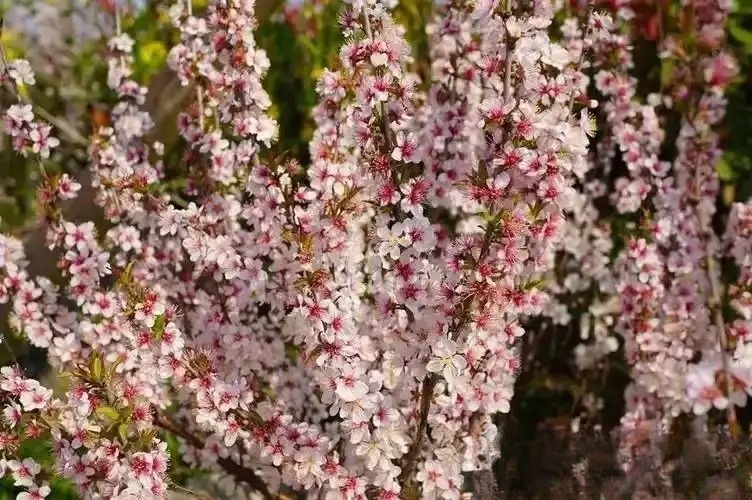
58. Rose: An evergreen or semi-evergreen low shrub belonging to the Rosaceae family. The leaves are pinnately compound, dark green and shiny on the surface and bluish-white on the back, and the hairless side has small stipules. The flowers are single and double, and the double petals are dark red and slightly rose-like. The flower color is mainly red, and other colors include white, yellow, pink, and rose red. The rose fruit is oval or pear-shaped, and red when ripe. The natural flowering period is from April to September. It has strong adaptability, is cold-resistant and drought-resistant. Although it is not strict with climate and soil requirements, loose, fertile, rich in organic matter, slightly acidic, and well-drained slightly acidic sandy loam is more suitable. It likes a warm, sunny, air-circulating environment and a warm and humid climate. Generally, 22~25℃ is the most suitable temperature for flower growth. Roses are indispensable in landscaping. Roses are the most used flowers in gardens in the north and south. Rose is the main ornamental flower in spring. It has a long flowering period, high ornamental value and low price, and is loved by gardens everywhere. It can be used to arrange flower beds, flower borders, and garden flowers in gardens, and can be used to make rose bonsai, cut flowers, flower baskets, bouquets, etc.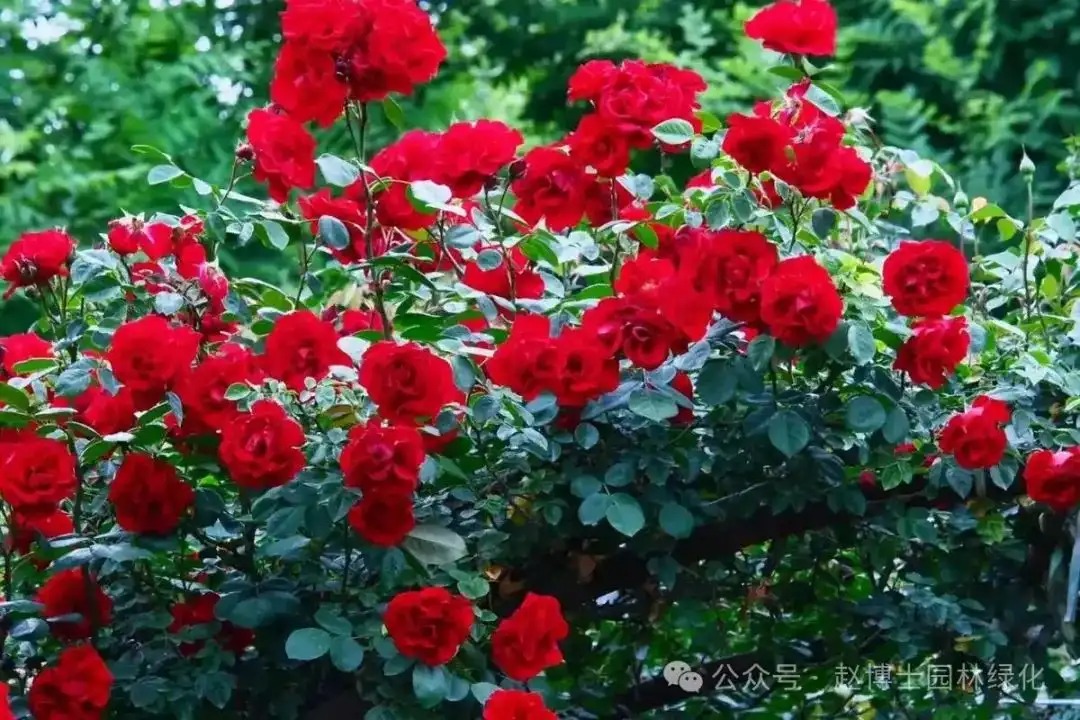
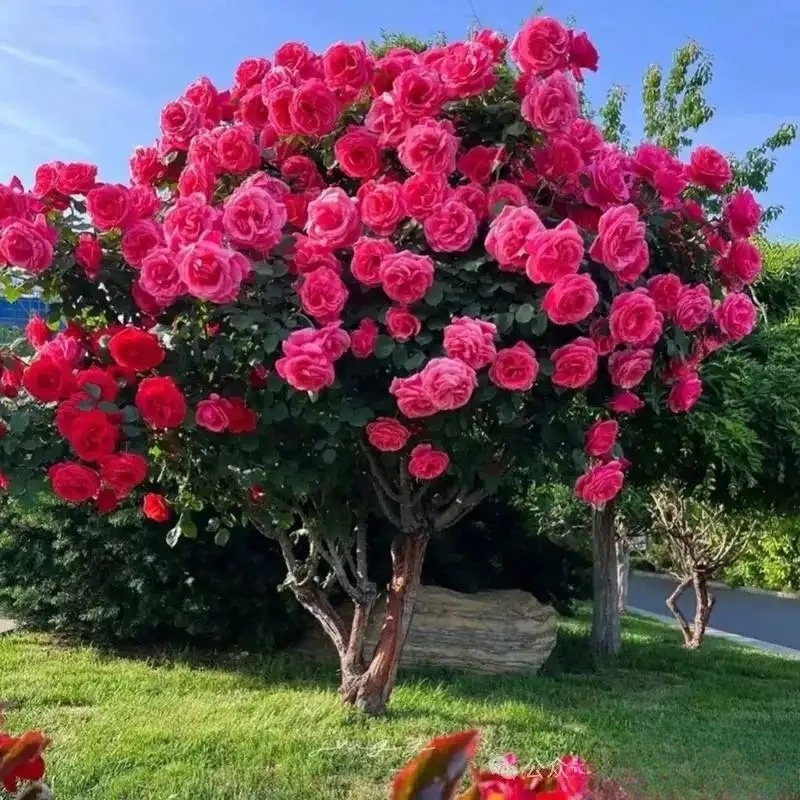
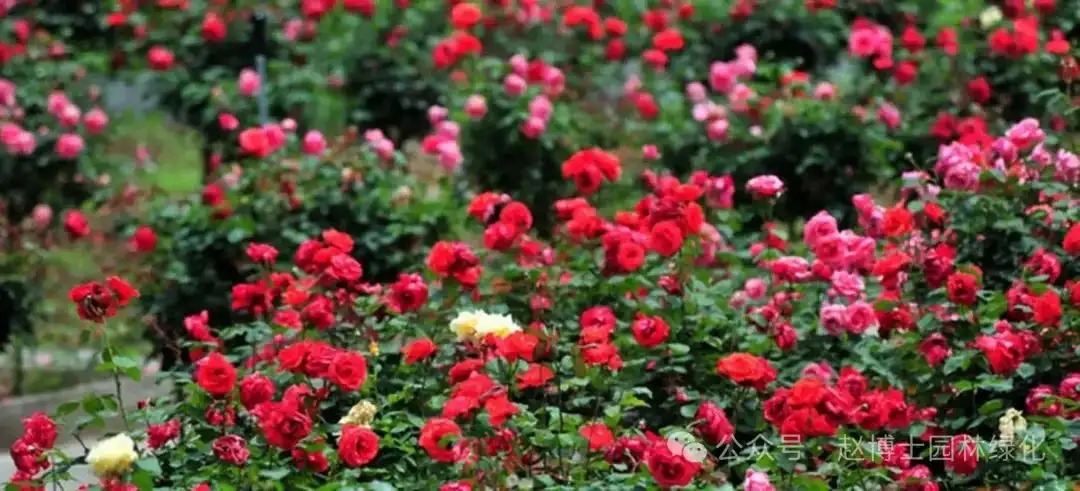
59. Ixora: Also known as Shandan, Maizimu, Jiangyingmu, etc., it is a shrub plant under the genus Ixora of the Rubiaceae family. The inflorescence is terminal, multi-flowered, in cymes, with short peduncles. The corolla is red or reddish yellow, 4-lobed, the lobes are obovate or nearly round, and the lobes are obtuse or rounded at the tip. The fruit is nearly spherical, twin, and red-black when mature. The seeds are long, convex on the top and concave on the bottom. The flowering period is May-July. Ixora is drought-resistant, likes high temperatures, is afraid of stagnant water, is not cold-resistant, and is slightly shade-tolerant. It is suitable for growing in loose, fertile, well-drained acidic soil. Ixora has a beautiful plant shape, bright red flowers, and can bloom all year round. It is a good greening plant in tropical and subtropical areas. Ixora is not only suitable for planting in courtyards and central flower beds, but can also be used as a path potted plant. It is an ideal indoor potted flower.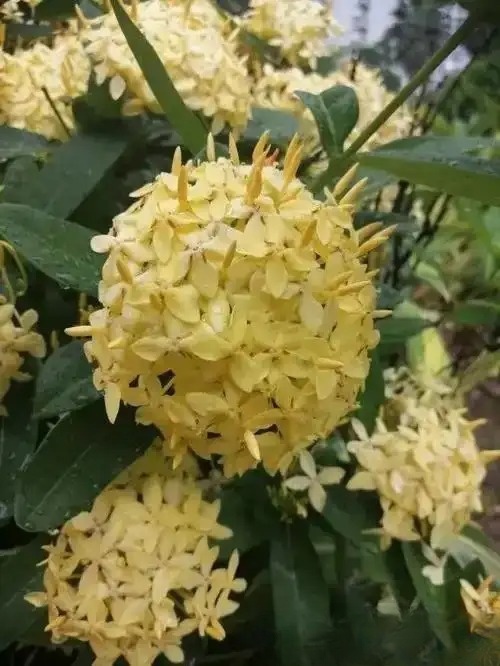
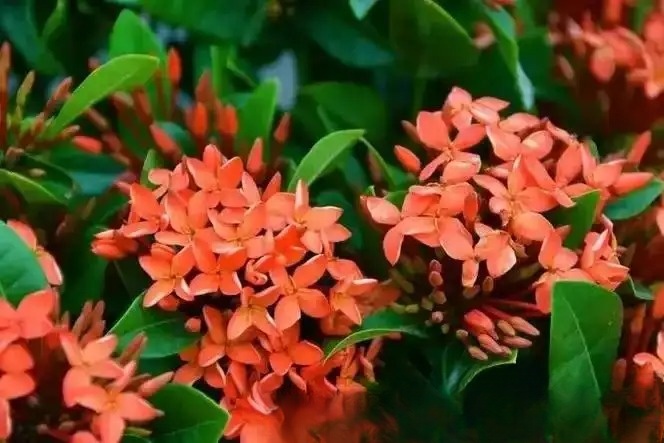
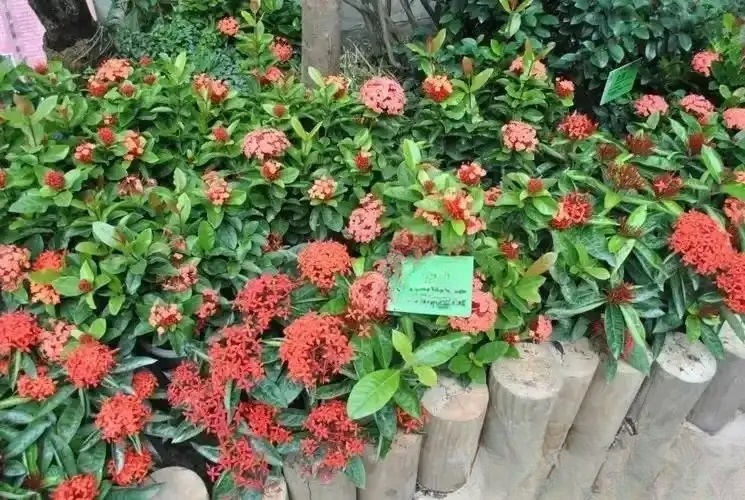
60. Myrtle: A shrub belonging to the Myrtaceae family, Dicotyledon class, [21] it can grow up to 2 meters tall; young branches are densely pubescent; leaves are opposite, elliptical or obovate; flowers are long-stalked, often solitary, purple-red, with round anthers; fruits are berries, ovate-pot-shaped, purple-black when ripe; flowering period is April and May. Myrtle grows on hilly slopes and is an indicator plant for acidic soil. It grows on hills with red-yellow loam. Myrtle has a compact plant shape and is evergreen all year round. Its flowers are white first and then red, and the red and white complement each other, making it very gorgeous. The flowering period is also relatively long. The fruit color changes from bright red to maroon, which is both ornamental. In landscaping, it can be planted in clusters, patches or solitary to decorate green spaces, which can achieve good results.